Audemars Piguet
A Retrospective on Shaped Watches
Deeply influenced by the rapid mechanical innovations in the early 20th century, Santos-Dumont would often toy around with hot air balloons and motor-powered dirigibles. In fact, he was the only person in Paris with a little flying machine tied to a lamp post in front of his apartment at the Champs-Élysées. He would hop onto his airship and casually land on rooftop bars and restaurants, impressing the city’s fashionable set like no one else. “Every night, he would fly this dirigible to Maxim’s for dinner. During the day, he’d fly to go shopping, he’d fly to visit friends,” recounts Paul Hoffman in his Santos-Dumont biography, Wings of Madness.
That autumn afternoon in 1901, as Santos-Dumont set off to be the first man to complete an aerial circuit from the Aéro-Club de France to the Eiffel Tower and back in under 30 minutes, he realised the futility of a pocket watch for aviators. The man nearly lost the Deutsch de la Meurthe contest and the prize money of 100,000 French francs all because he couldn’t keep time while piloting this journey.
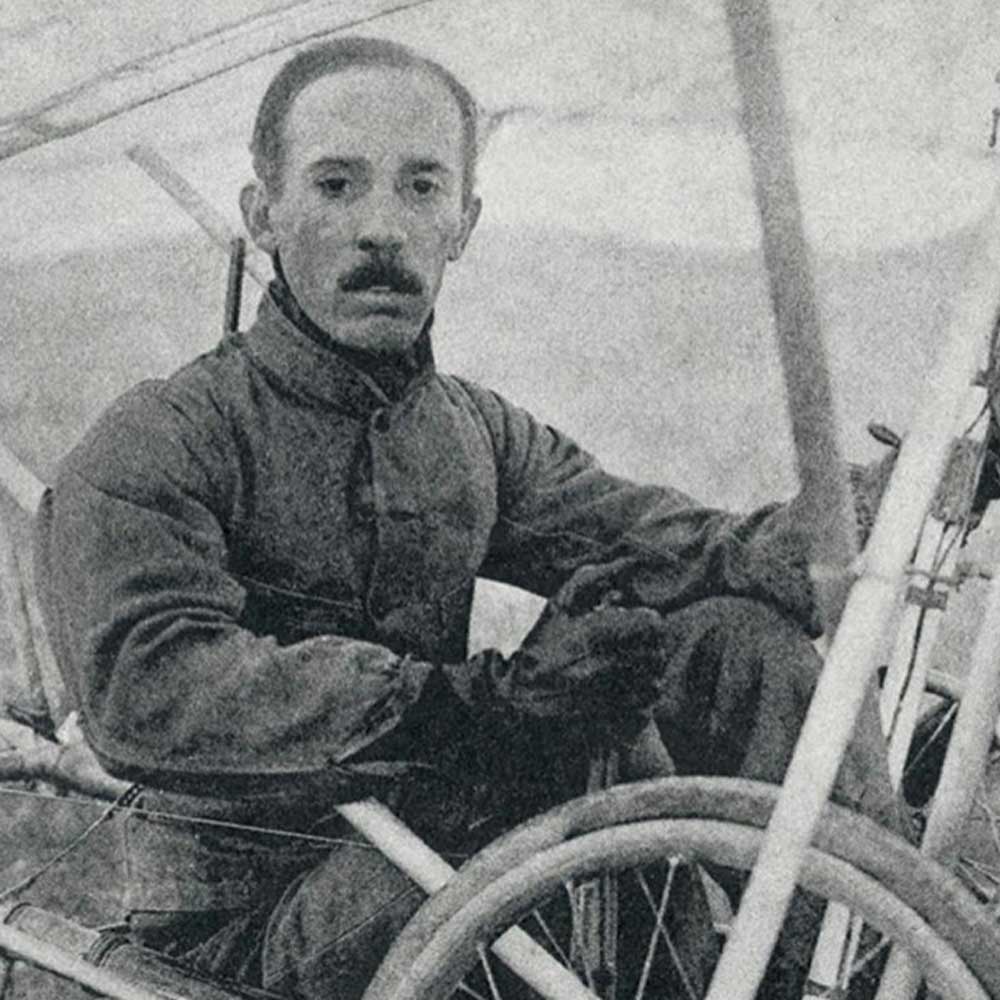
Louis Cartier created a robust, no-frills watch with leather strap for his aviator friend Santos-Dumont in 1904.
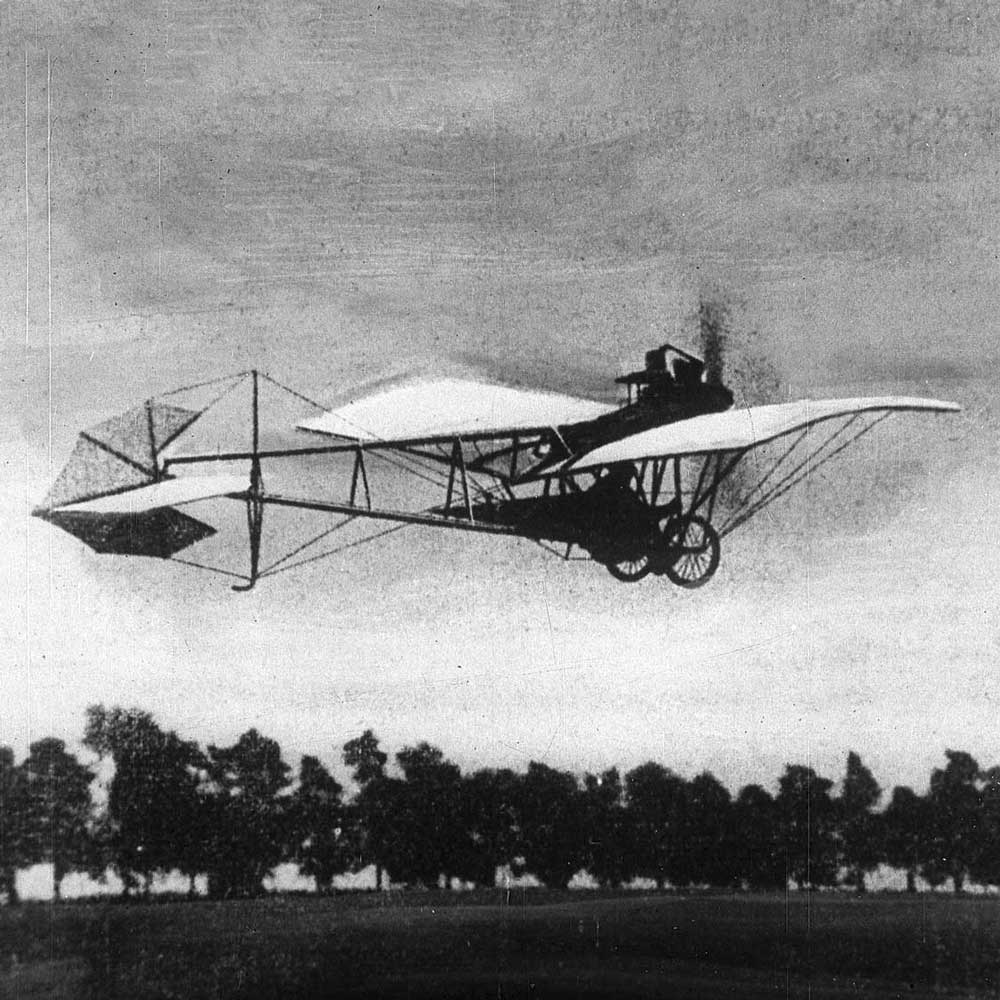
In 1901, Santos-Dumont set off to be the first man to complete an aerial circuit from the Aéro-Club de France to the Eiffel Tower and back in under 30 minutes in his La Demoiselle plane.
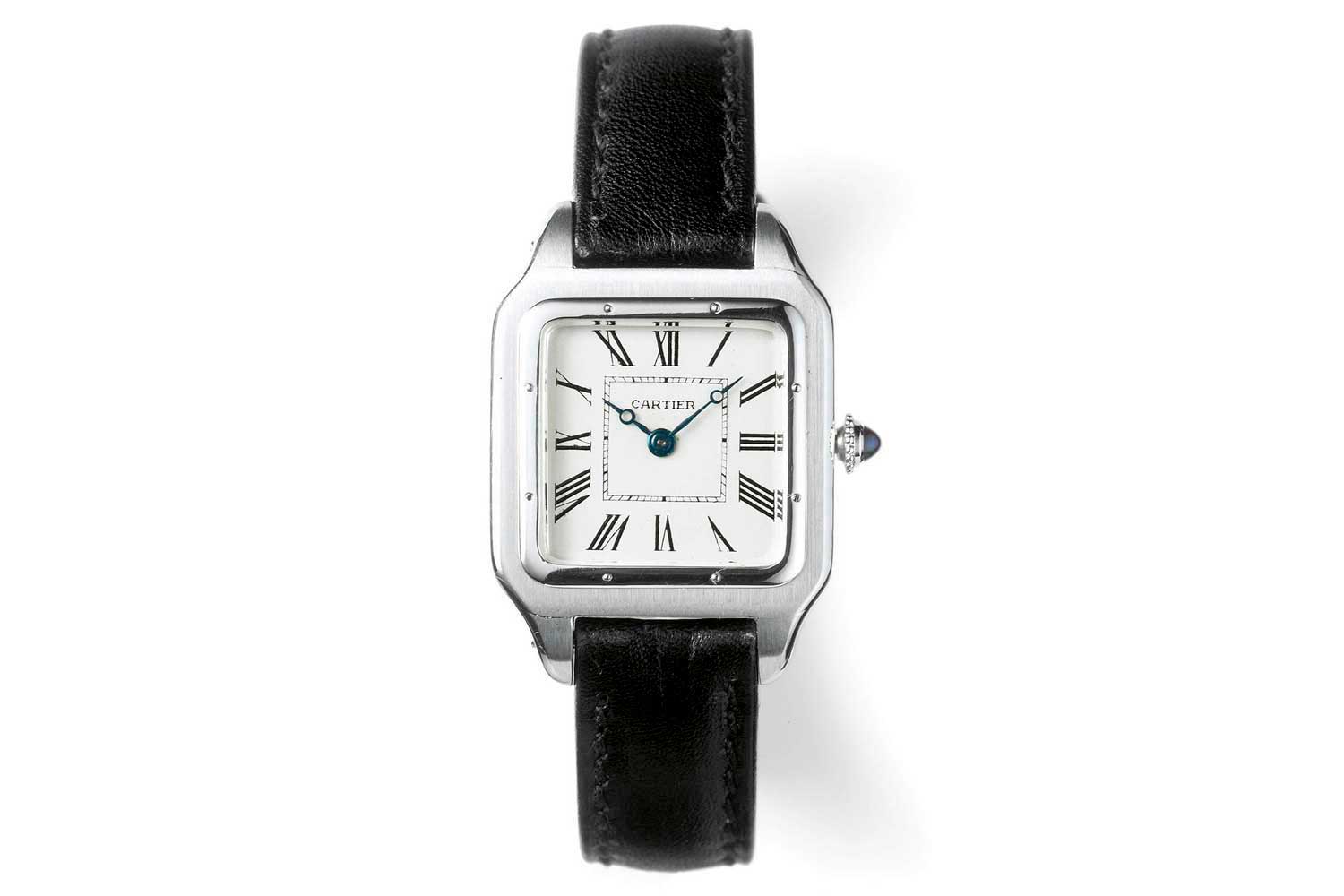
The Cartier Santos was the world’s first pilot’s watch and also the first square watch meant to be worn on the wrist.
While wristlets or bracelets with watches had started creeping into women’s wardrobe as early as the 18th century, the Cartier Santos was recognised as the first real wristwatch for men. It was the world’s first pilot’s watch and also the first square watch meant to be worn on the wrist.
In an era largely dominated by round pocket watches, Louis Cartier had presented a rather futuristic timepiece in a square case with rounded corners and a bold bezel with eight exposed screws. Inspired by the silhouette of the Eiffel Tower, the original Santos was a unique piece made for the Brazilian aviator in 1904. By 1911, Cartier had bestowed the name, “Santos-Dumont,” upon its super successful watch, which was now a full production model available in platinum and yellow gold in a 25mm × 35mm case.
The Rise of the Non-Round Watch
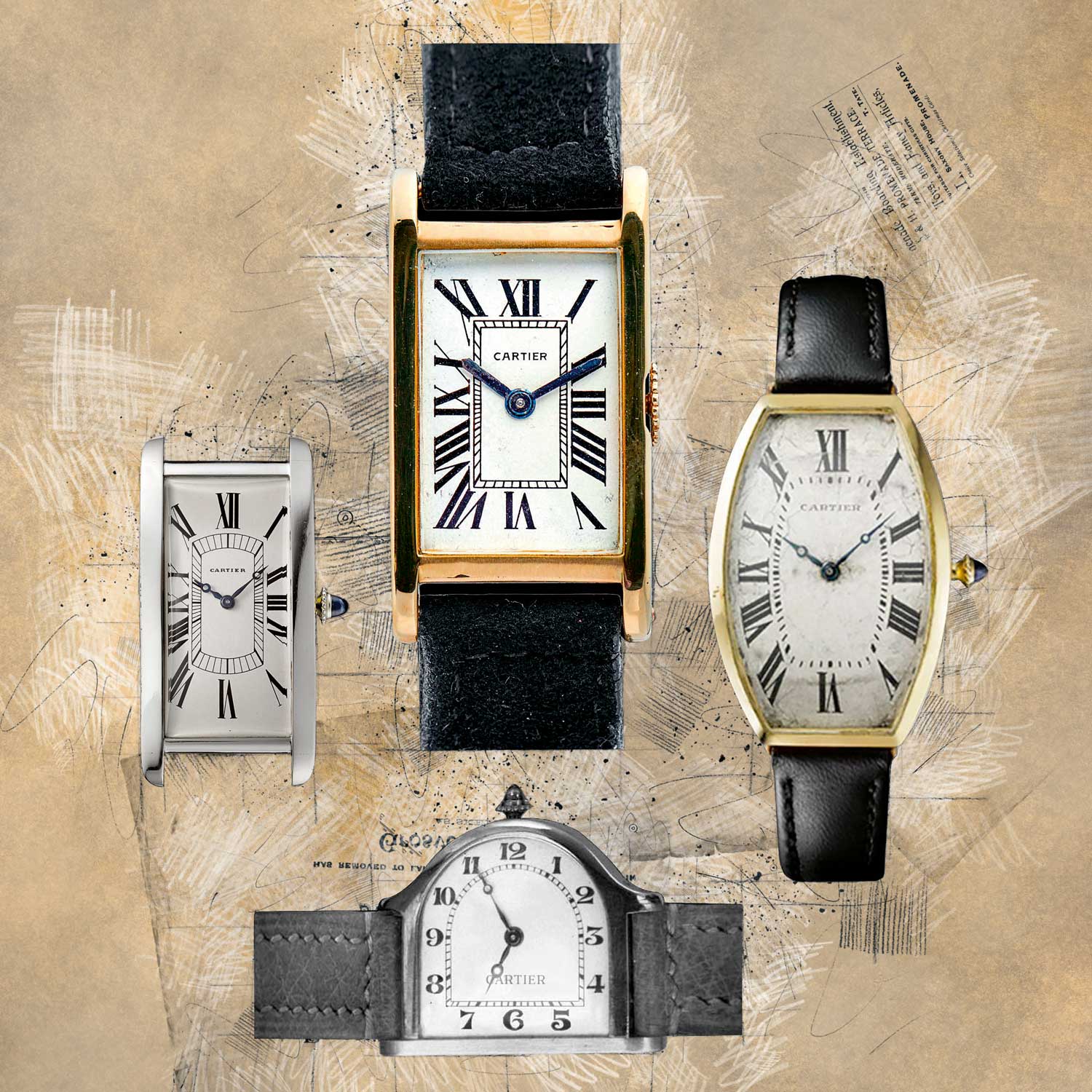
Louis Cartier’s unusual and elaborate case designs — right from Tonneau to Tortue — sealed the status of the wristwatch as one of the most defining accessories in the postwar era. Clockwise from top: An example of the Cartier Tank from the 1930s; Cartier Tonneau from 1908; Cartier Cloche from 1922; Tank Cintrée from 1924.
All this began to change as soldiers jerry-rigged pocket watches and strapped them on their wrists for synchronised artillery attacks. Two years into the First World War, the telephone and signal service made the wearing of watches obligatory. The evolution of the pocket watch gradually turned into a revolution by the Second World War, and after the wars, watchmakers clubbed utility with style, giving birth to timepieces used for diving, hiking, racing and hunting, among other adventures.
Buoyed by the success of the Santos, Louis Cartier was now getting more playful with his watch designs. Right from the Tonneau to the Tortue and perhaps the most iconic form watch of all, the Tank, Louis Cartier’s unusual and elaborate case designs sealed the status of the wristwatch as one of the most defining accessories in the postwar era. “In December 1916, the French public had its first glimpse of the tanks used in the war when one appeared looming terrifyingly above a soldier on the front cover of L’Illustration magazine. Cartier’s new watch was said to have been inspired by these mighty machines with the watch’s brancards … mirroring the tank’s caterpillar treads on each side of the machine’s cockpit. For Louis, the watch was not simply about telling the time, it had also to marry function and beauty in a harmonious whole, and the innovative design meant that the strap could be seamlessly integrated into the case,” writes Francesca Cartier Brickell in her book, The Cartiers: The Untold Story of the Family Behind the Jewelry Empire. “Calling the watch the Tank was a stroke of genius from a sales perspective.It instantly tapped into the public’s mood … The Tank’s simple geometric design already appealed to the male aesthetic, but Cartier pushed the macho angle even further … Cartier named their new creation le Tank.”
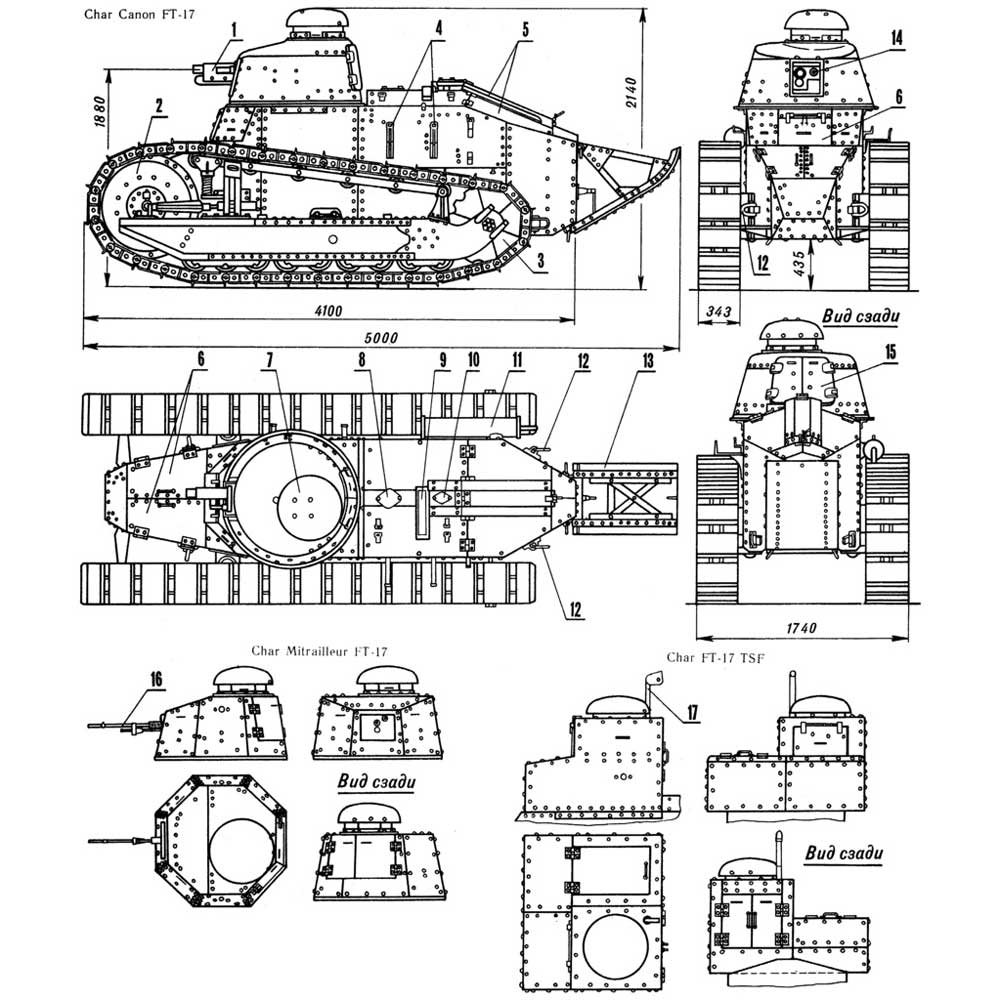
A sketch of the Renault armoured tank that inspired the design for Louis Cartier’s Tank watch
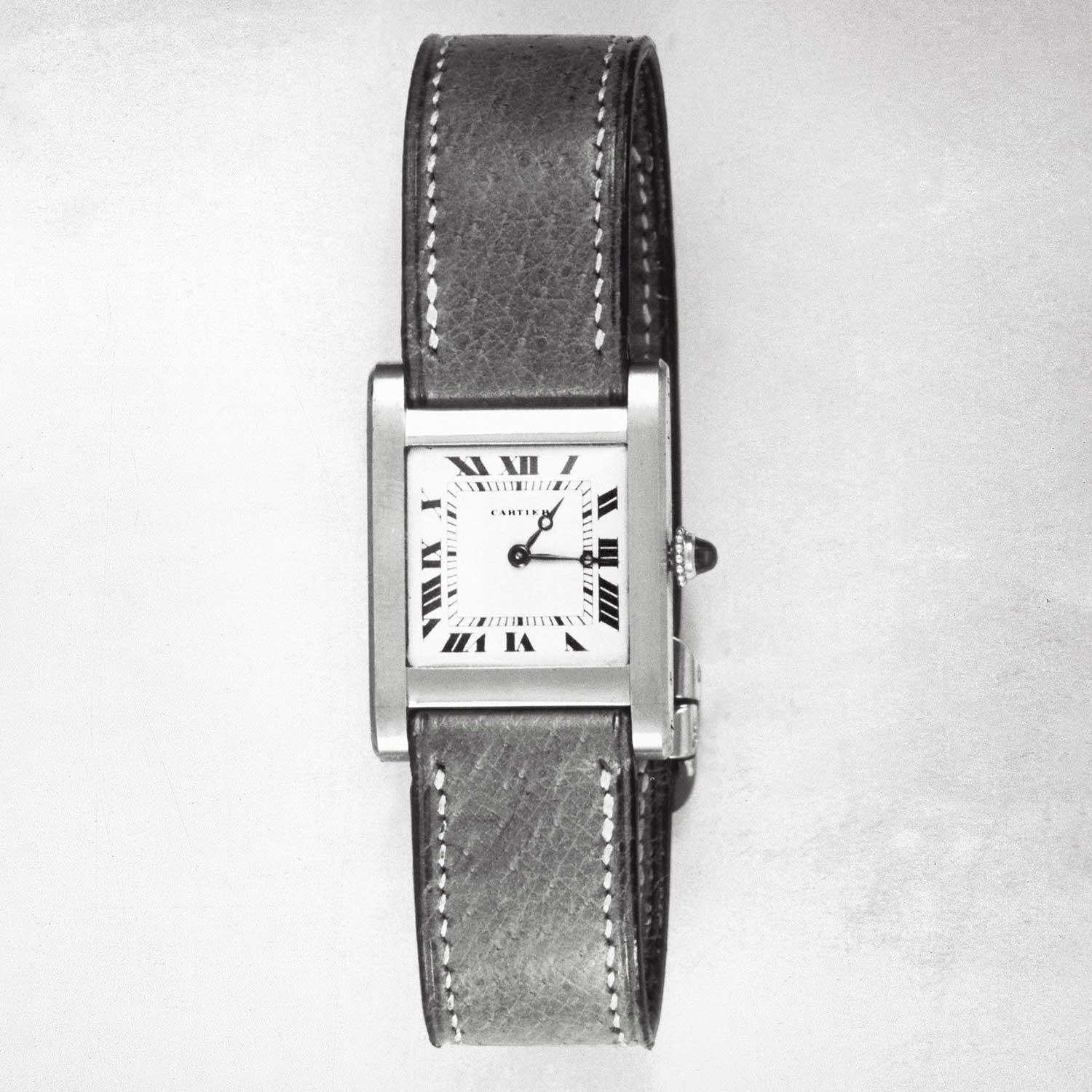
The original Cartier Tank from 1919
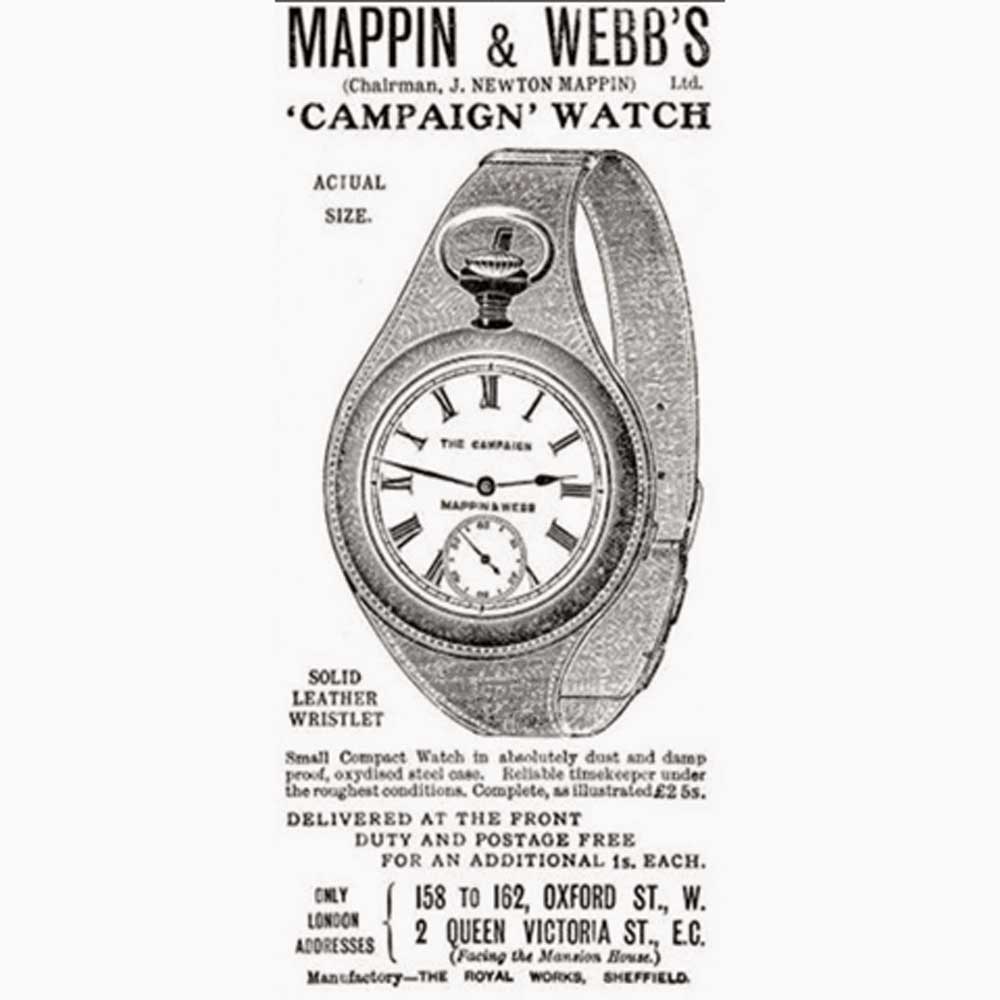
An old advertisement for a wristlet
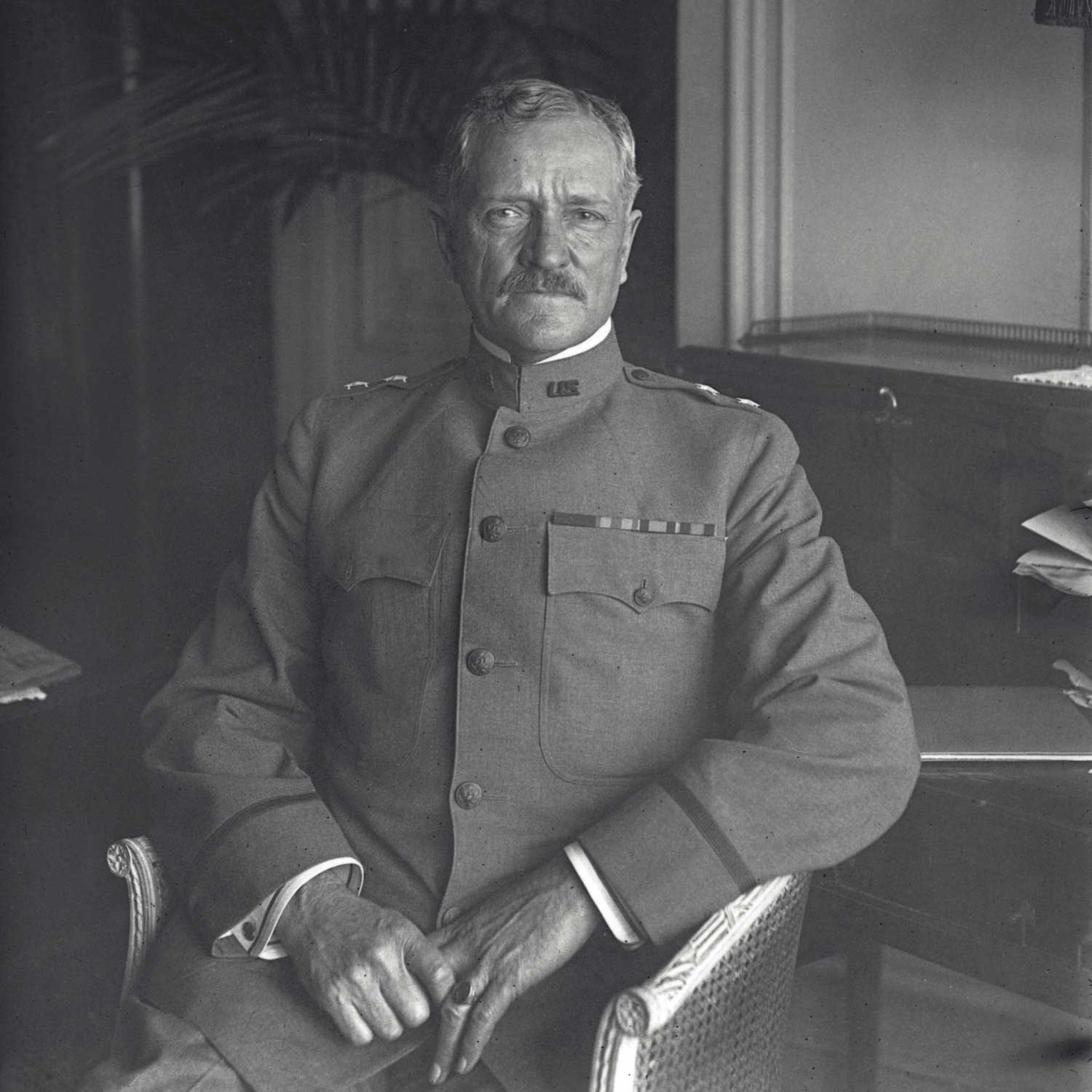
General John Pershing, one of the very first owners of the Cartier Tank
Overturned by the war between 1914 and 1918, the traditional notions of design gave way to a new, unbridled spirit of creativity in the 1920s. The Roaring Twenties, or “The Crazy Years”, as they were known in France, brought about a dynamic cultural change across the world. Thanks to cinema, radio, airplanes, high speed trains and fast cars, life was now all about embracing an exhilarating change.
Just like air travel which tickled popular fantasy in the beginning of the century, wristwatches in varying shapes and dimensions were now becoming the new norm. “Between the introduction of the wristwatch from the pocket/pendant style in the 1920s to the early 1930s, when it became more than half of the annual output of the Swiss watchmaking industry, there was this handover period when all sorts of weird and wonderful case shapes showed up. These designs demonstrated the difference to and distance from very old-fashioned watches. They presented a totally new way of telling the time and, to demonstrate the novelty even further, they adopted curious shaped cases. The best example of this is Cartier, which introduced different versions of the Tank — the Louis Cartier, Tank Chinoise, the Obus, Tank a ̀ Guichet, Tank Basculante and the Asymétrique,” says Nick Foulkes.
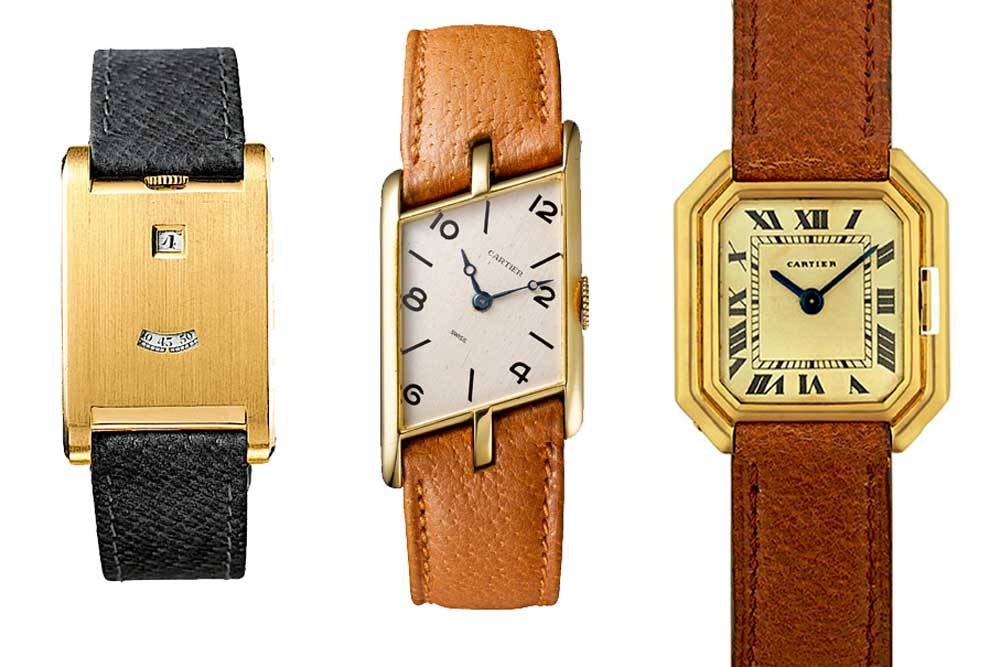
Between 1904 and 1936, Louis Cartier fostered the reputation of shaped watches as groundbreaking style statements with his strong, individualist designs. Seen here (from left) Tank a ̀ Guichet from 1928, Tank Asymétrique from 1936 and Cartier Ceinture from 1927.
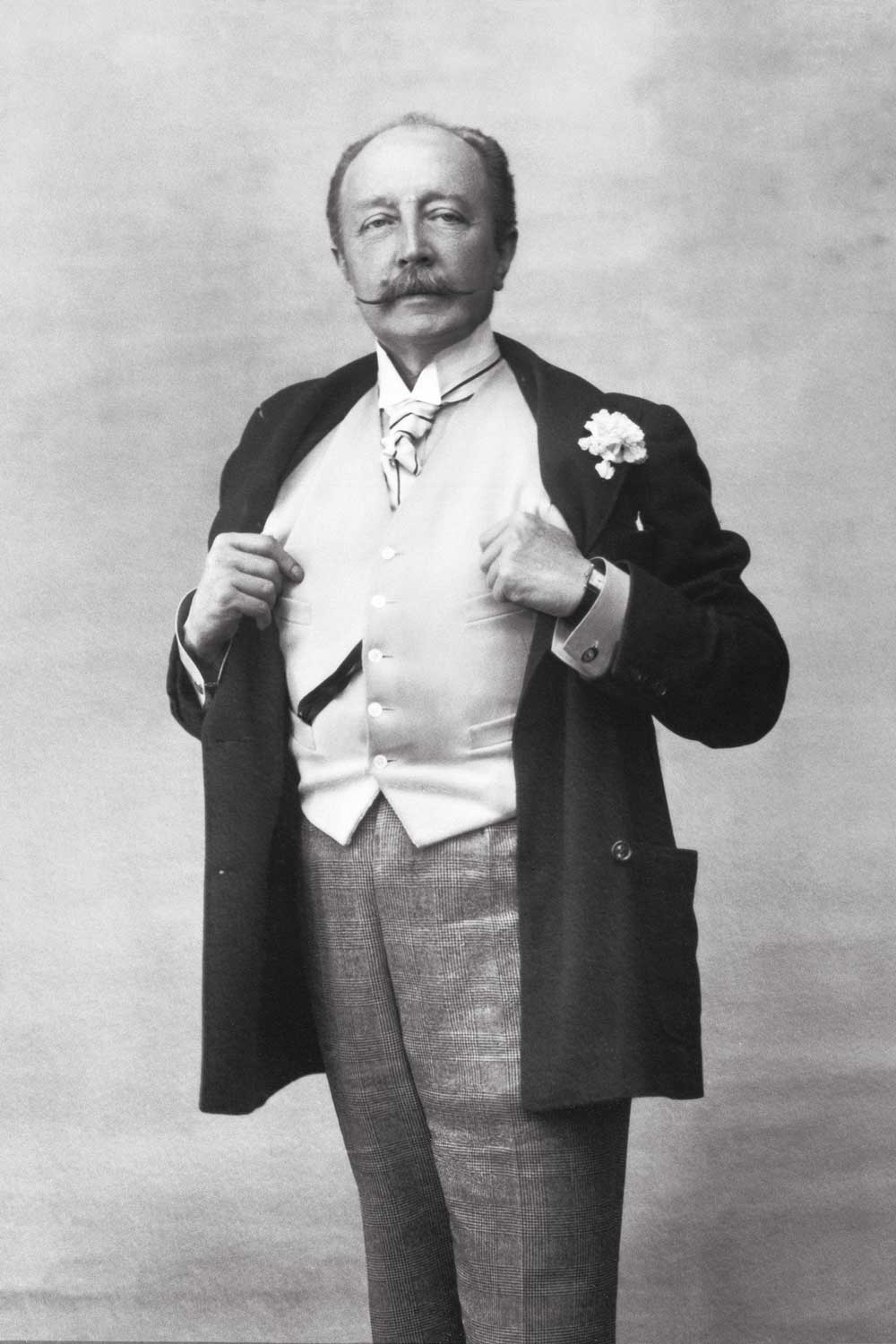
Boni de Castellane, a dandy Belle Époque art dealer wearing the Tank given to him by his friend, Louis Cartier in 1918.
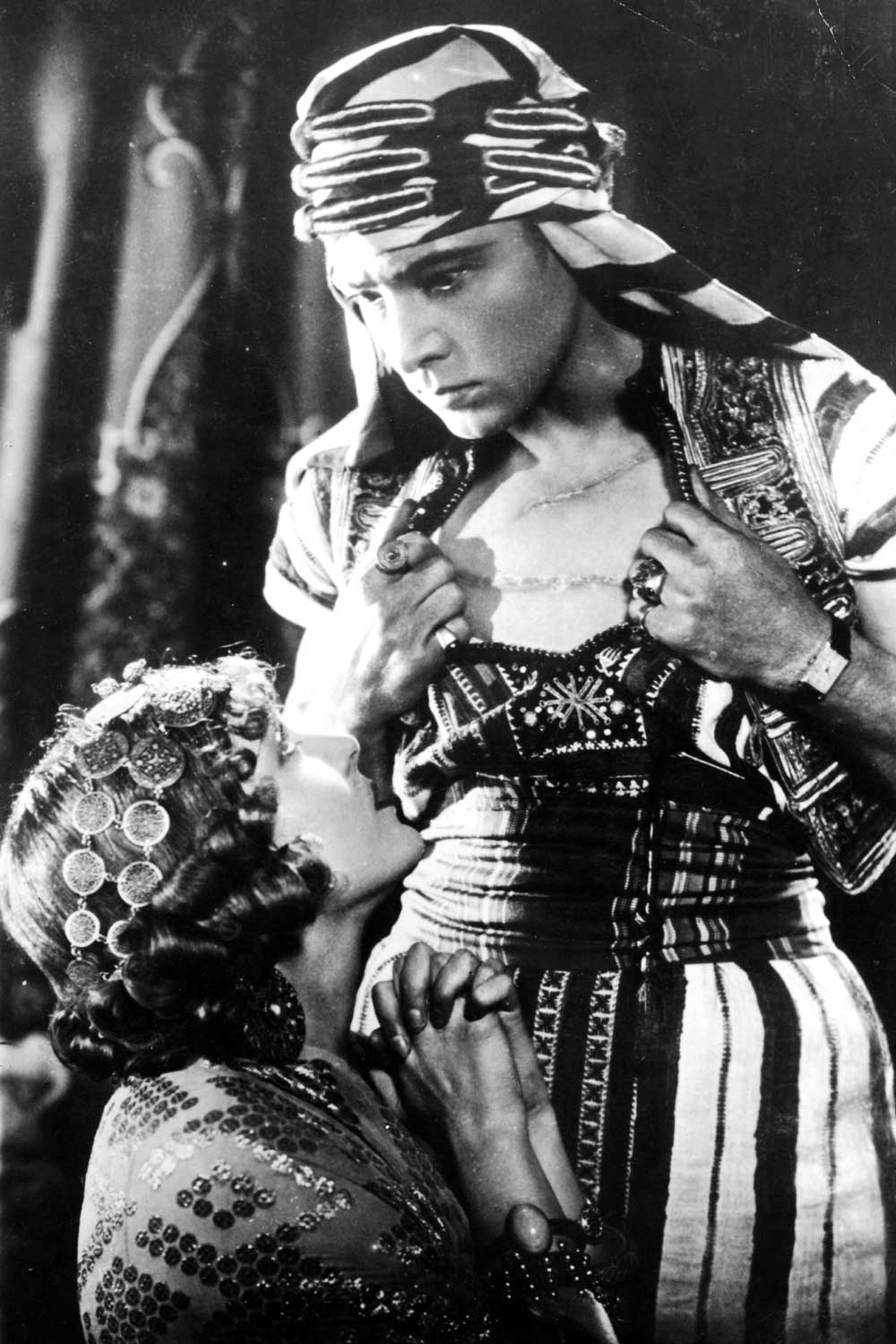
Vilma Banky and Rudolph Valentino in the 1926 film, Son of the Sheik where Valentino insisted on wearing his treasured Cartier Tank during the filming.
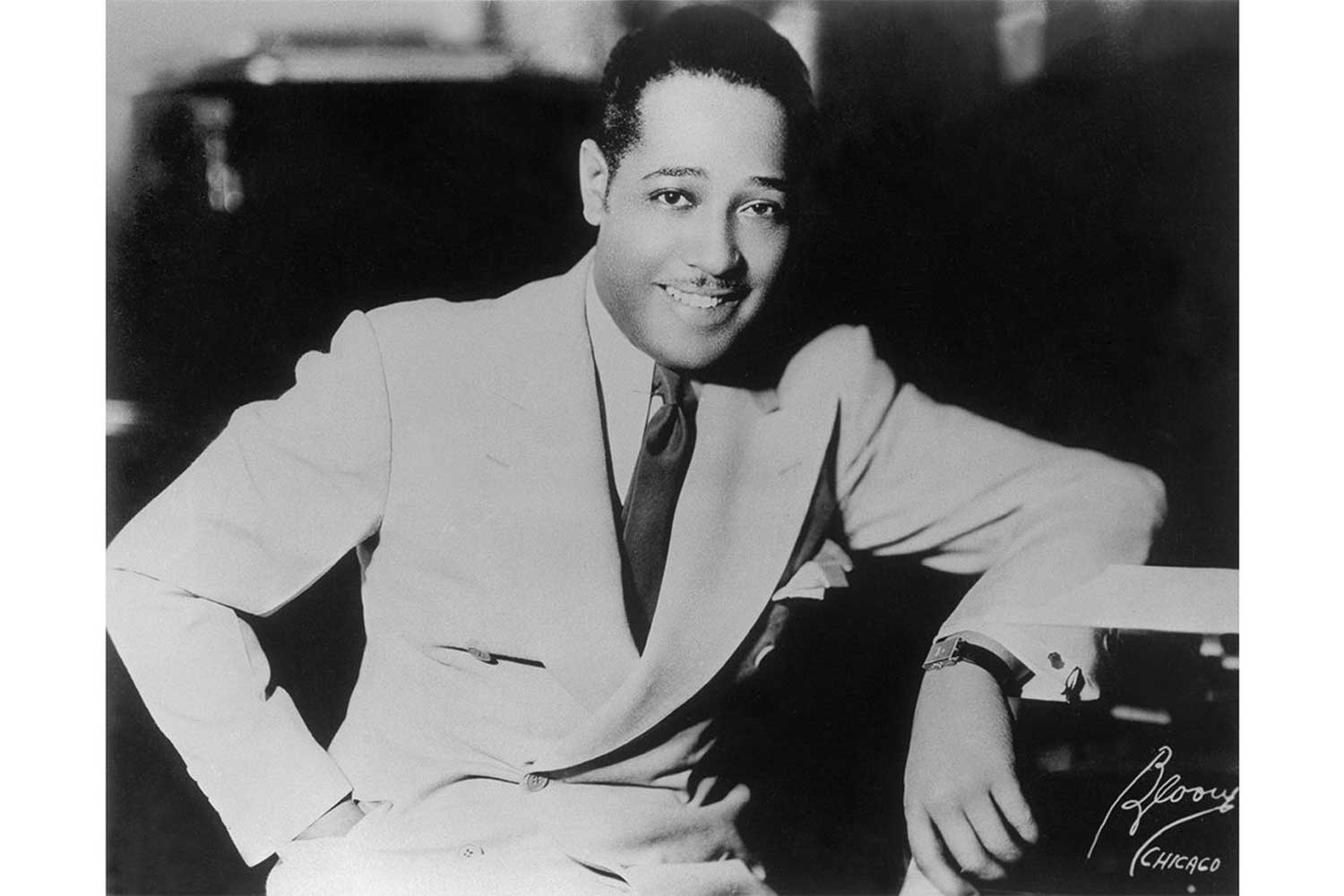
Duke Ellington wearing a Tank à Guichet watch circa 1930.
As the years progressed, Louis Cartier worked towards making these shaped watches more adaptive to the wrist with their curved and incredibly thin cases. In 1921, Cartier created his second Tank watch, the Tank Cintrée. “No watch in the collection was so curved and built as slim as the Tank Cintrée. Over the years, there have been many different versions; not only dials, but also models with different dimensions. However, the watch was always released in small editions of 50 to 100 pieces. The Tank Cintrée is by far the most elegant, most desired Tank watch in the Cartier collection and can be called the gentleman’s Tank,” says Cartier collector and scholar George Cramer.
According to Revolution’s founder Wei Koh, Cartier sourced a very special movement for the Tank Cintrée from Edmond Jaeger. “Jaeger designed an incredibly thin movement to make the design possible. In Cartier-speak, it is the calibre 123. It is round in shape and features 18 jewels, a Swiss lever escapement and a Breguet overcoil hairspring. But if you look at how it sits just behind the curved dial of the Tank Cintrée, you can see that there is barely a fraction of a millimetre to spare as it nestles inside the aggressively curved case. Later, Cartier and Jaeger would create the European Watch and Clock Company as the movement maker for Cartier’s watches, and so many of the calibres in the Tank Cintrée are signed with the acronym EWC,” he explains in his extensive story on the Tank Cintrée in this story.
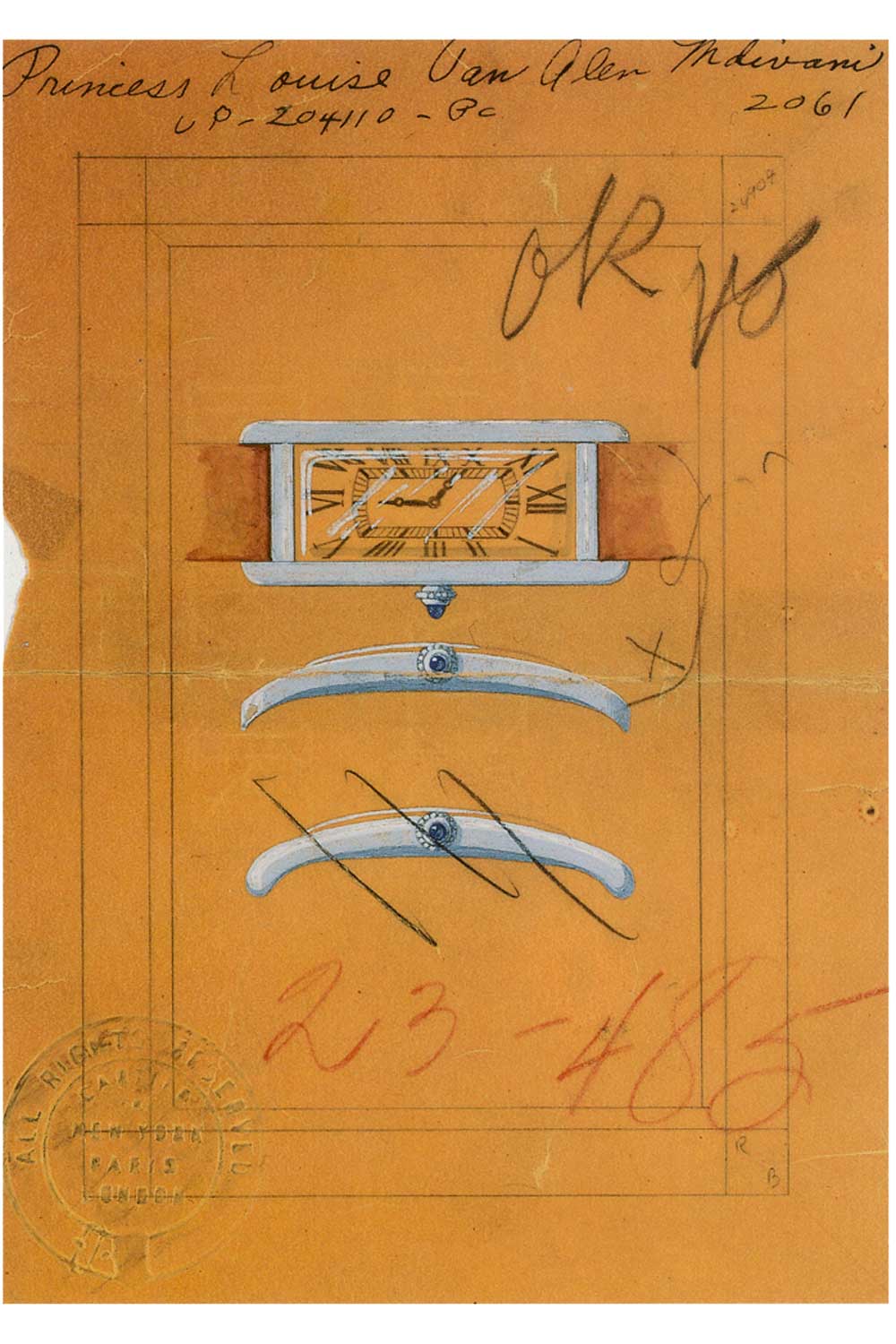
Drawing for a Tank cintrée wristwatch made for Princess Mdivani, born Louise Van Alen, Cartier New York, 1935 (©Cartier)
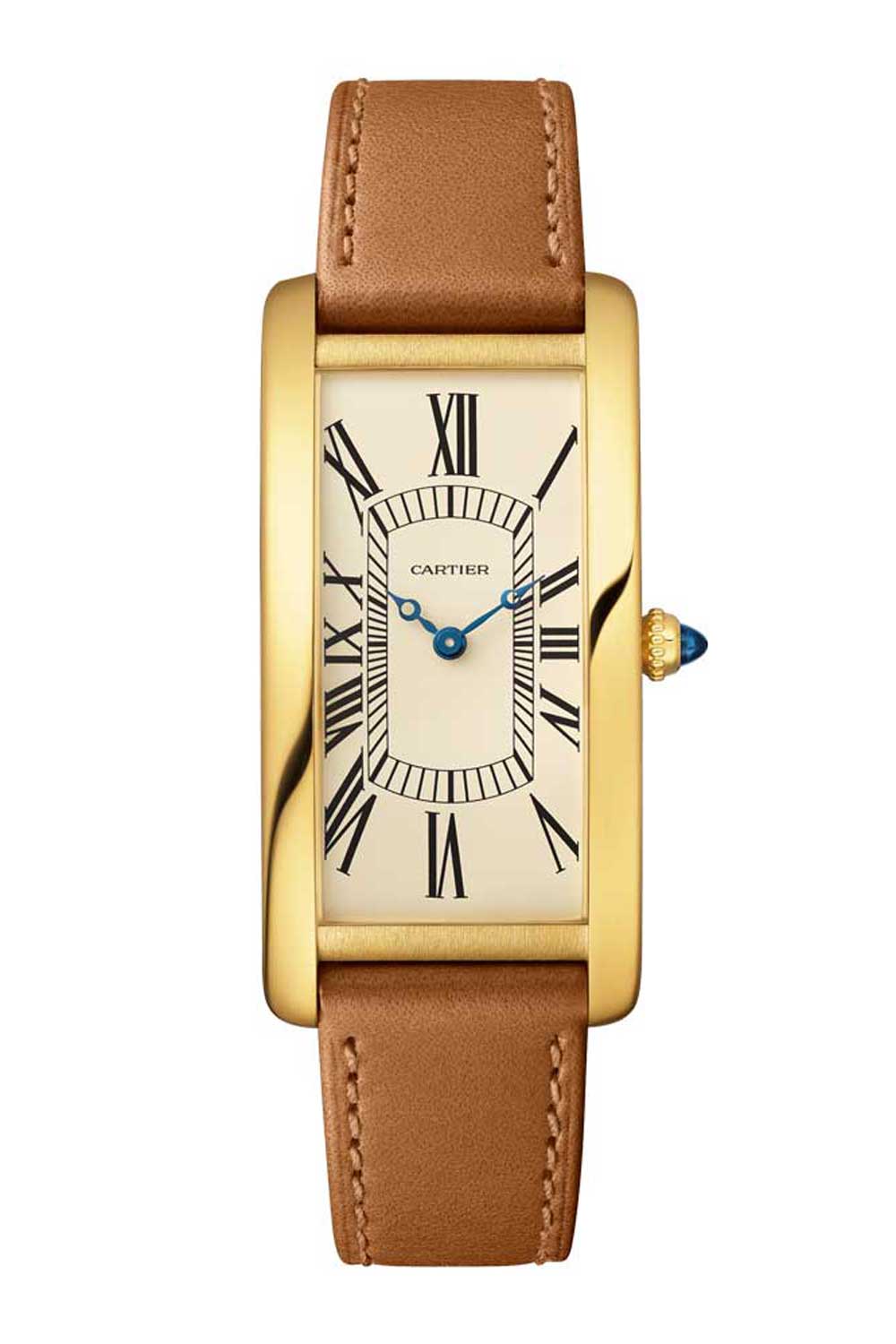
A 150 piece limited edition of the Tank Cintrée in yellow gold was launched completely under the radar and sold directly to customers earlier in January 2021.
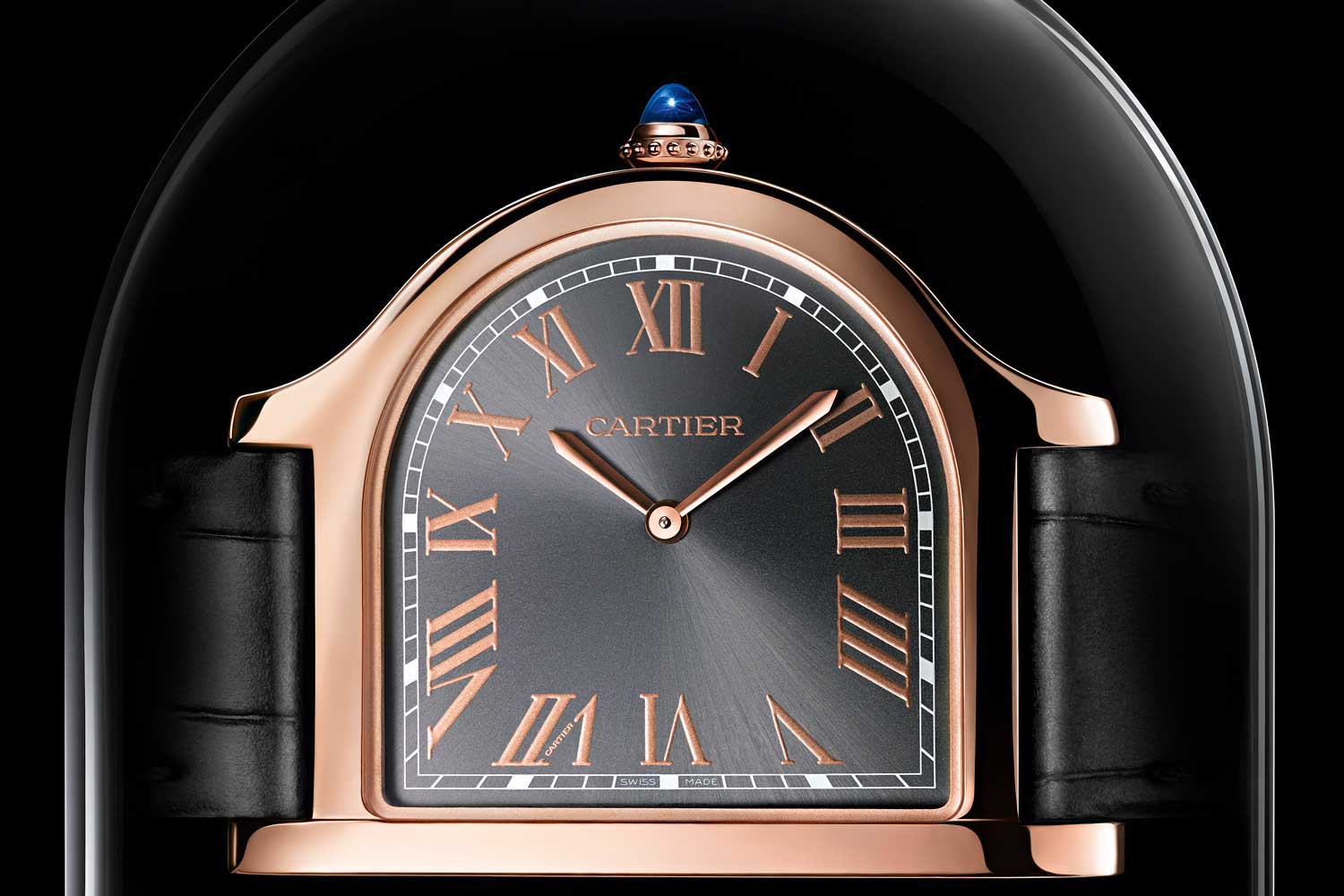
The bell-shaped Cartier Cloche from 1922 made a comeback as a limited edition series this year.
It is fascinating to see how these century-old designs still resonate with collectors. “In the 1920s and 1930s, brands such as Cartier, Vacheron Constantin and Patek Philippe released important watch models that have been ignored in recent years, especially from the time when watches had to have a large and masculine appearance. I am very happy that we are finally realising how good these designs from previous years actually were,” says Cramer, who considers the Tank Asymétrique and the Crash as the two most significant shaped watches from Cartier.
Timeless Modernity
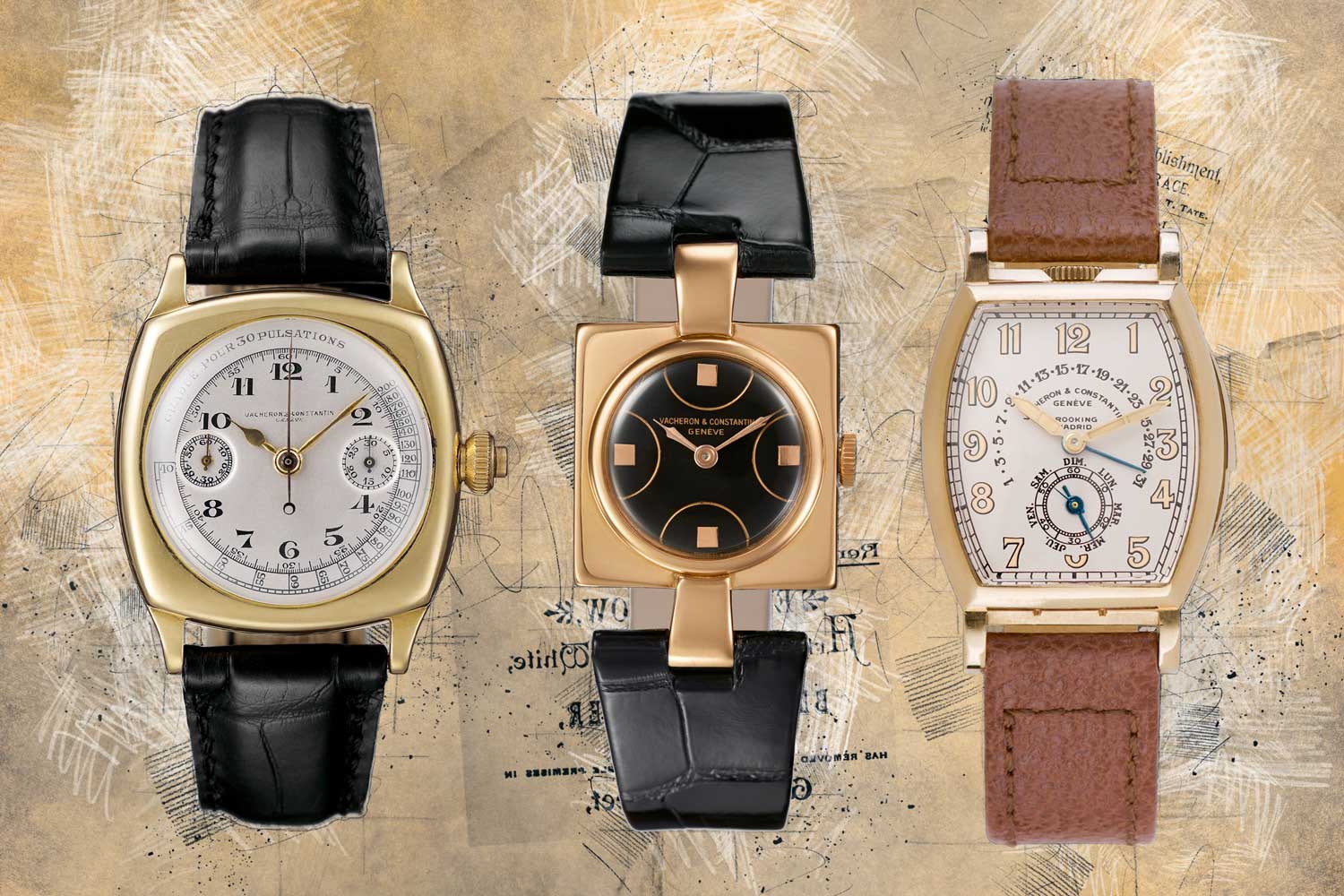
Vacheron Constantin presented some of the most playful designs in the early 20th century. Seen here is the cushion-shaped single-pusher chronograph wristwatch ref. 11059 from 1928, the ref. 3087 from 1937 and “Don Pancho” or ref. 3620, a unique, tonneau- shaped minute repeater with day and retrograde date made in the late 1930s.
This year, Vacheron Constantin is celebrating 100 years of its most famous cushion-cased watch, the American 1921, with a unique piece made using manual techniques from the 1920s and earlier. An exact replica of the original watch that had inspired several models in the Historiques collection, the new model in 3N yellow gold is equipped with a movement that is a faithful reproduction of the original 11-ligne Nouveau calibre, built from scratch with both new and vintage parts.
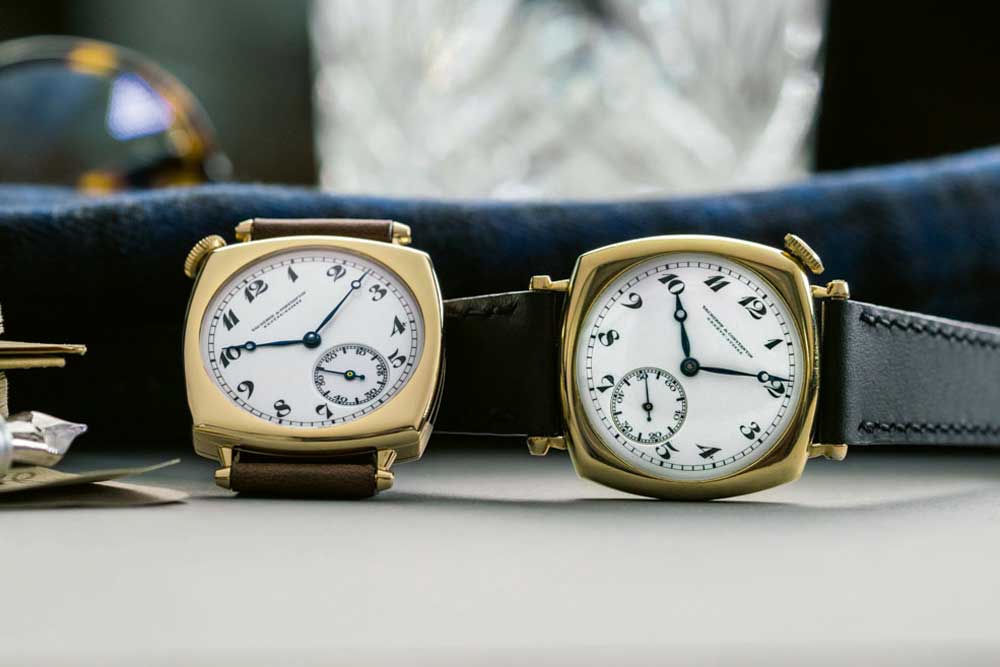
The Vacheron Constantin American 1921 Pièce Unique with a brown strap (left) and the original American 1921

Christian Selmoni, Vacheron Constantin’s style and heritage director.
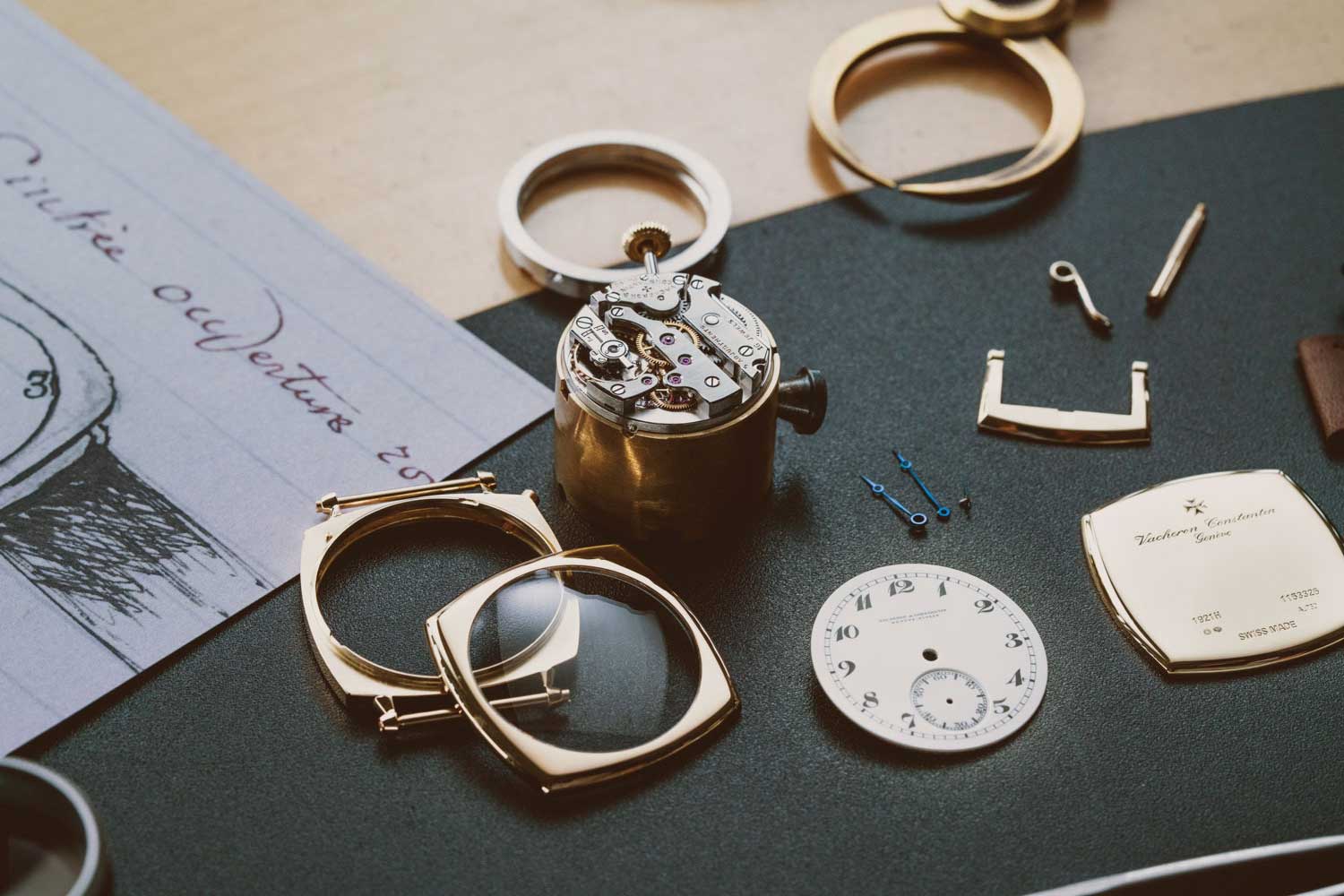
For Vacheron Constantin, the first three decades of the 20th century were marked by the ‘cushion shape.’
Another shaped watch from Vacheron Constantin, which, I would say, is even more daring and exceptional in its design than the American 1921 is the unchristened number 10970. This highly curvaceous beauty from 1917 with a silvered grain dial and black enamelled Arabic numerals was recently seen at Vacheron Constantin’s new flagship boutique in New York. “This particularly large and curvaceous piece represents our attitude and inhibited creativity from that era. We haven’t found any name for this shape because this is so unusual. It’s a great demonstration of our ability to transcend norms to be able to present something absolutely amazing,” says Selmoni.
As per Alexandre Ghotbi, Phillips’ head of watches for Continental Europe and the Middle East, Vacheron Constantin was probably the most playful in its designs among the “Golden Trinity” of Swiss watchmakers. “Unlike Cartier, for example, who set the benchmark for many shaped watches in the past century, Vacheron Constantin’s watches had more to do with complications than design. I would say that in the 1920s the most interesting were what is called today the American 1921 and a tonneau piece with date and moonphases,” says Ghotbi.
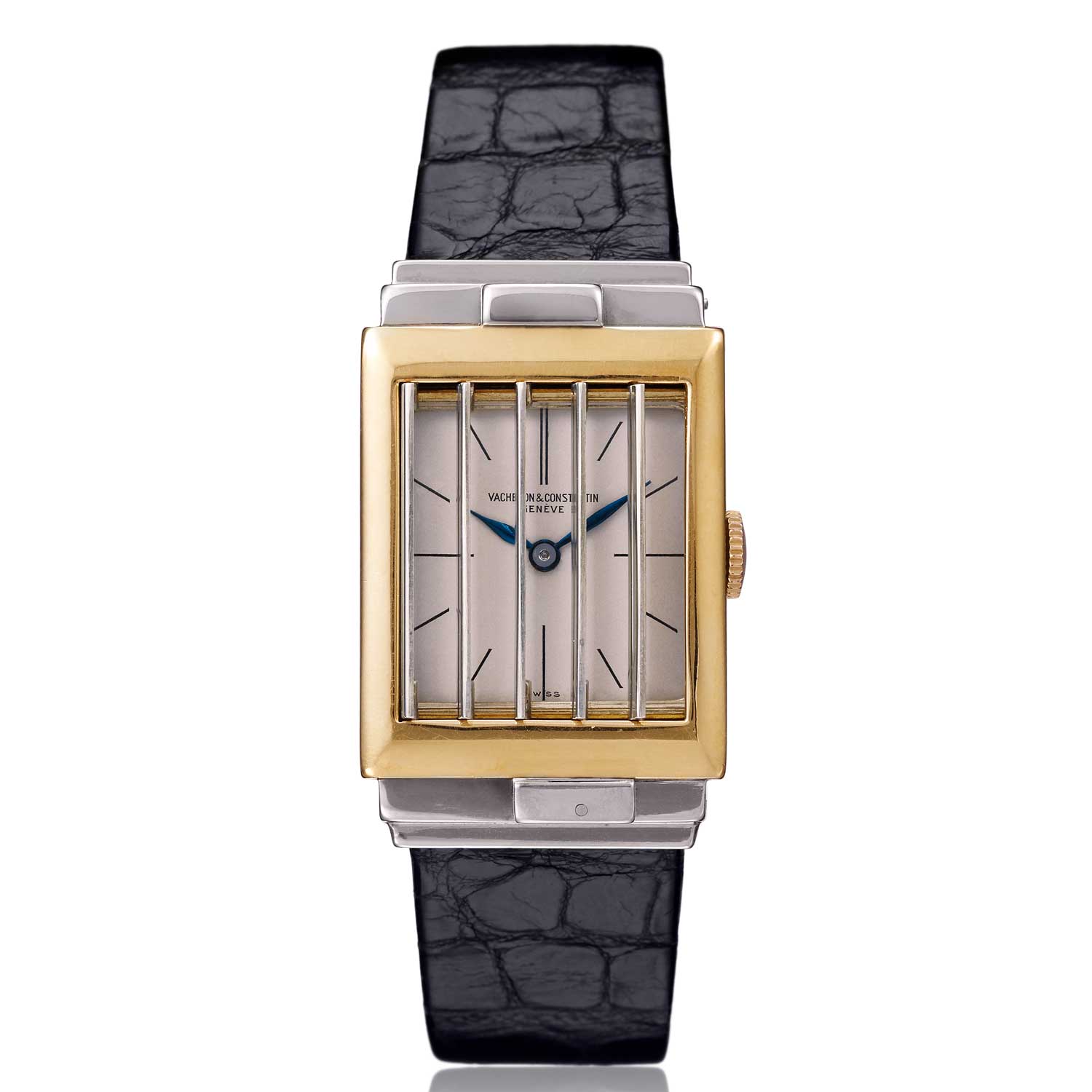
A 1930s shutter watch made by Vacheron Constantin in collaboration with Paris-based jewellers Verger Frères.
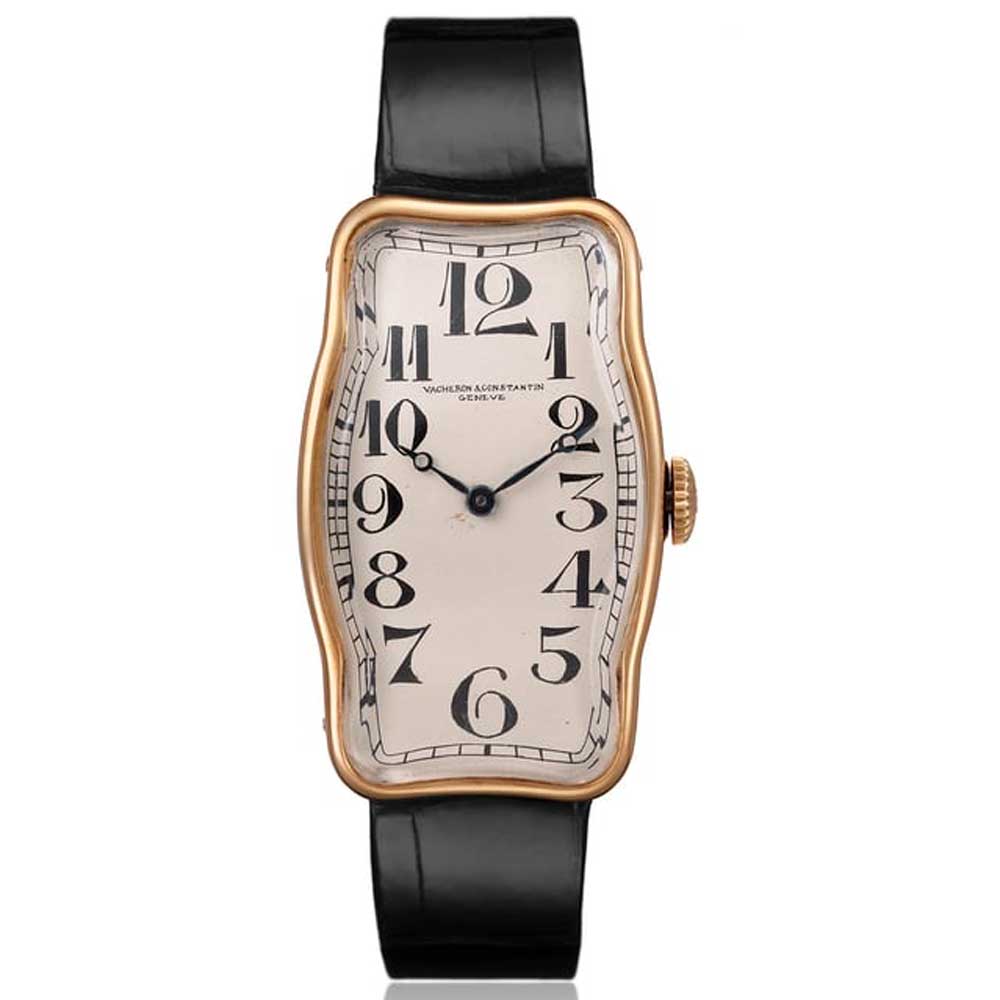
A special-shaped Vacheron Constantin wristwatch ref. 10970 in 18K yellow gold from 1917
According to Ghotbi, the crown jewel of Vacheron Constantin’s 20th-century wristwatch production was the mysterious “Don Pancho” or ref. 3620 — a unique, tonneau-shaped minute repeater with day and retrograde date made in the late 1930s. “This is not only one of Vacheron Constantin’s most important pieces, but also one of the most important watches from the first half of the 20th century,” says Ghotbi, who was instrumental in bringing this watch back into the limelight in a Phillips auction in May 2019.
Made on order for a Spanish businessman named Francisco Martinez Llano, the watch had a large yellow gold tonneau-shaped case, a crown at 12, a minute repeater with the lowest possible notes, a repeater trigger on the right side of the case, day, retrograde date and Llano’s initials in blue enamel on the caseback. Besides these features, the owner also requested for two dials, one with enamelled black Breguet numerals and the other with radium numerals, both with 12 numerals, and six straps that could be easily changed. After the owner’s passing in 1947, the watch remained in a safe for more than 60 years before it was rediscovered by his family and sold to Phillips. Says Christian Selmoni, “The ref. 3620 was like a myth until Phillips bought it from the original owner’s family. The watch was not just unique but highly complicated. It was bought for a price of CHF 740,000 [approximately USD 809,000] in 2019.”
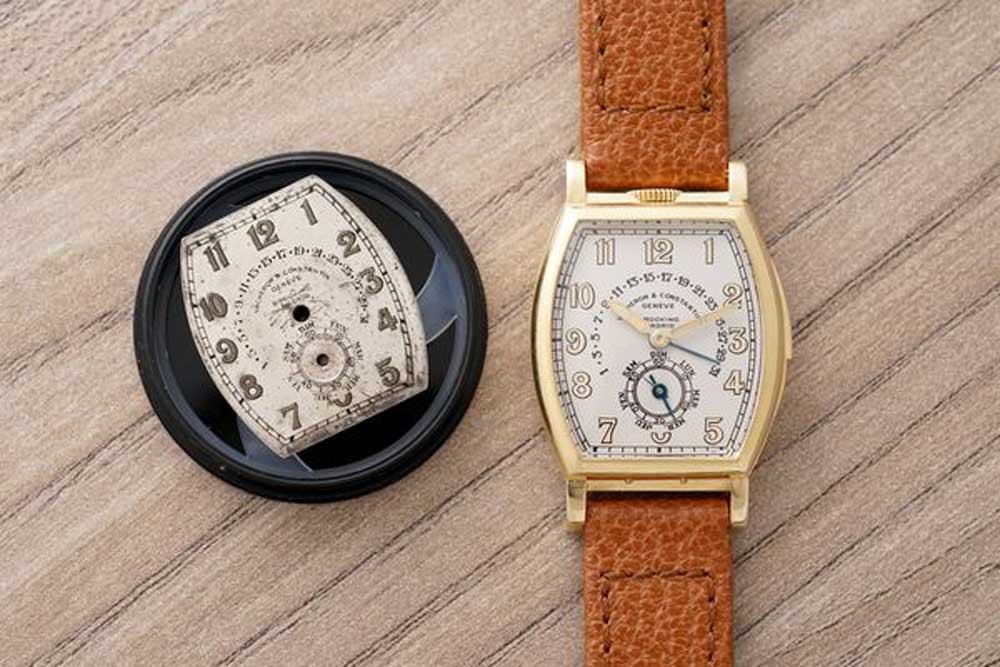
The unique 1930s Vacheron Constantin "Don Pancho" Minute Repeater with Retrograde Calendar was sold by Phillips for CHF 740,000 in 2019.

Alexandre Ghotbi was instrumental in bringing “Don Pancho” ref. 3620 back into the limelight at a Phillips auction in May 2019.
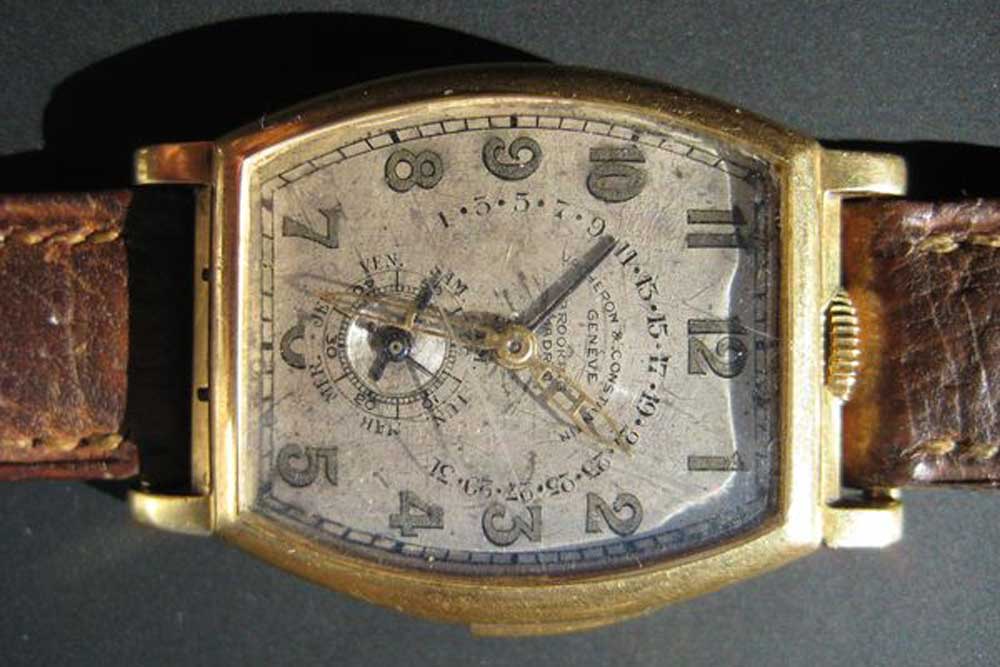
After the owner’s passing in 1947, the watch remained in a safe for more than 60 years before it was rediscovered by his family and sold to Phillips.(Image: Phillips)
Says Sébastian Vivas, Audemars Piguet’s heritage and museum director, “Before 1951, every single watch made by Audemars Piguet was a unique piece because there was no model reference for these watches. So it means that they’re all different from each other. We know these watches were made. We have all the archives about their production and their distribution but very little information about the way they were made.”
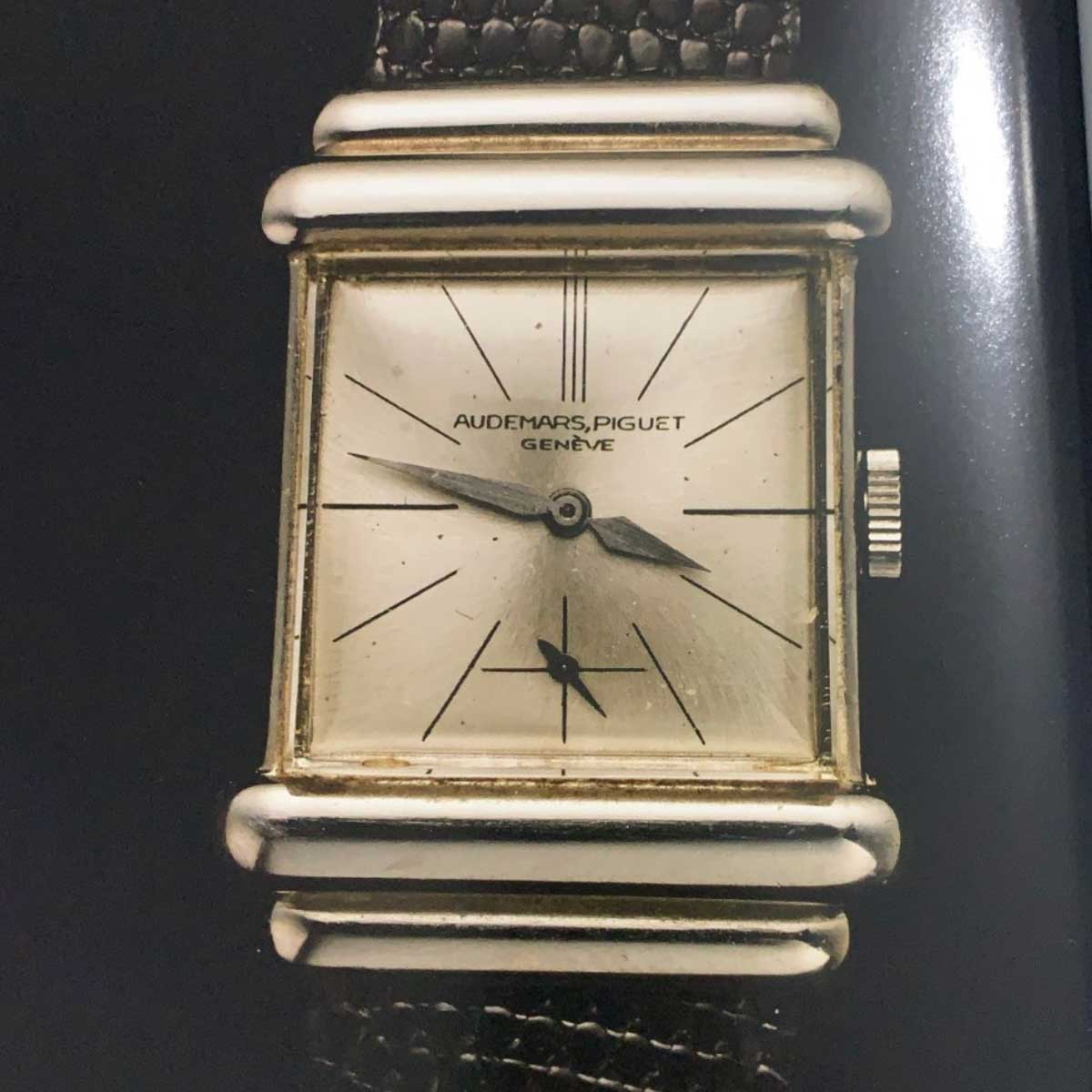
Audemars Piguet World’s Fair watch from 1938 has been a part of Michael Friedman’s collection since 2003.(Image: Audemars Piguet)

Patek Philippe’s rectangular tortue jump hour 1927.( Image Christie’s)
Perhaps it was Patek Philippe’s collaboration with the South American retailer Gondolo & Labouriau that pushed the company to introduce some of the key Art Deco elements to their shaped watches in the 1920s. Gondolo would request for elongated, rectangular cased watches, which would wrap effortlessly around their clients’ wrists. At a time when Europe was struggling with the First World War and its economic repercussions, Gondolo alone retailed close to a third of the entire production of Patek Philippe watches. In Brazil, the sales were so spectacular that “Patek” became a substitute for “watch.” Instead of buying a watch, you bought a Patek — even if it wasn’t actually a Patek Philippe. The company sold around 12,000 watches through Gondolo & Labouriau.
By the 1930s, functional elegance started emerging as one of the primary criteria for men’s watches. As sportswear like knickerbockers found patrons in the likes of the then Prince of Wales and tennis player René Lacoste’s practical, half-sleeve shirts made headlines for their comfort and style, trends in wristwear too began to change. “The tennis or polo shirt was a crucial catalyst in changing attitudes towards what constituted appropriate dress, and its modernising effect can be likened to the impact of the wristwatch. However, as businessman César de Trey was made aware during a business trip in 1930 in India, further development was required before the wristwatch could match the purposeful practicality of the polo shirt,” says Foulkes.
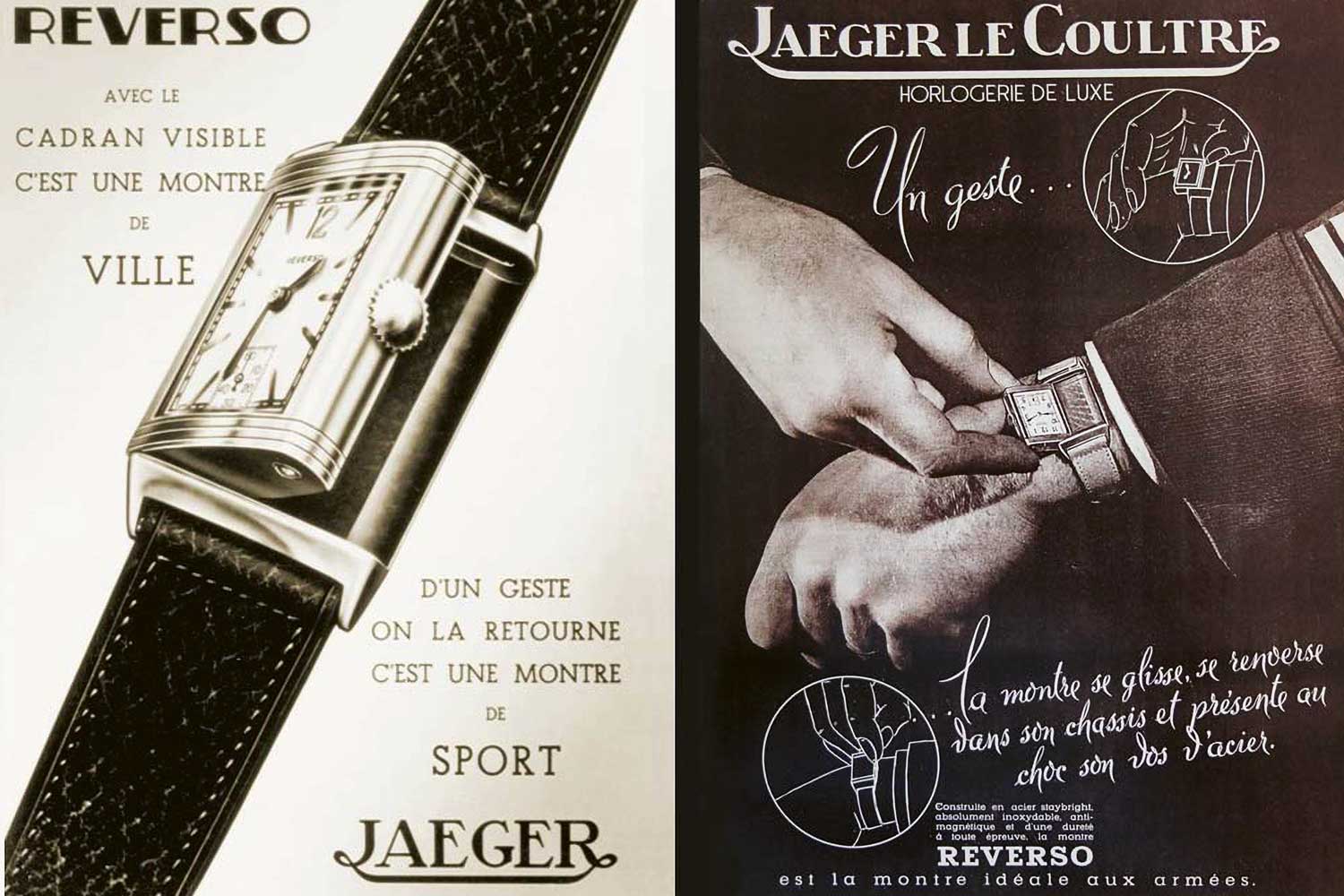
Vintage advertisements for Jaeger-LeCoultre’s Reverso.
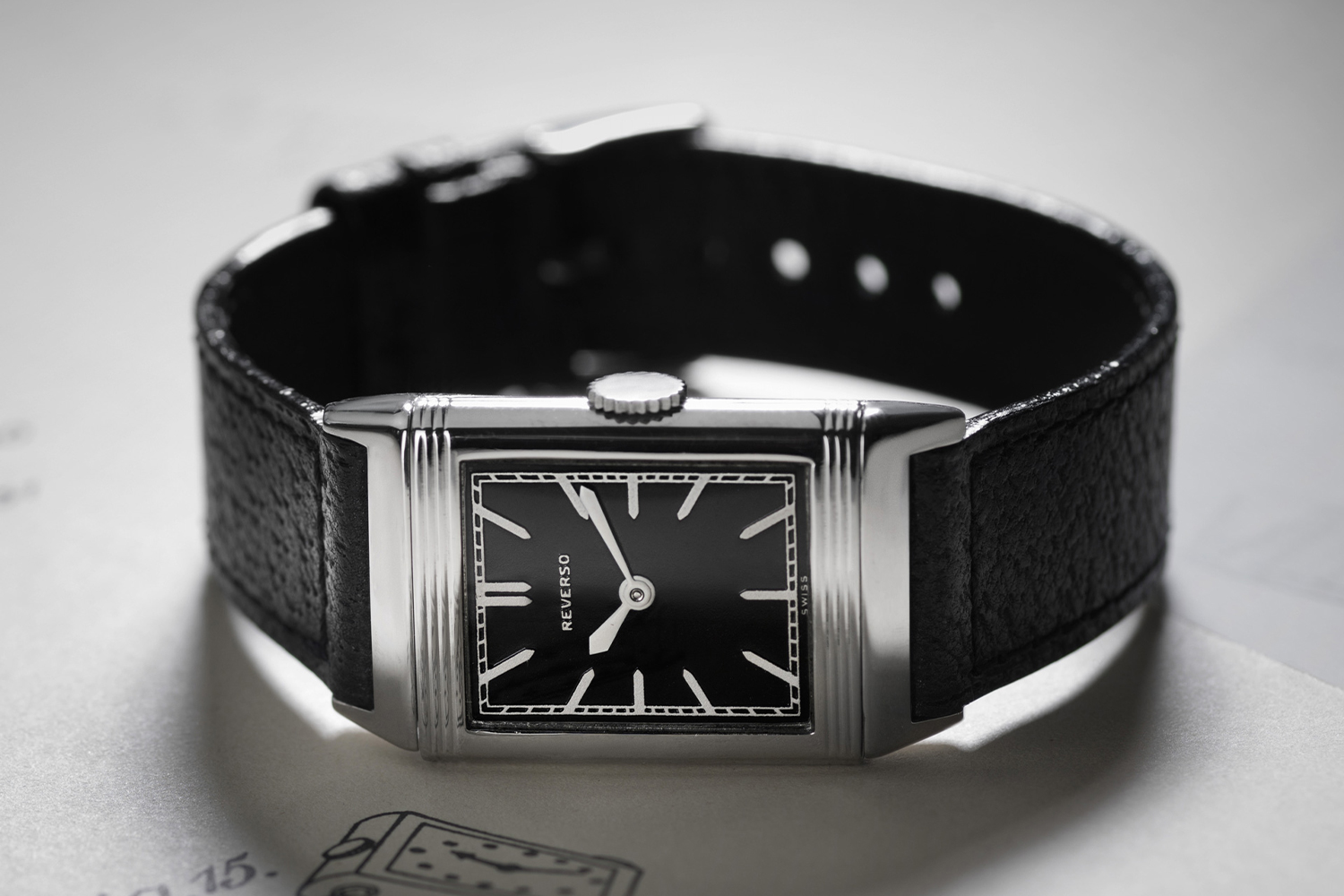
The first-ever Reverso from 1931
A tough row to hoe, the task was finally accomplished with the help of French designer René-Alfred Chauvot, who created a perfect rectilinear case, which in the words of patent application No. 712868 filed at the French Ministry of Trade and Industry on March 4, 1931, “can be slid in its support and completely turned over.” With its Art Deco aesthetics alongside baton-shaped hands, dart-type indexes, Arabic numerals and the swivelling case with three decorative gadroons on top and bottom, the Reverso turned out to be a runaway hit. “The Reverso’s design was dictated not by a desire to be different but by mechanical functionality. Its value lay not in the costliness of its materials and lavishness of its embellishments but in the ingenuity and intricacy of its engineering. Its choice of materials, its intentions, its innovative manufacture and the need it met made the Reverso, in many ways, the quintessential Art Deco product,” says Foulkes.
1950S: The Golden Era of Shaped Designs
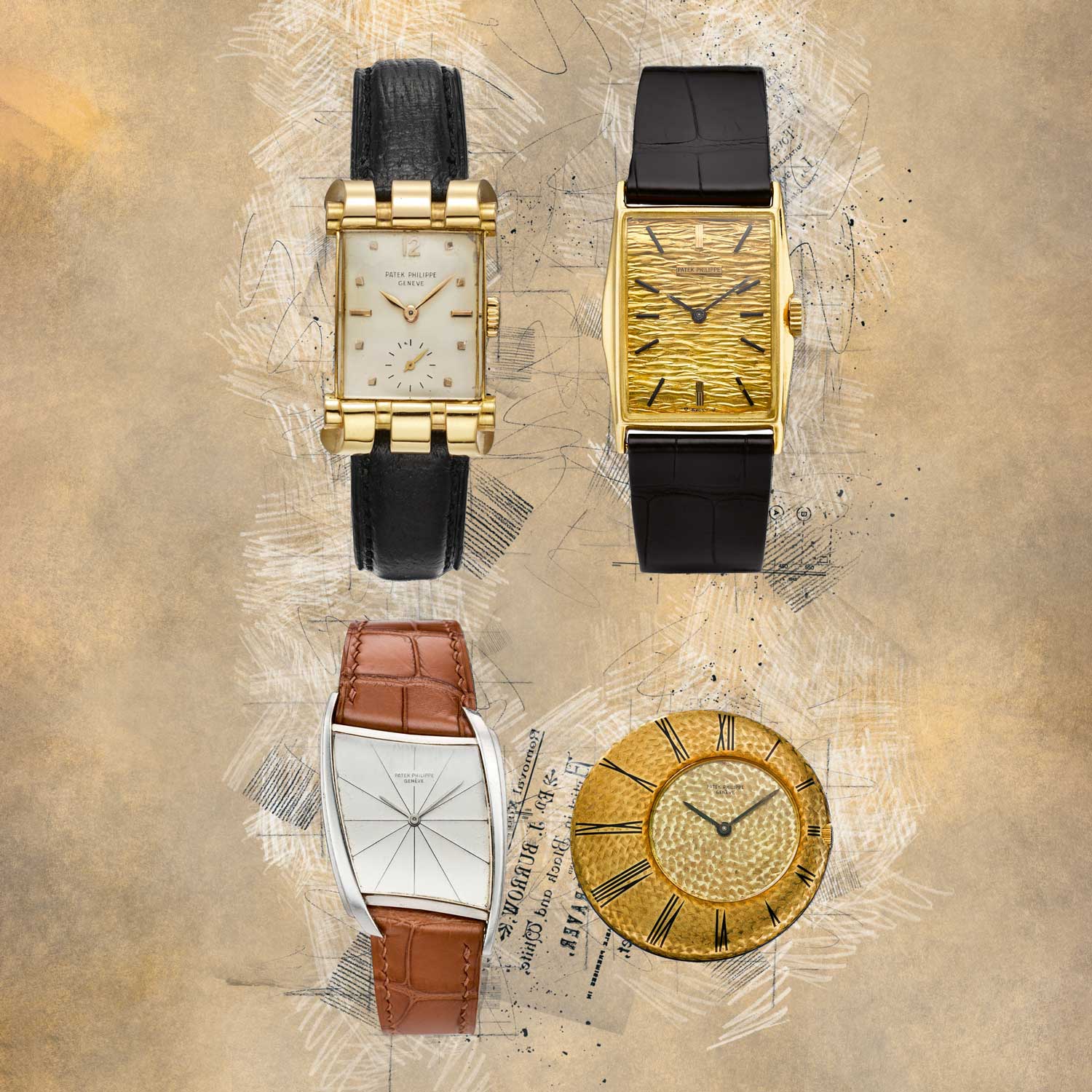
Patek Philippe ref. 2471, with its “ram’s horns” or “bear claw” case made by Markowski; Patek Philippe 18K yellow gold ref. 2554/7J “Manta Ray,” made in 1964; Gilbert Albert’s asymmetrical masterpiece, the Patek Philippe ref. 3424P from 1961; Patek Philippe’s “Ricochet” pocket watch designed by Gilbert Albert in 1967 (Images: Collectability)
One man who absolutely revolutionised the design landscape in watchmaking during the 1950s was Gilbert Albert. His asymmetrical designs with playful names like “Ricochet,” “Flying Saucer,” “Asymétrie,” “Futuriste” and “Tutti Frutti” were not just disruptive for that age but particularly so for Patek Philippe, which was known for its classical sensibilities. “In 1955, Henri Stern took something of a gamble and hired the then 25-year old Gilbert Albert, initially to inject a youthful design aesthetic into jewelled watches for women. However, Albert soon became head of the creative department, and his influence was seen on all Patek timepieces produced for the next decade,” says Tania Edwards, who worked with Patek Philippe for nearly three decades and is currently the marketing communications specialist at watch website Collectability.
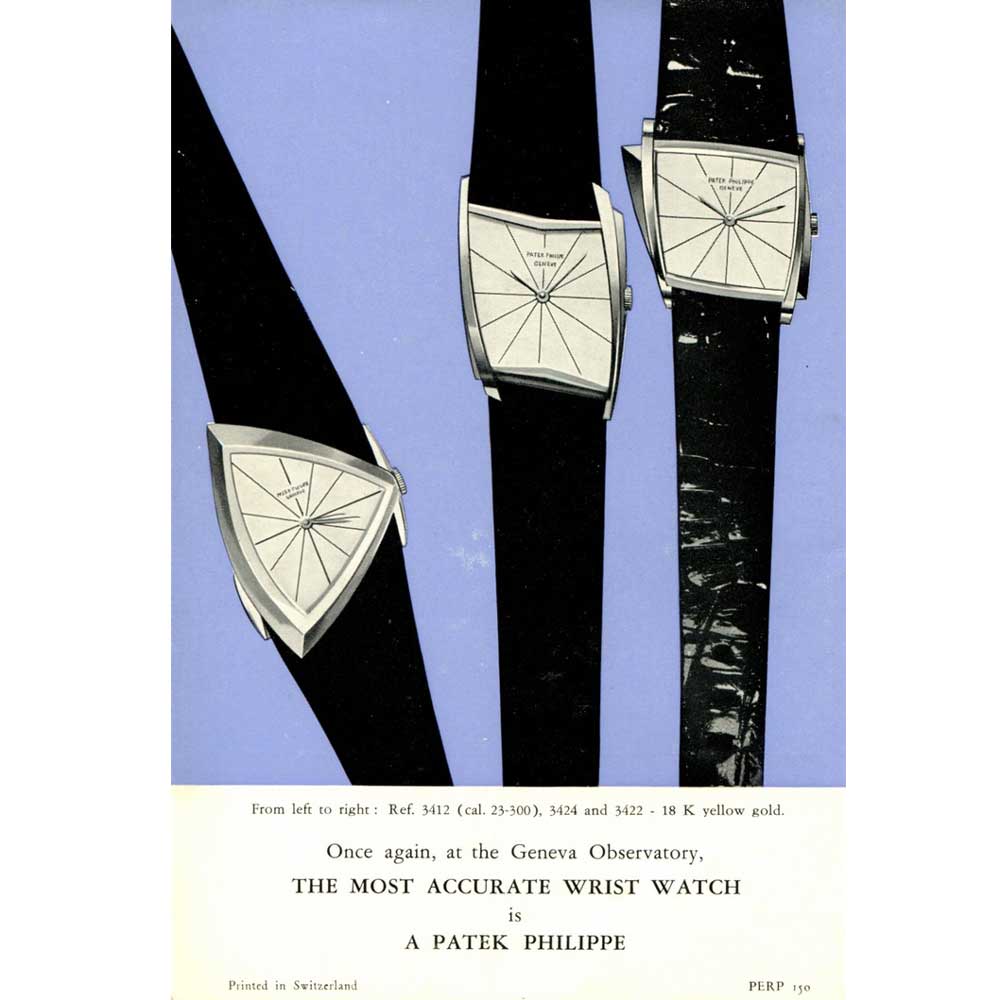
Patek Philippe ad for the Gilbert Albert watches from 1960s (Image: Collectability)
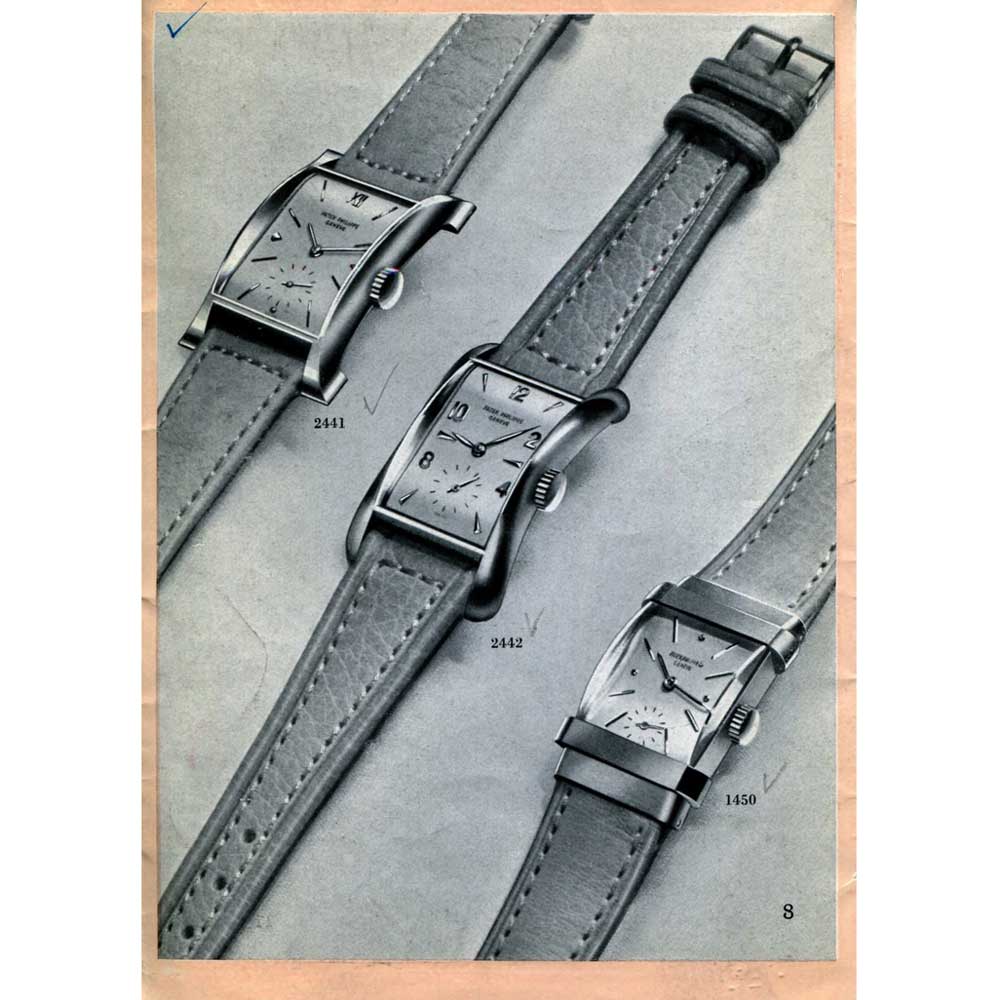
An old catalogue featuring Patek Philippe’sref. 2442 “Marilyn Monroe”(Image: Collectability)
Inspired by Art Deco artists such as Piet Mondrian and Constantin Brâncuși, Gilbert Albert’s whimsical designs would come across as totally asymmetrical but even the most eccentric-looking timepiece from him displayed a clean geometry with carefully constructed lines and sharp angles. “Gilbert Albert re-invented the way that Patek and other watch manufacturers looked at watch design. Now a watch case could be asymmetrical or triangle. When the new designs were presented at the Basel Fair, people would line up, excited to see what was new and to be amazed. Selling through to retailers, however, was not so easy with many partners around the world thinking that the traditional Patek Philippe had ‘lost its mind!’ As ever, Patek was ahead of its time. Apparently, many of Albert’s designs were simply too ‘far out’ for even the forward- thinking Henri Stern to commission,” says Edwards, who is one of those lucky few to own a “Ricochet” pocket watch by Albert. “He would hand-chisel and engrave each piece to lend it a sensual touch. The Ricochet has a soft, smooth form and its classic flecked engraved design is mesmerising,” she says.
Albert’s most famous designs include the rhomboid- shaped ref. 3422 from 1960 and the ref. 3424 “Ricochet” watch. Made in precious metals like yellow gold, pink gold and platinum (for the 3424), these watches presented the designer’s trademark black sector lines radiating from the centre to the ends of the case. However, the most dramatic of all Gilbert Albert watches was the ref. 3412 from 1958. Designed like a triangle with two sides of the case in extreme proportions, this watch turns the notion of traditional lugs on its head. The angular corners and intersecting lines on the dial gave it a very strong identity. “When you look at a catalog or advertisement by Patek Philippe from the 1930s, you will notice that almost every watch looks like it is a unique piece. But they were all, in fact, part of regular production, even though the production numbers weren’t necessarily too high. This just goes to show how creative Patek Philippe was in terms of case shapes during the 1930s, as well as the 1960s,” says watch collector Dogu Tasoren, who has an exceptional collection of old Patek Philippe advertisements.
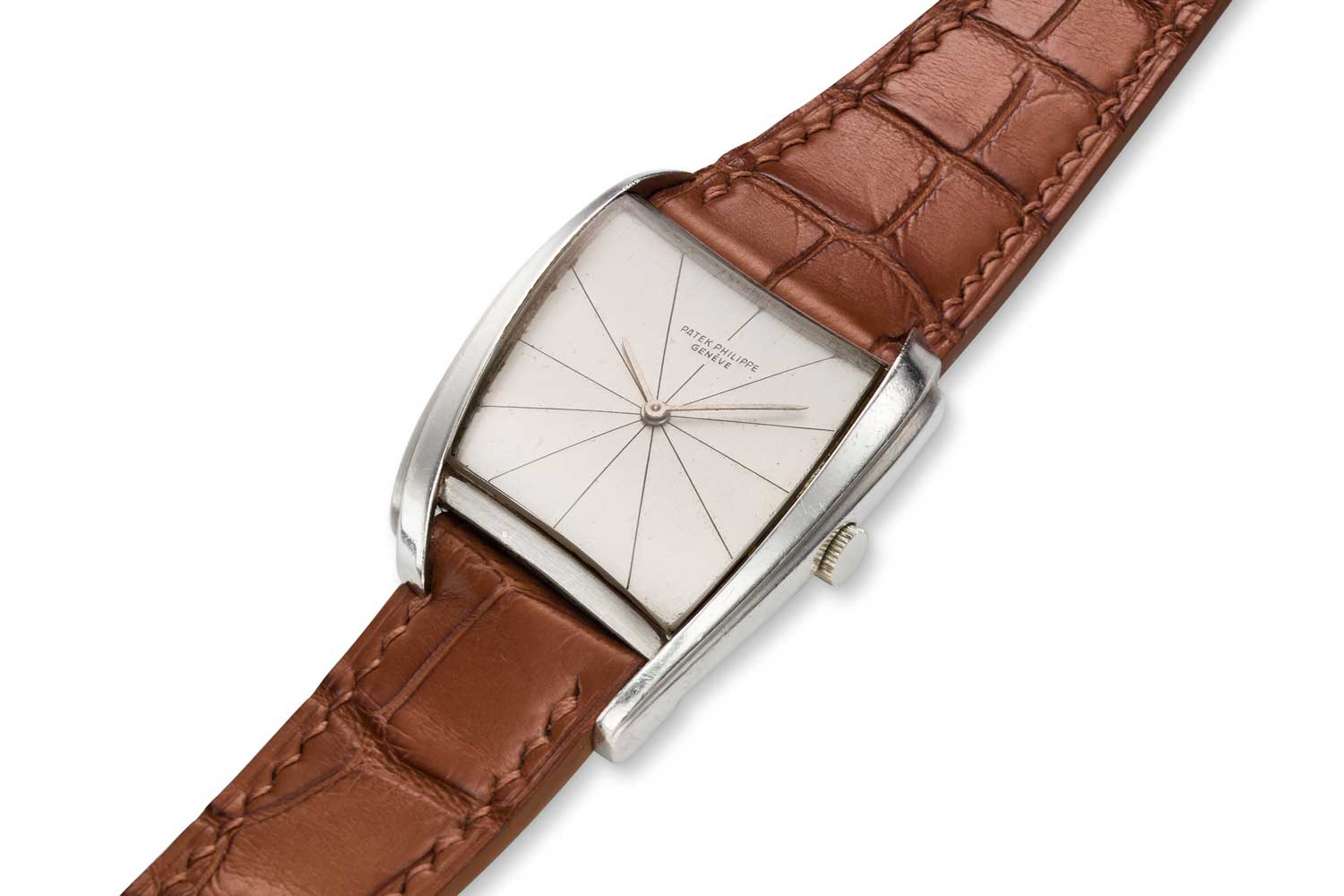
Made in precious metals like yellow gold, pink gold and platinum, the ref. 3424 presented Gilbert Albert’s trademark black sector lines radiating from the centre to the ends of the case. (Image: Collectability)
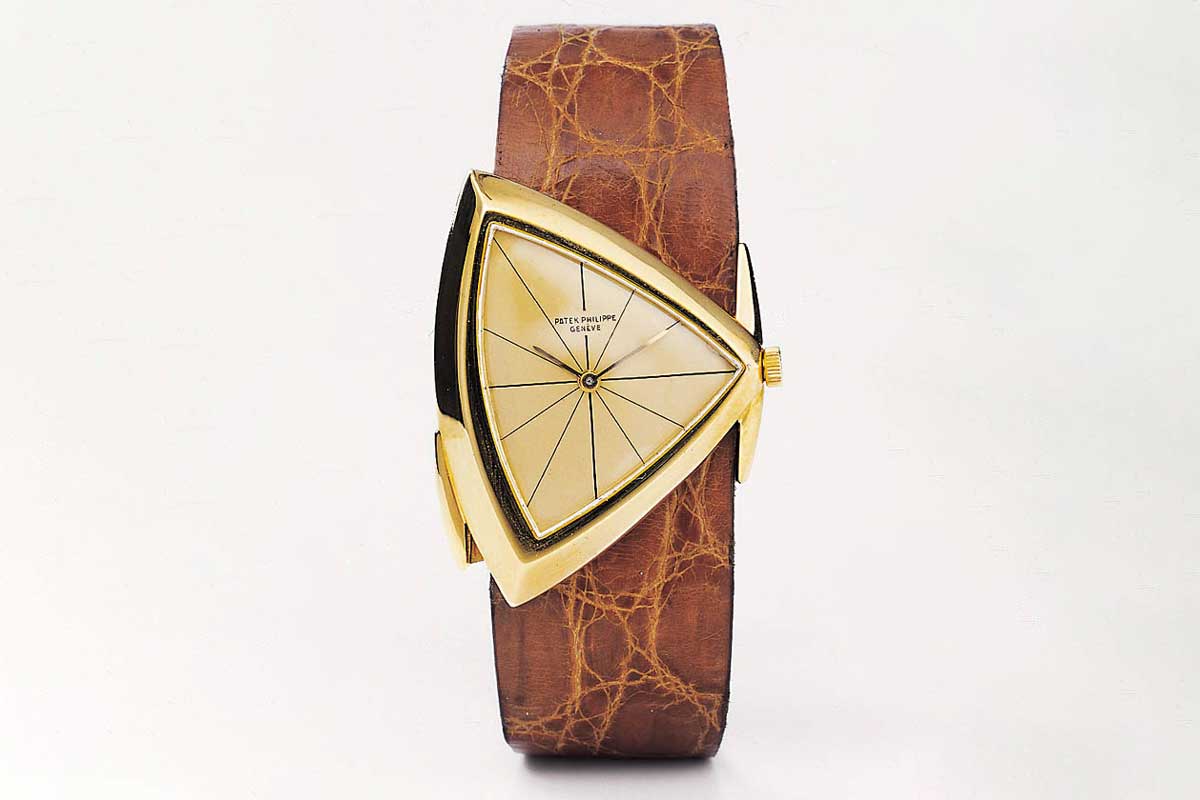
The most dramatic of all Gilbert Albert watches was the ref. 3412 from 1958. Designed like a triangle with two sides of the case in extreme proportions, this watch turns the notion of traditional lugs on its head. (Image: Christie’s)
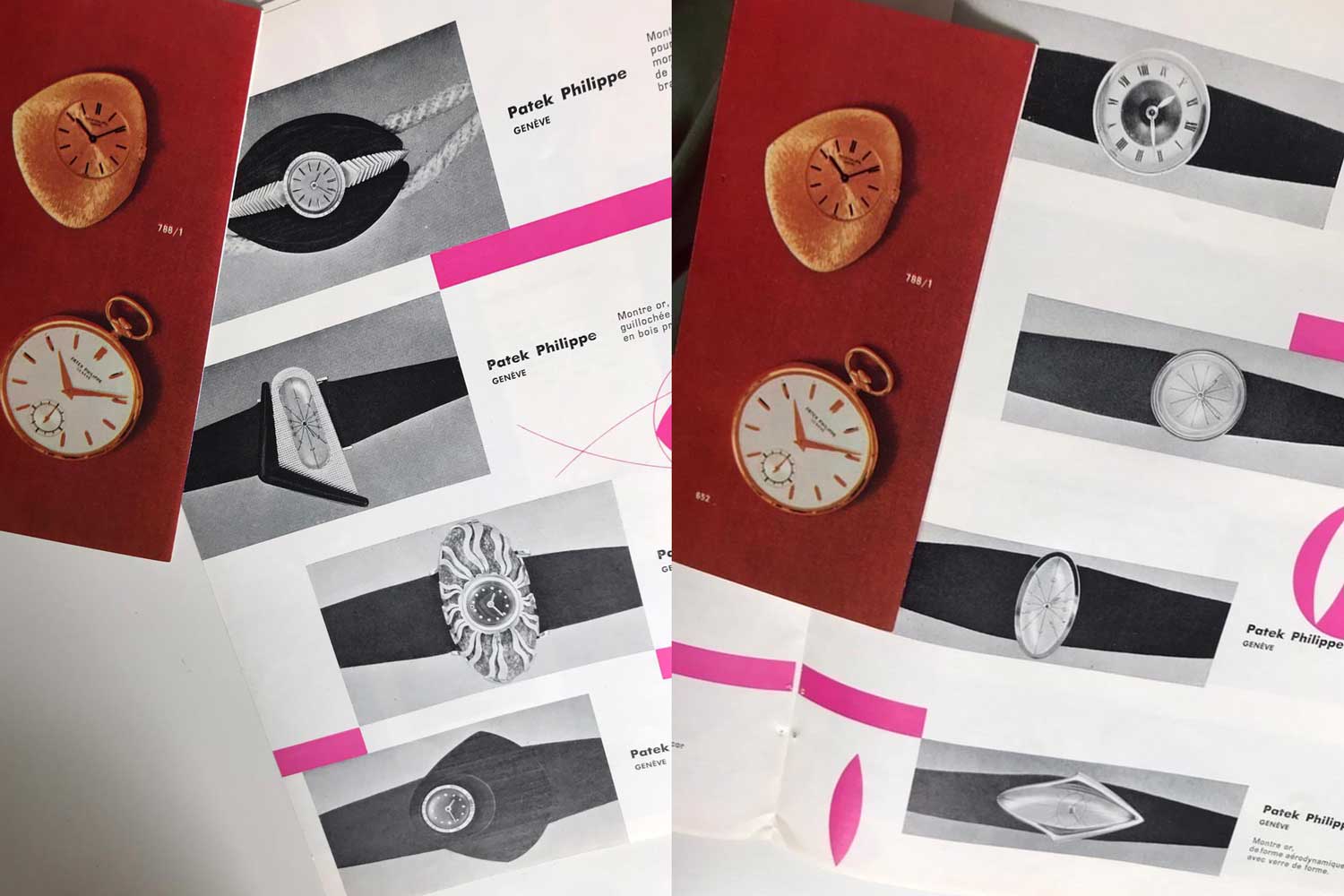
Catalogue pages from 1957 Baselworld showcasing some of Gilbert Albert's earliest designs .(Image: Dogu Tasoren)
The unprecedented creativity in design was not just limited to asymmetrical shapes; squares and rectangular shapes were also given playful twists with the shape within a shape form. One of the most striking examples of this is Vacheron Constantin’s “Cioccolatone.” Says Selmoni, “It’s a rectangular timepiece with a square opening and a very curved case. The Italians called it ‘Cioccolatone’ because it looked like those chocolate squares from that time. The first references of the watch, 4821 and 4822, were manual winding and then we replaced those with self-winding models refs. 6440 and 6440 Q.
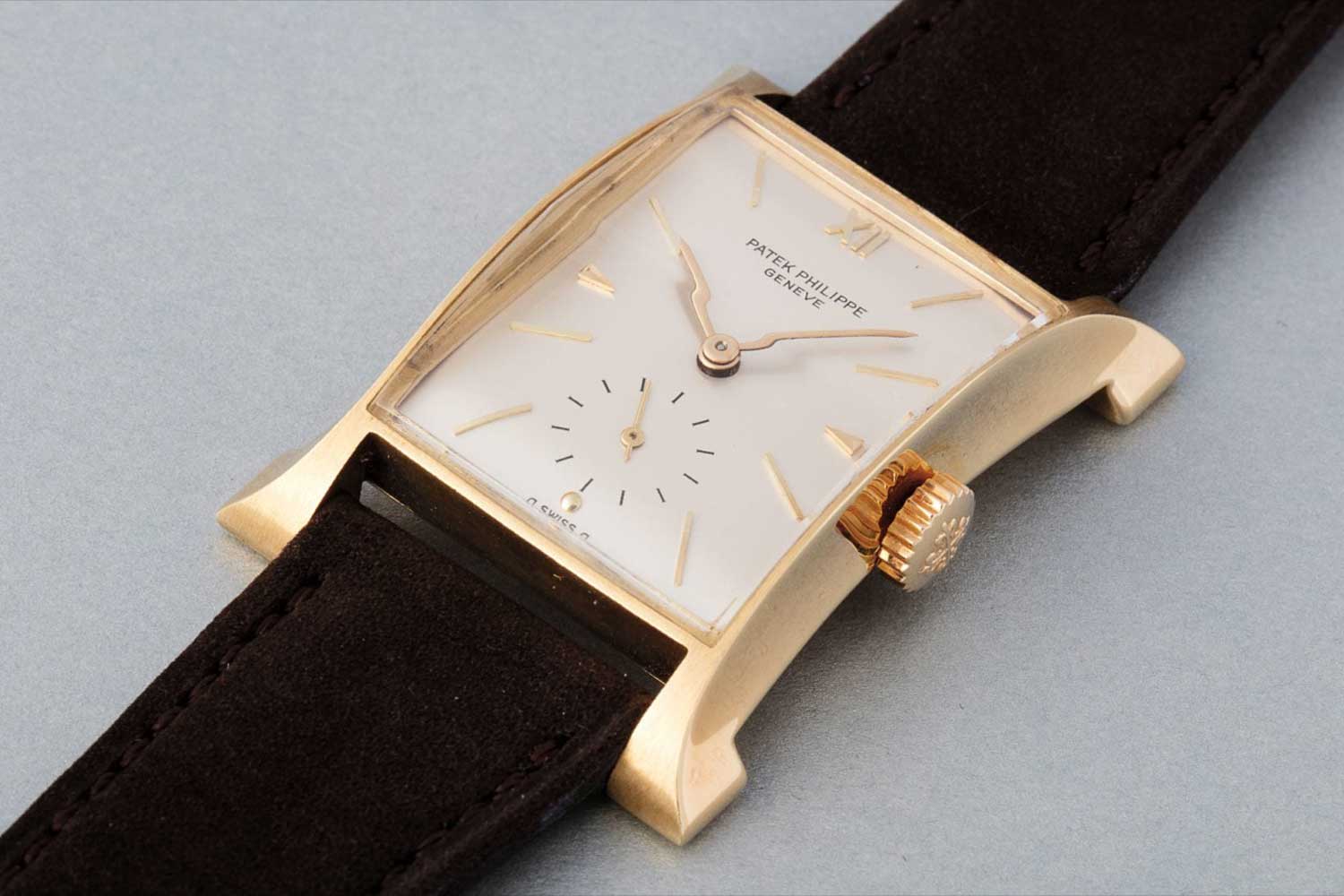
Patek Philippe made around 200 pieces of the ref. 2441 between 1948 and 1955. Often referred to as the "Eiffel Tower" for its distinct flared design, this watch inspired the design for the ‘Pagoda’ wristwatch in 1997.
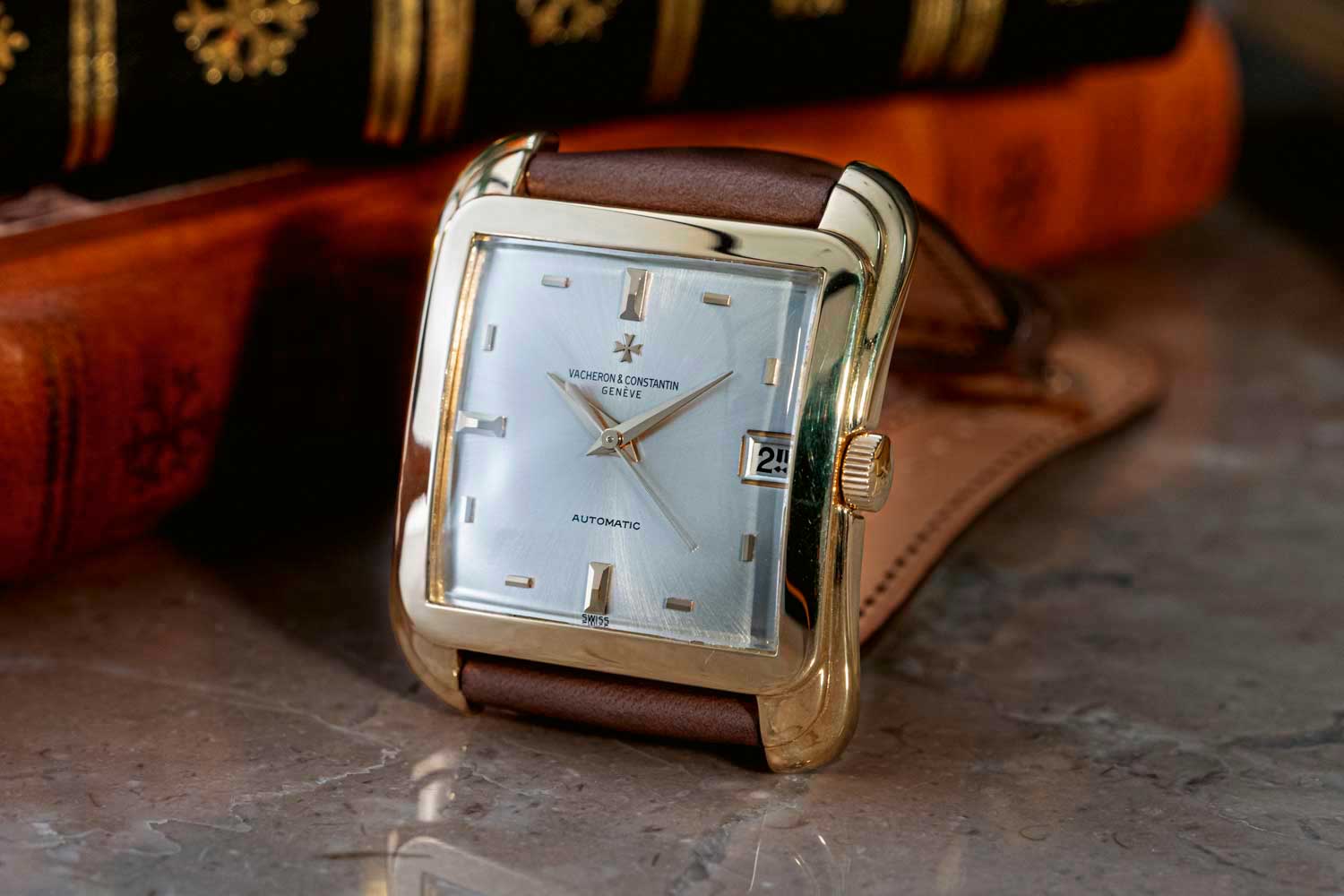
Vacheron Constantin Cioccolatone Reference 6440Q from 1967. The square-shaped 18K yellow gold automatic wristwatch has a silvered sunray-satined dial, indexes in gold, date aperture at 3 o'clock, center seconds (©Revolution)
According to Rankin, if there was one watch that embodied the aesthetic boldness that Genta brought to Audemars Piguet in the early years, it was the ref. 5093. Known by Italian collectors as the “Disco Volante,” or “Flying Saucer,” this mid-1950s watch marked Audemars Piguet’s most audacious foray into ultra thin watchmaking, which was underscored by Genta’s design that shifted focus from the round dial to the broad, knife-thin bezel. “He did this by adorning it with a vast array of patterns and ornamentation; examples are found bearing rows of engine- turned Clous de Paris, embellished with precious stones or florentine’d, and ran the full gamut of precious metals. The bezel wasn’t always out to steal the show, however, and as bezel designs ranged, so did the dials,” says Rankin.
By the 1960s, Genta was on a roll. Though we were yet to see the Royal Oak in the works, there were two watches which stood out for their eccentric shapes from the house of Audemars Piguet. One of them featured a prominent C-shaped case surrounding a round dial and the other featured an elongated rectangular asymmetrical dial marked with black sector lines. In these watches, Rankin opines that Genta seemed to be courting “the Japanese design principle of fukinsei with a case resembling a capital ‘C’ stretching from left to right to swallow up the round watch head, as if Pac-Man had discovered a sudden taste for horology. The open mouth of the ‘C’ on the right is balanced by a slight taper as the eye moves left. It’s clear that the inner section of the two-tone dial began as a pure and innocent circle before Genta’s tectonic shift of left and right hemispheres moulded the slender indexes to their will.”
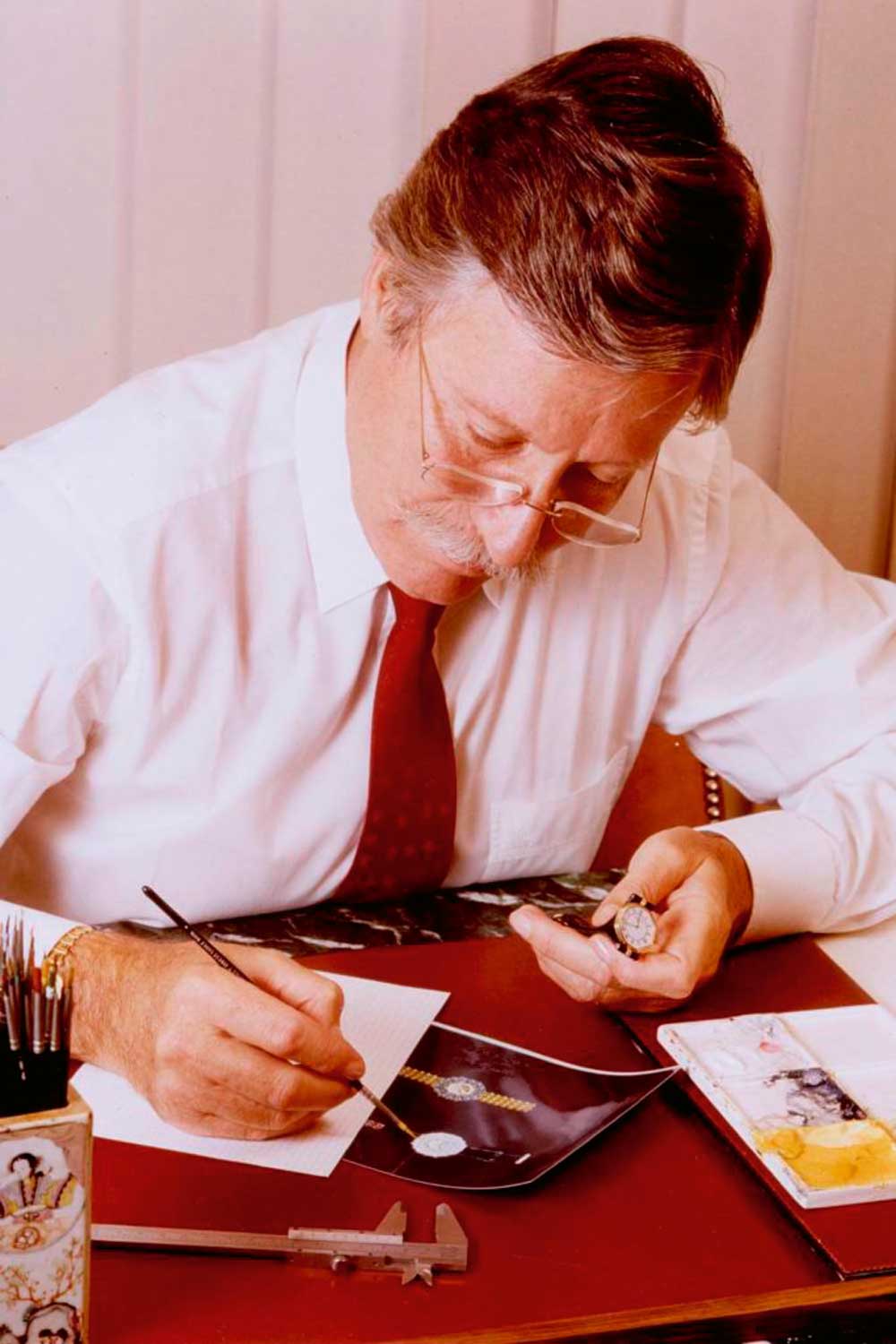
Gerald Genta brought an aesthetic boldness to Audemars Piguet in the 1950s
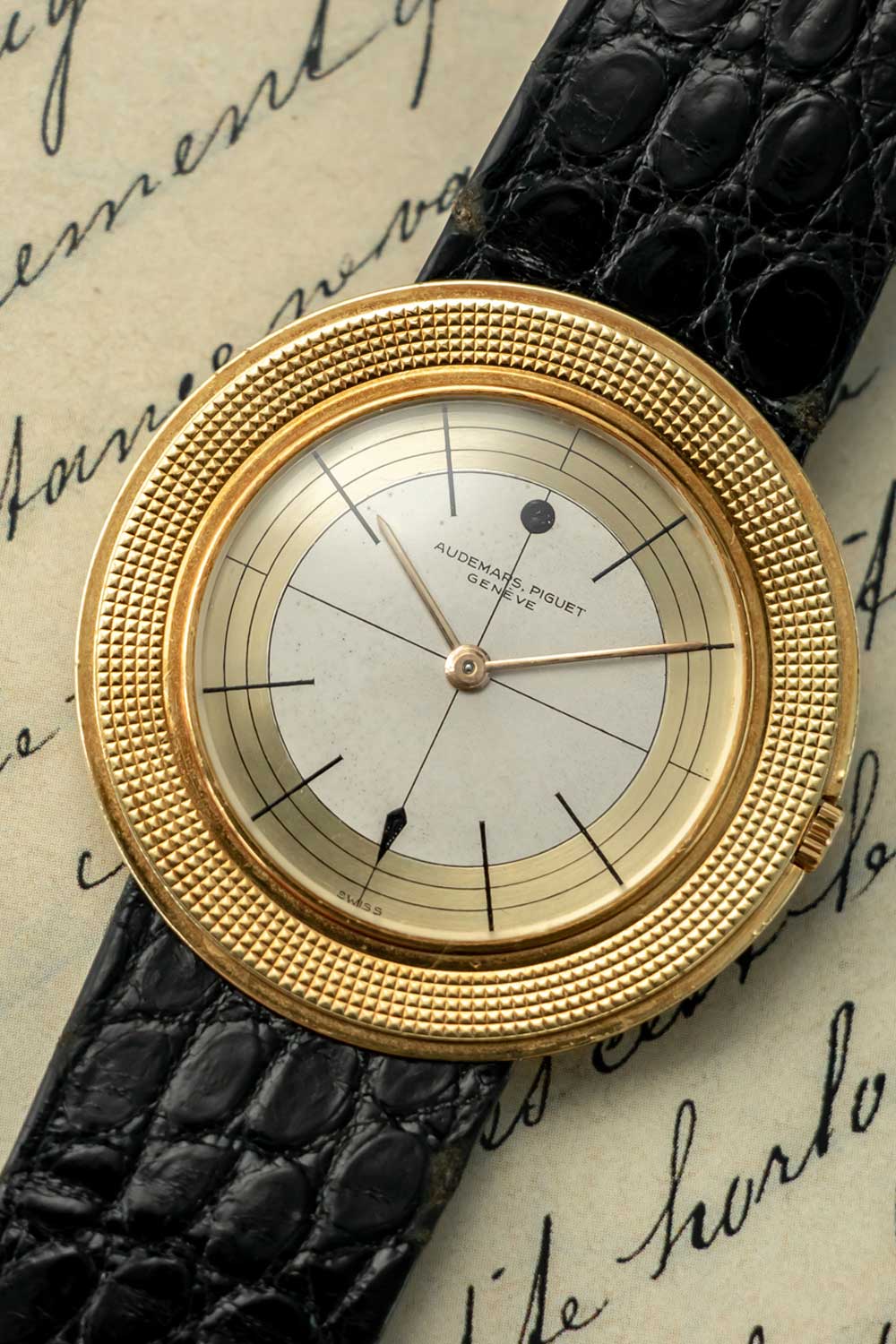
Audemars Piguet ref. 5093 or “Disco Volante” marked Audemars Piguet’s most audacious foray into ultra thin watchmaking in the mid 1950s. (Image: Josh Rankin)
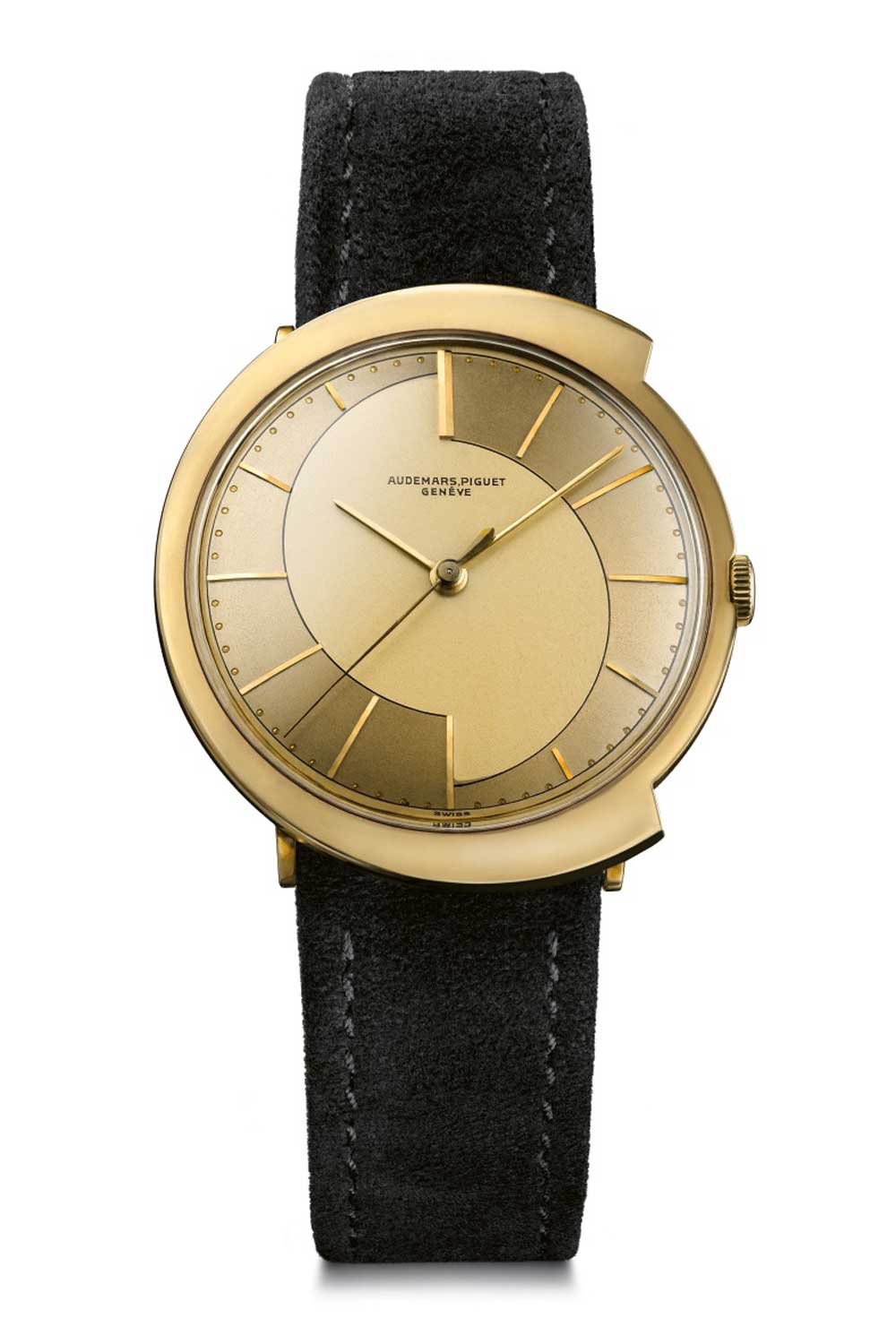
Audemars Piguet ref. 5182 followed the Japanese design principle of fukinsei with a case resembling a capital ‘C’ stretching from left to right to swallow up the round watch head, as if Pac-Man had discovered a sudden taste for horology.
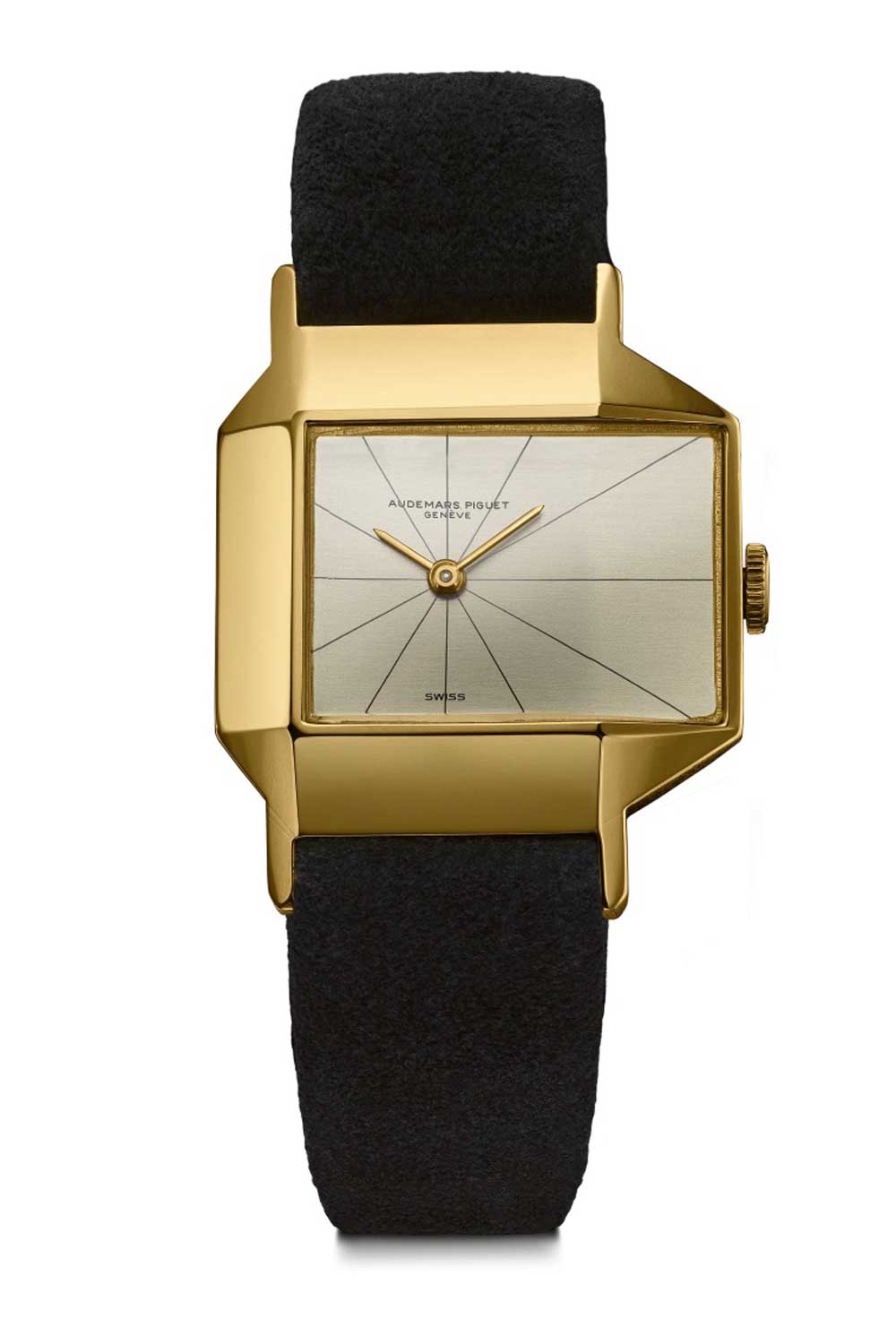
Audeamrs Piguet ref.5159 with a case designed by Croisier. Only seven pieces of this model were made and sold between 1960 and 1961.
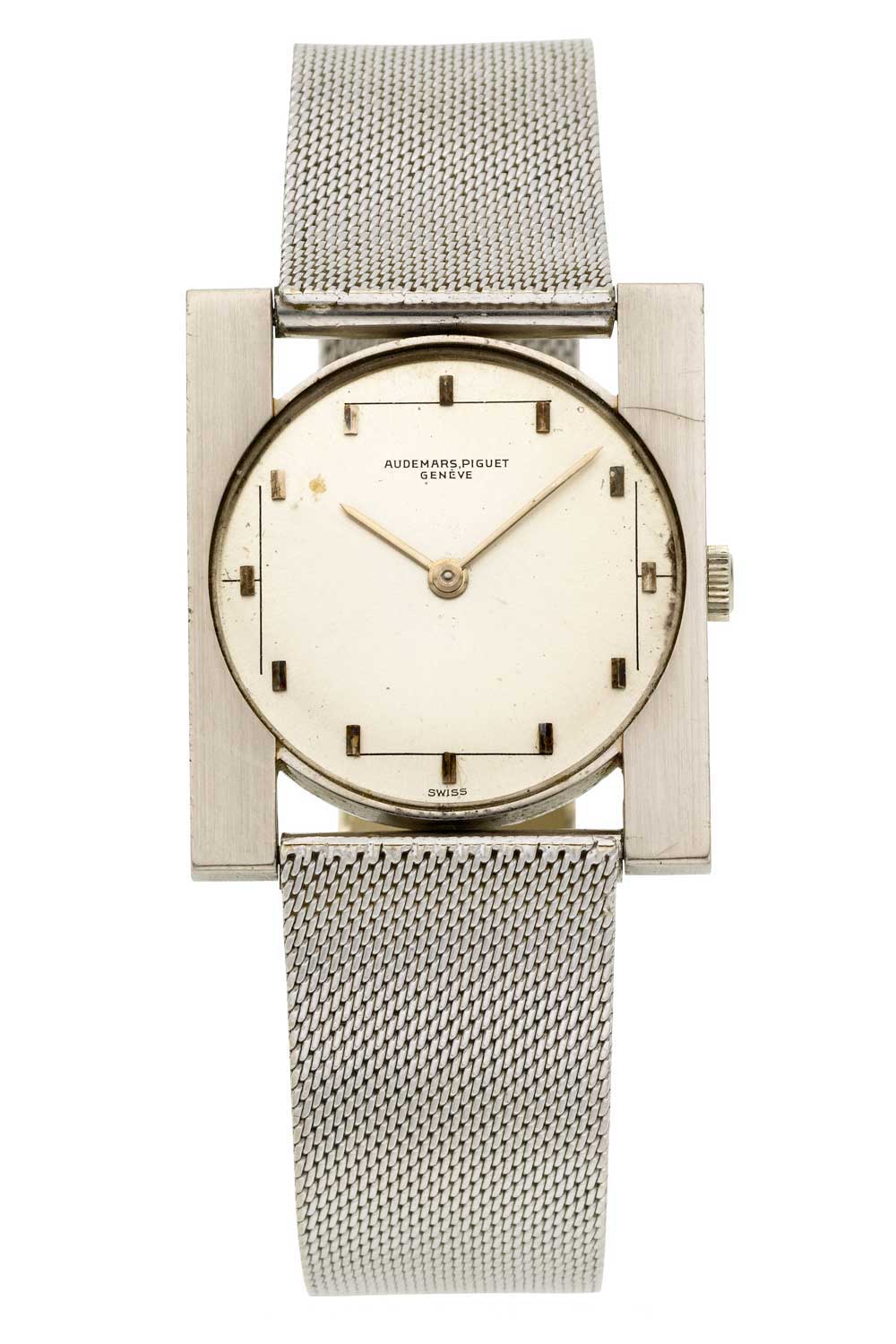
Designed by Gérald Genta, this Audemars Piguet is an example of a shape-within-a- shape design. A square inside a circle inside a square, in the centre lies a set of Audemars Piguet’s ubiquitous baton hands.
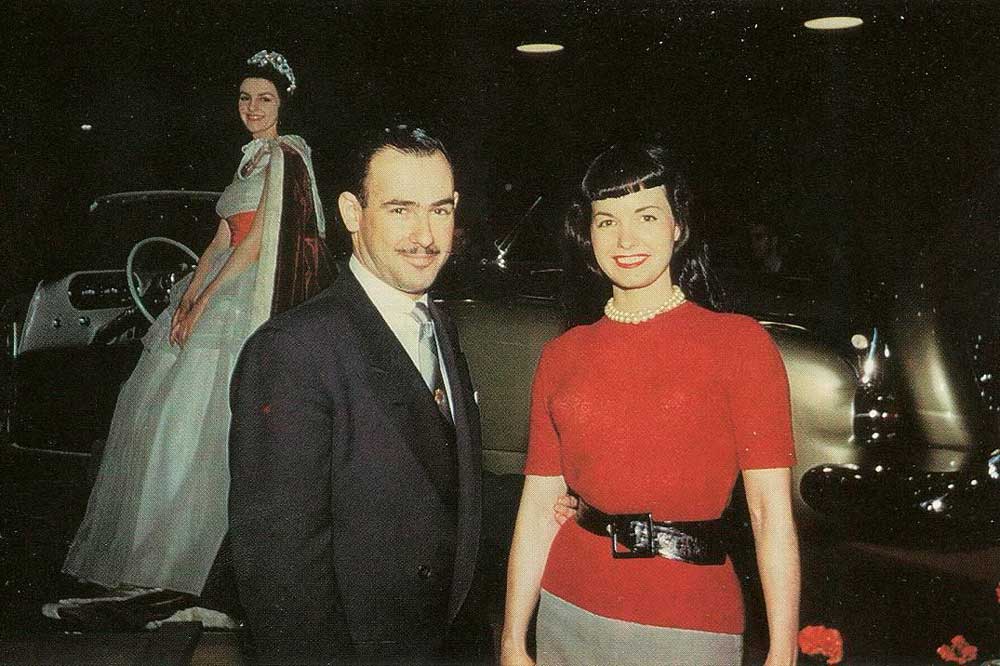
Designer Richard Arbib with American model Bettie Page
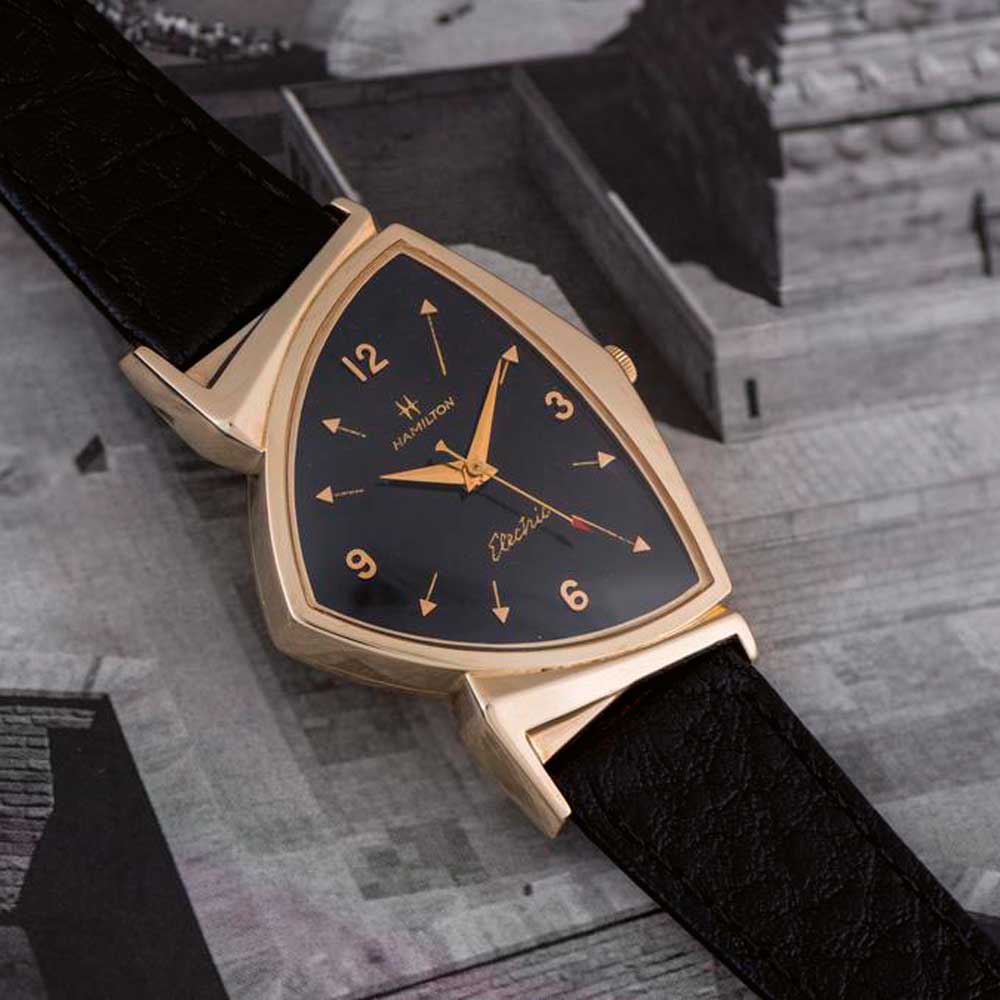
Hamilton Ventura Elvis80 Auto
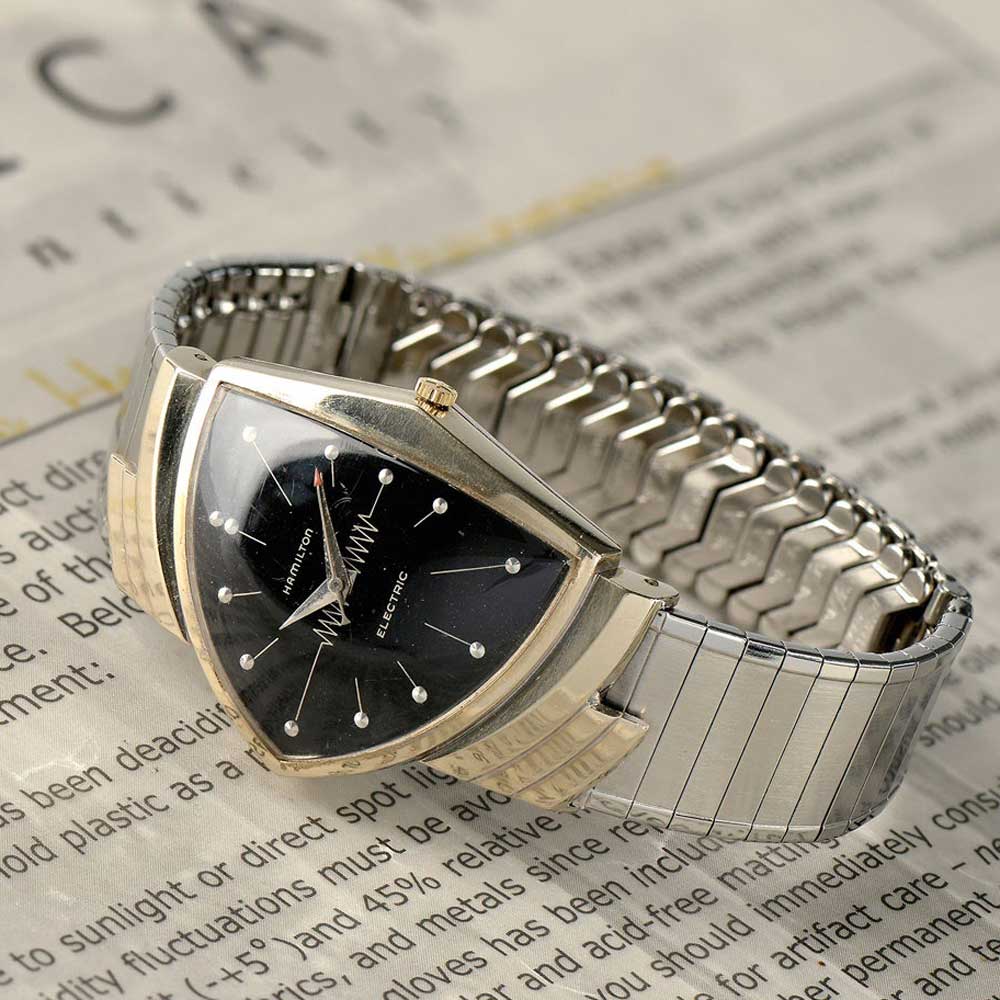
Elvis Presley's Hamilton Ventura
For the Love of Lugs
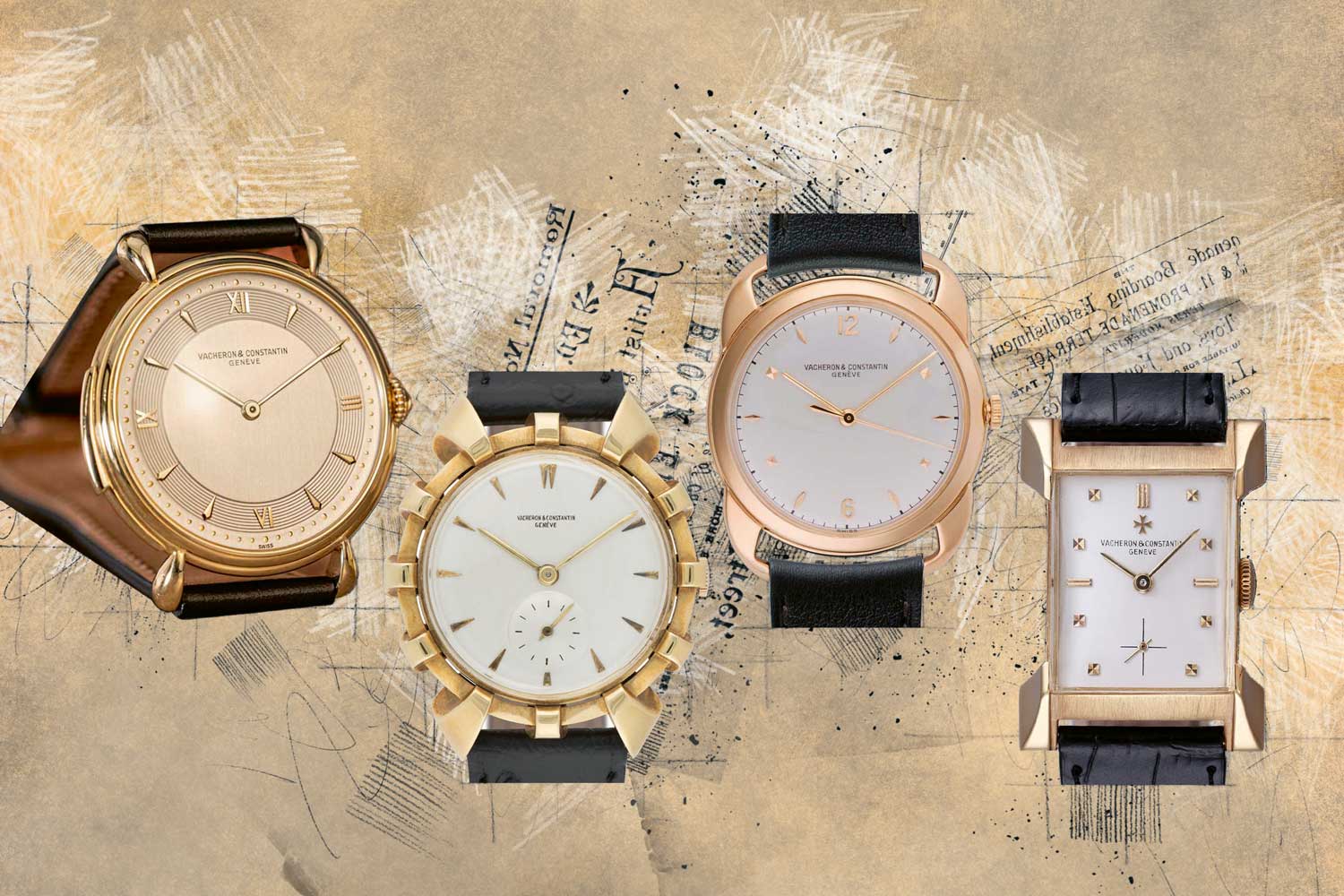
Vacheron Constantin ref. 4261 minute repeater with tear-drop lugs from 1951; Vacheron Constantin ref. 4709 from 1950s; The ‘Crab Claw’ ref. 4659 from 1952; Vacheron Constantin ref. 6017 from 1957.
“Vacheron Constantin has probably the greatest creativity in lug design since the inception of the wristwatch. Some of its most iconic lugs include the ‘crab claw,’ the Cornes de Vache (‘cow horn’), the ‘flame’ and the ‘teardrop.’ Of all the watches that emerged from this period, the crab claw lug ref. 4659 is both the most unusual and one of the most appealing. It represents every part of the post- World War II exuberance and optimism that I love and that continues to inspire me,” says Wei Koh, who was also bowled over by the ref. 4261 minute repeater and its contemporaries showcased at Vacheron Constantin’s Les Collectionneurs exhibit in Singapore in March. Besides the famous Cornes de Vache chronograph ref. 6087 with its cow horn lugs and the crab claw lug ref. 4659, the “Batman” ref. 6694 is one of the most audacious Vacheron Constantins from the period. According to Christian Selmoni, this watch is the perfect example of Vacheron’s classic style with a twist.
“The ‘Batman’ represents our ability to transcend the round design by using very creative lugs. It is very flamboyant and appealing. I love this tension between the very classic round shape in some of our watches adorned with these particularly surprising lugs. My other favourite is ref. 4261, an emblematic minute repeater with a super thin movement and beautiful teardrop lugs. We made around 40 of these between the 1940s and the early ’60s,” he says.
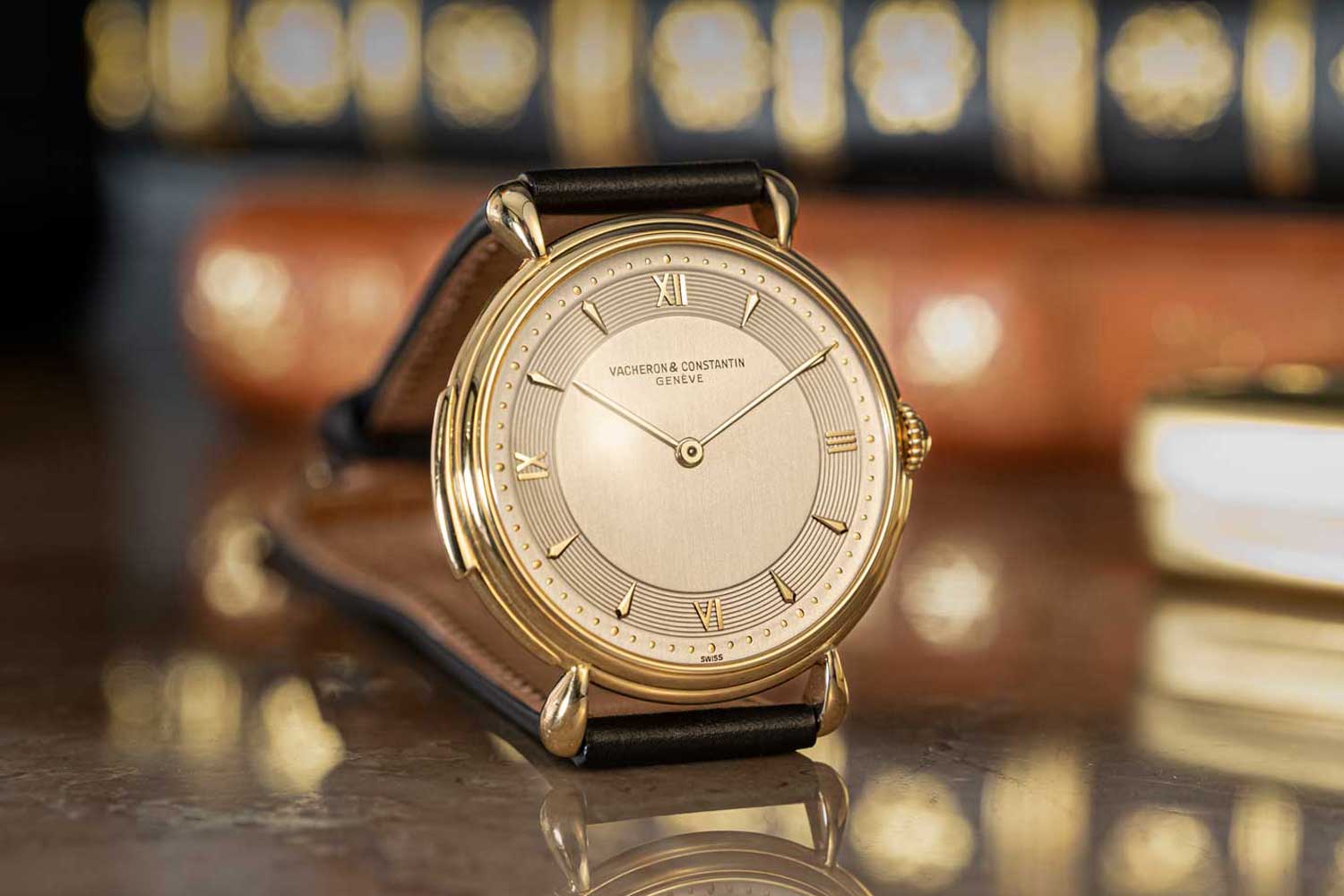
Vacheron Constantin ref.4261 Minute Repeater with tear-drop lugs. (©Revolution)
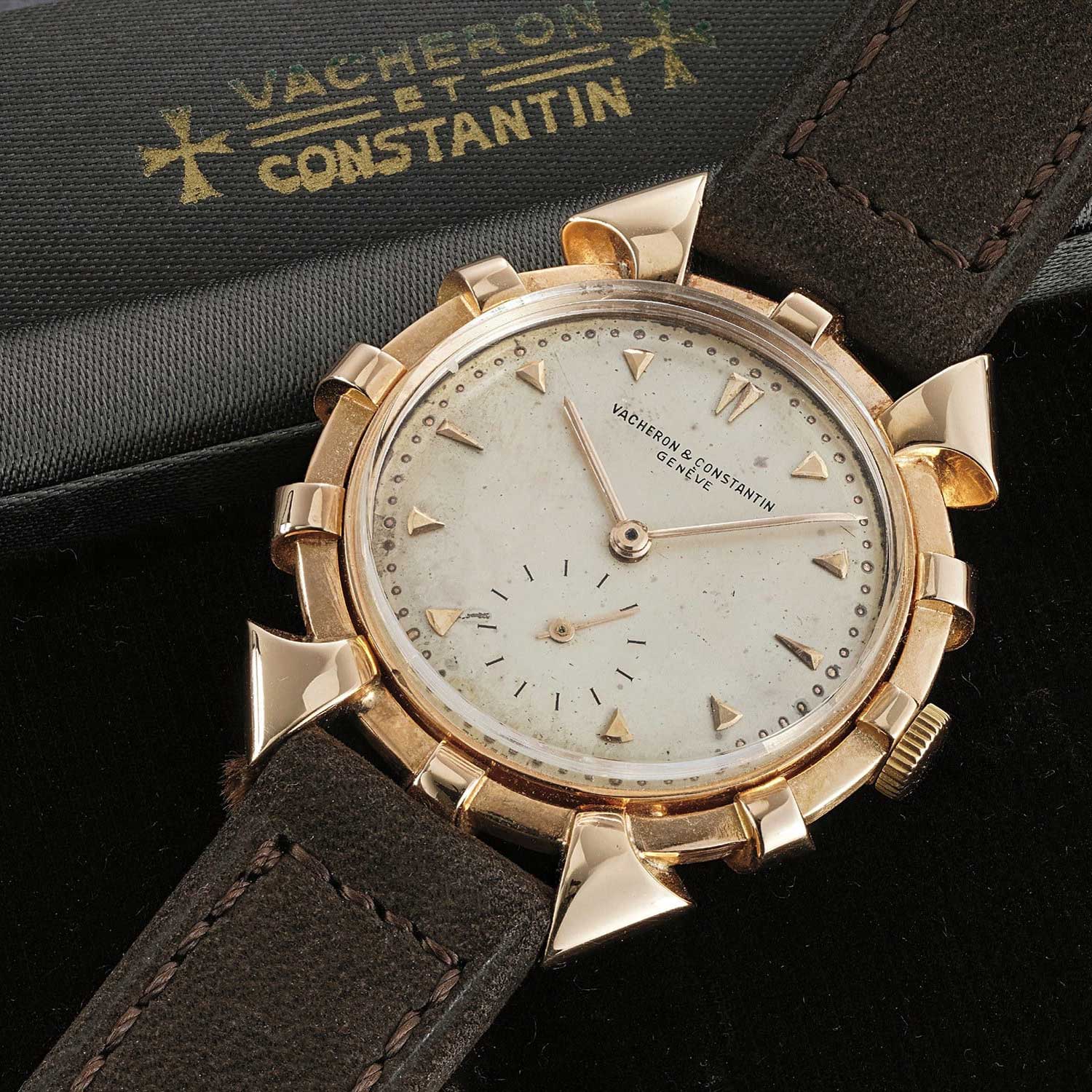
Nicknamed the "Helm" for its resemblance to a ship helm, the ref. 4709 from Vacheron Constantin boasts a case manufactured by C. Markowsky.(Image Phillips)
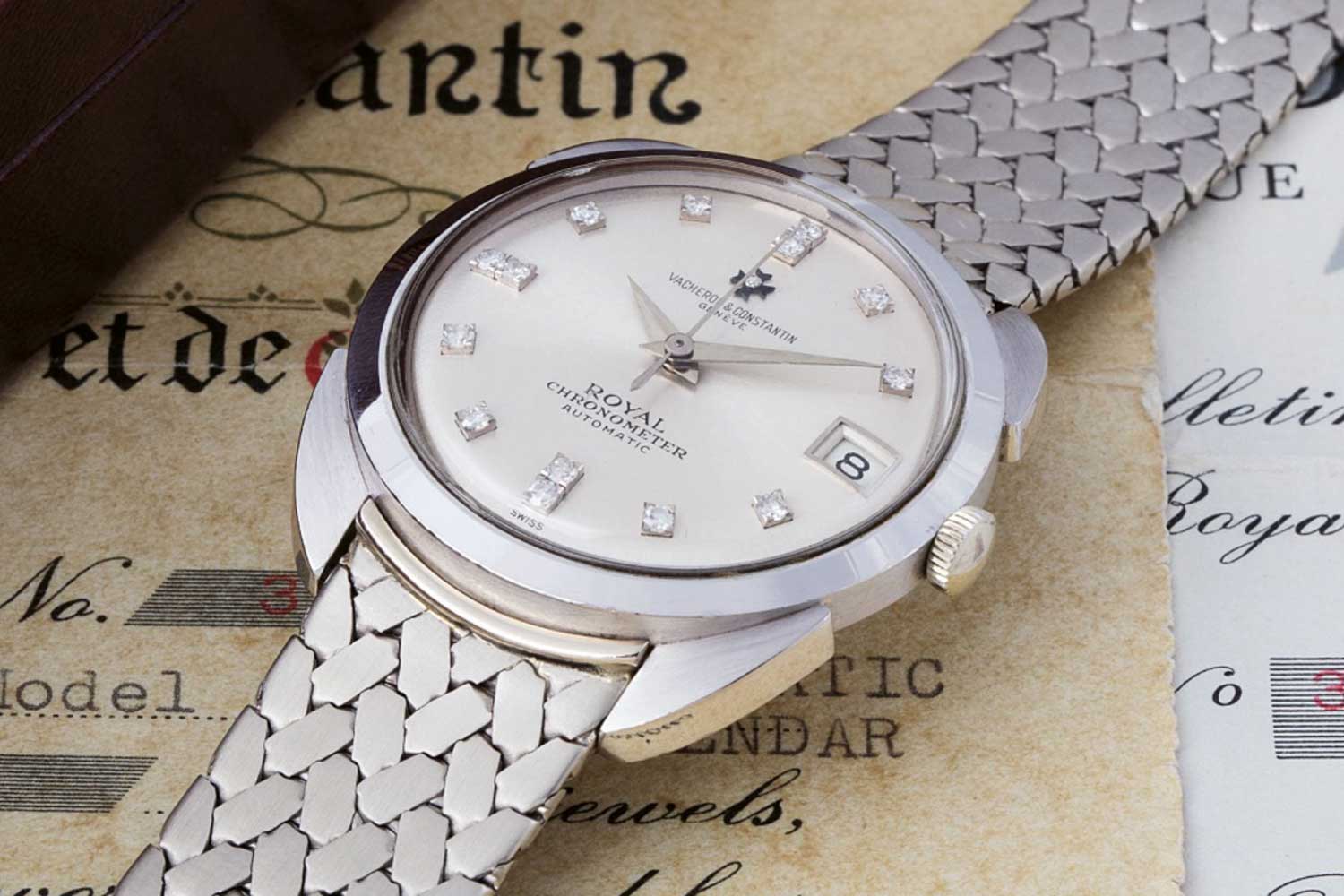
Vacheron Constantin ref. 6694 Chronomètre Royal “Batman” from 1963 (Image: Phillips)

Nick Foulkes with his Rolex King Midas (©Revolution)
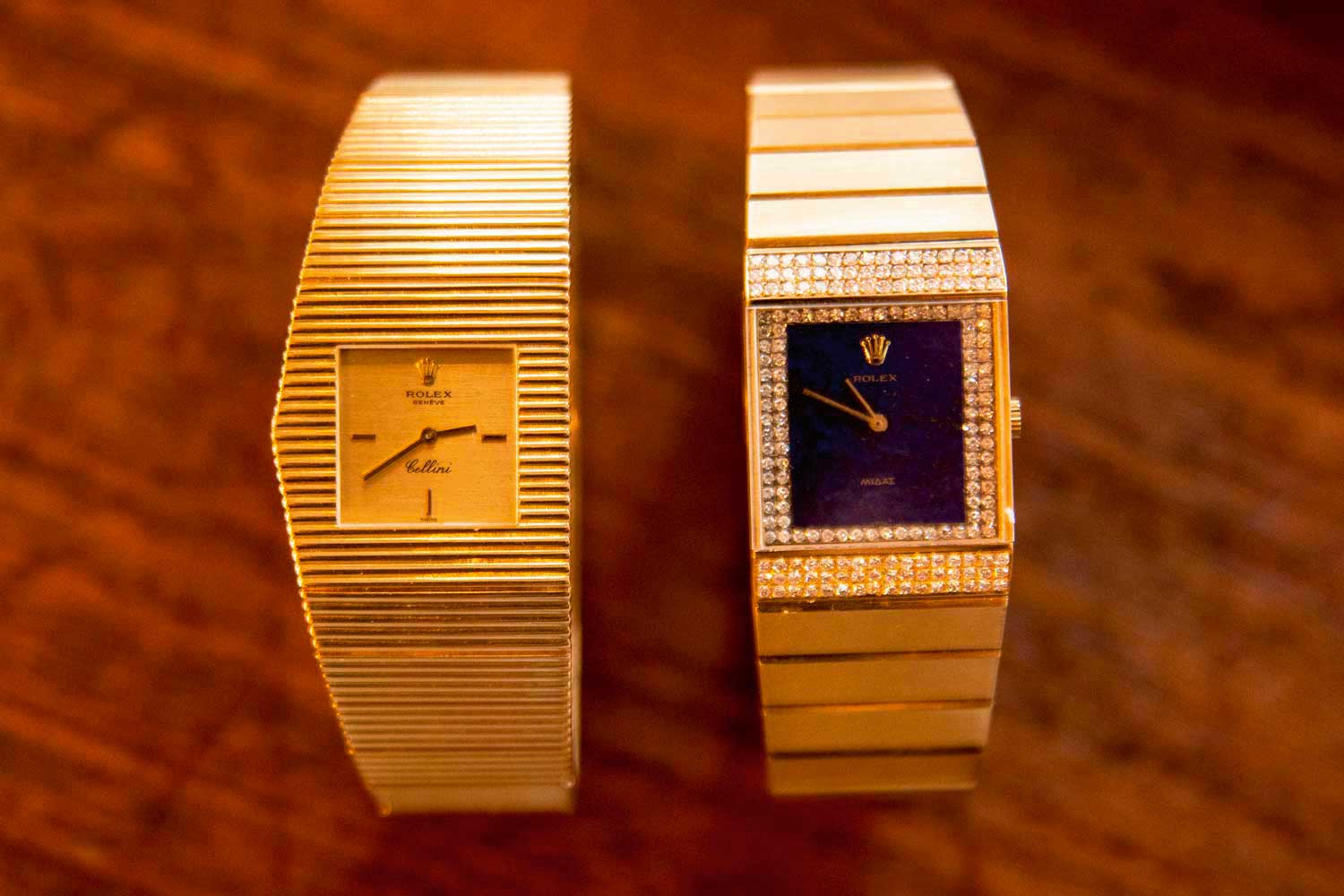
Later versions of the King Midas lost the asymmetrical case design, like the ref. 4611 (right) in yellow gold with lapis lazuli dial (©Revolution)
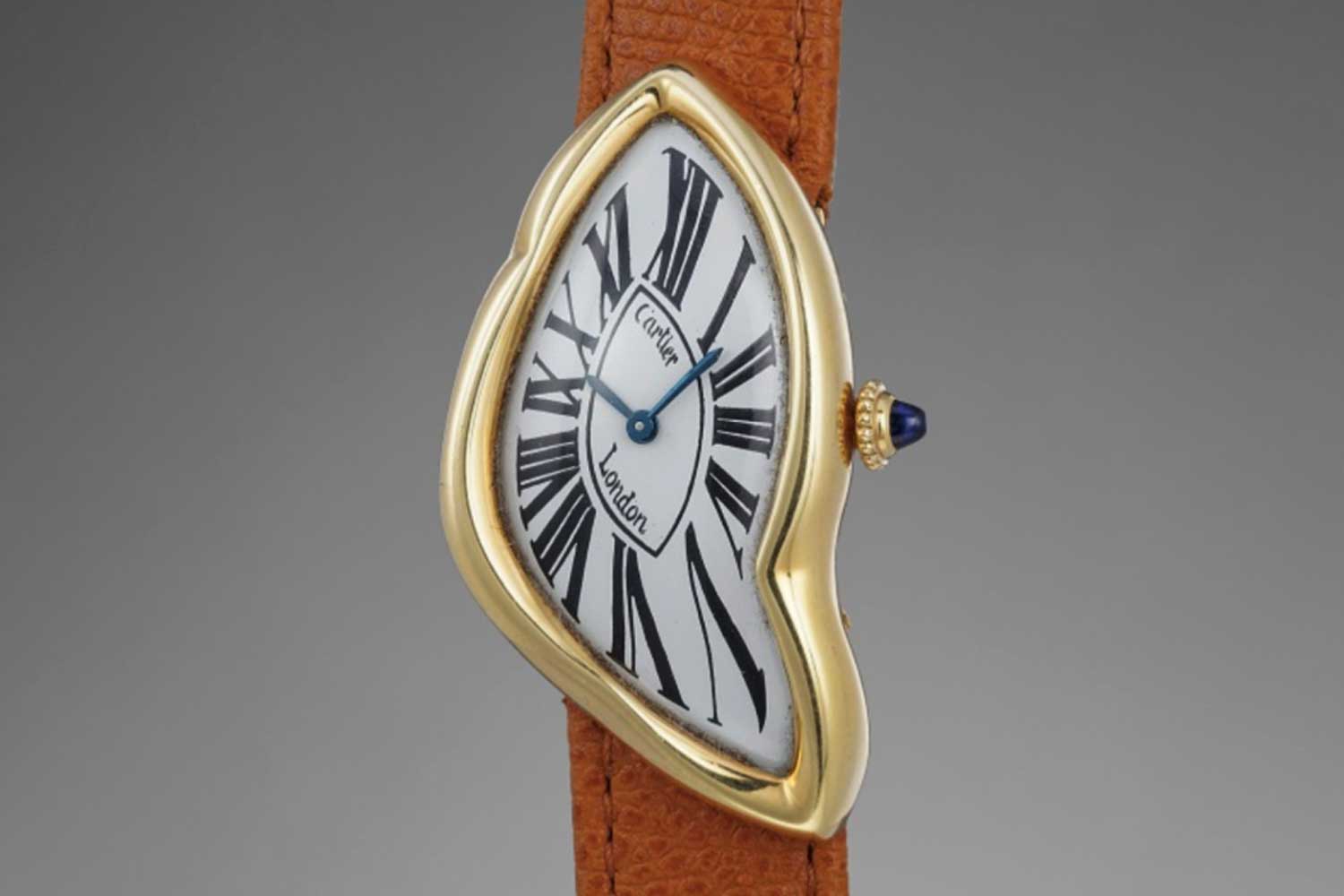
The original Cartier Crash from 1967
Casemakers: The Unsung Heroes of Watchmaking
Unlike these days, when an integrated manufacture is counted as one of the biggest milestones for a successful watchmaking firm, the era of shaped watches was dotted with extremely talented casemakers, dial makers and designers who would contribute to a brand as third parties. Traditionally, it wasn’t the designers but casemakers, who would dictate the design of a watch based on what they could manufacture in a certain quantity. With an exposure to changing trends and rising celebrities like Gilbert Albert in the field of design, casemakers took a backseat and were gradually relegated to a secondary role.
“Gilbert Albert’s asymmetrical watches and the legendary Golden Ellipse designed by Ateliers Réunis completely changed the industry and the techniques that casemakers eventually had to master. Besides C. Markowski, who made some of the most dramatic cases for Patek Philippe, there were others like Antoine Gerlach (known for his ‘Ricochet’ cases such as refs.788 and 789) and Eggly & Cie., who produced the three variations of the ‘Flying Saucer’ ref. 855, working with the brand,” says Tania Edwards.
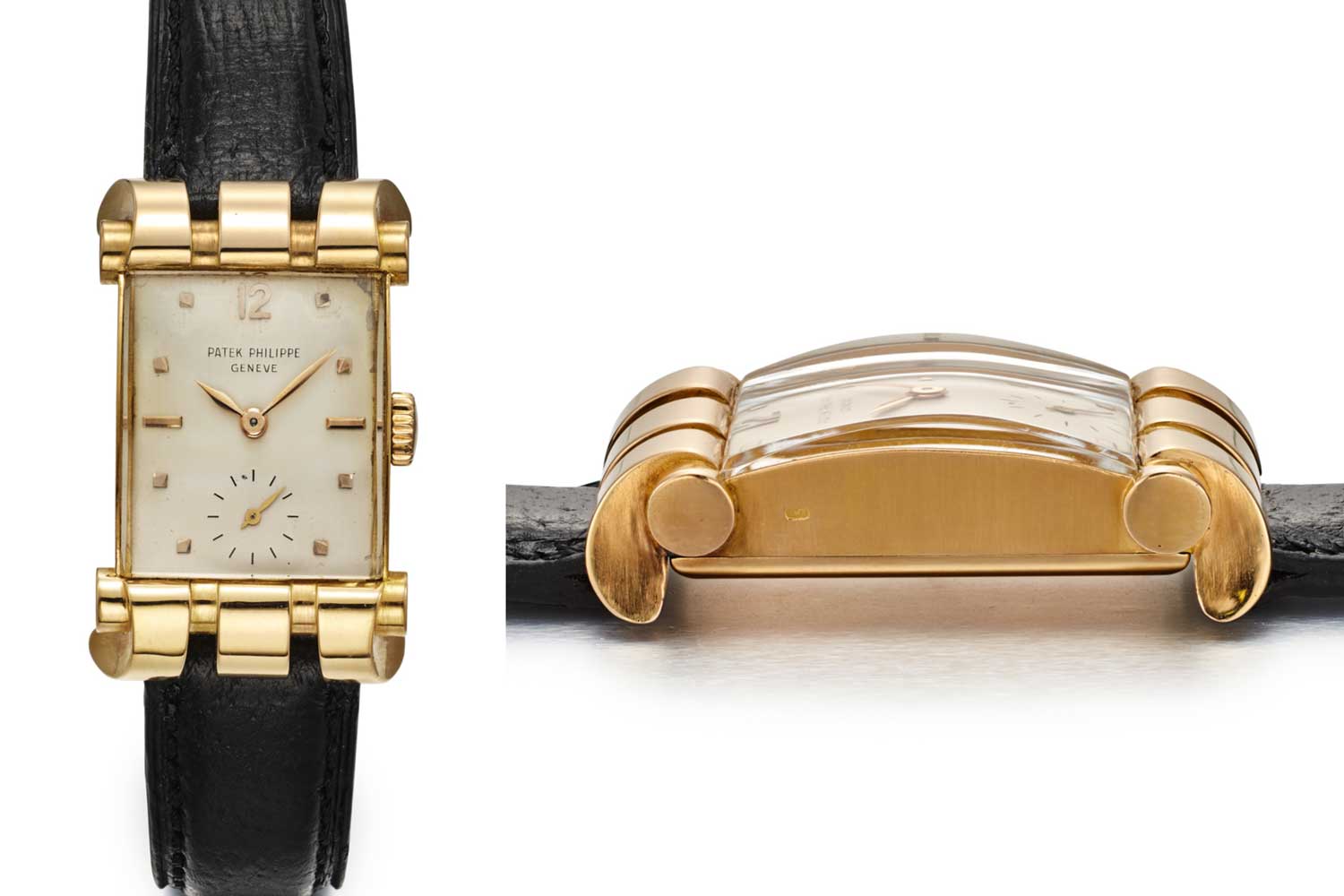
Introduced in 1950, Patek Philippe ref. 2471 was made for only a short three year period. Its “ram’s horns” or “bear claw” case was made by Markowski and it was one of the rarest and largest rectangular wrist watches produced by Patek Philippe at the time. (Image: Phillips)
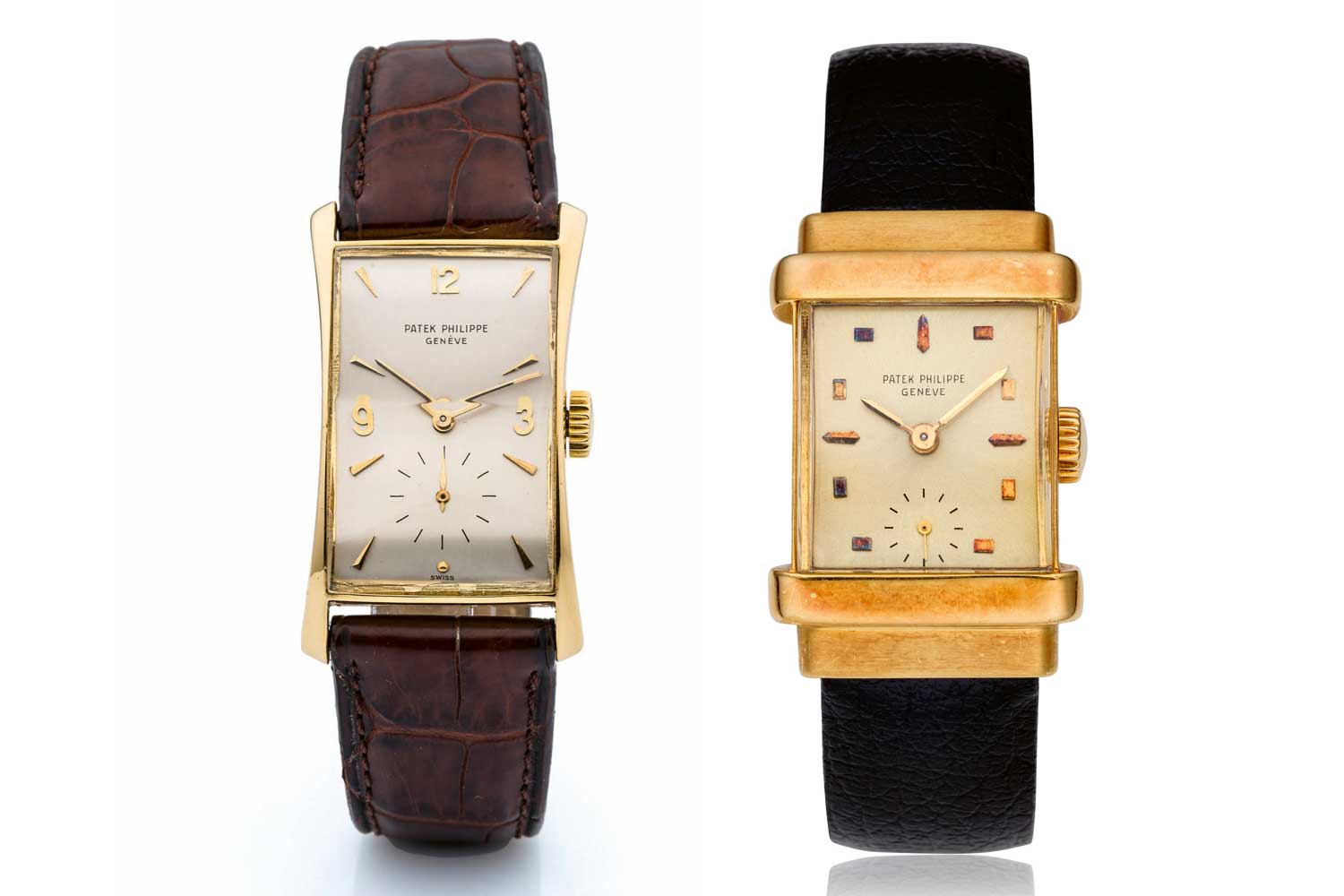
C. Markowski made some of the most dramatic cases for Patek Philippe. Seen here are the ref. 1450 or “Top Hat” (right) and ref. 1593 or “Hourglass” (Images: Collectability and Antiquorum)
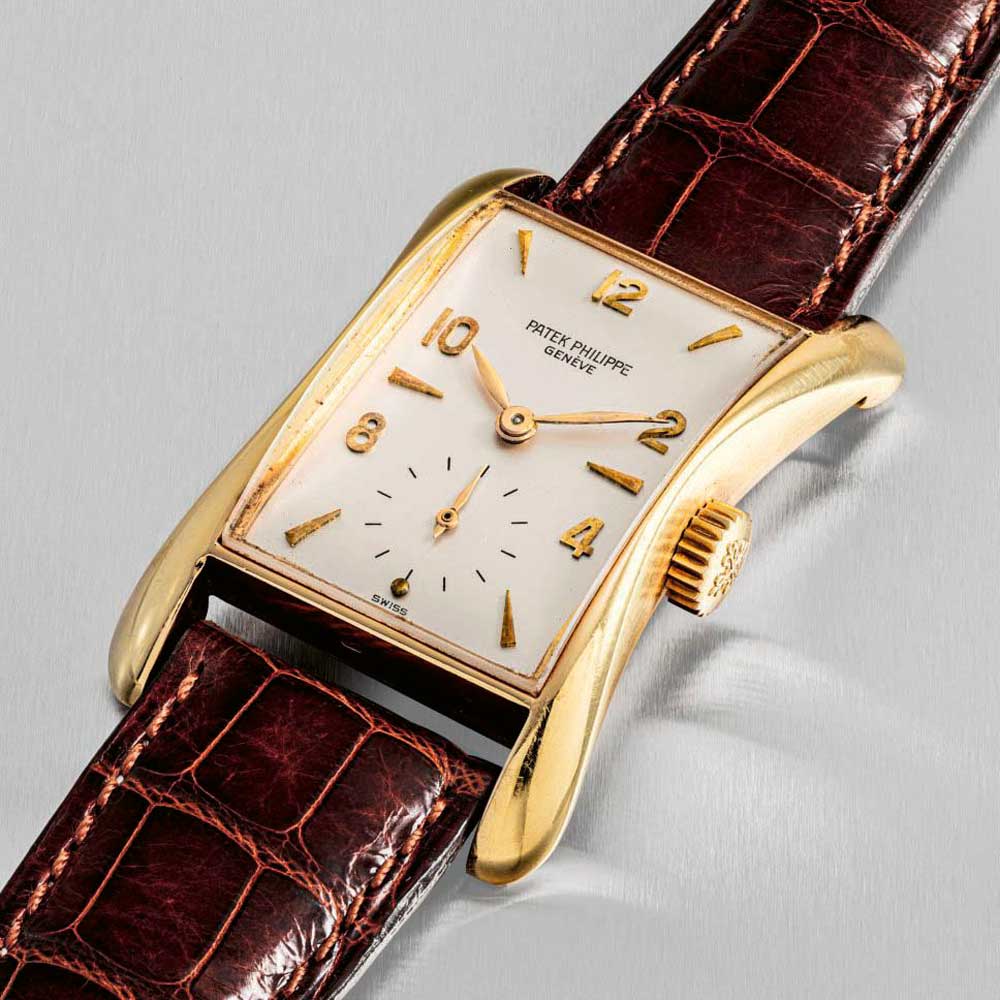
Markowski’s cases like the Patek Philippe ref. 2442 evoked sensuality and intrigue like no other.(Image: Christie’s)
Geneva and the watchmaking hamlets around it were home to a lot of gifted casemakers who worked closely with brands like Audemars Piguet and Vacheron Constantin. For instance, in the 1930s, Audemars Piguet was sourcing the steel cases for its chronographs from Georges Croisier. “We had Eggly designing our cases since 1909. In our archives, we have a beautiful two-tone minute repeater wristwatch in a cushion-shaped case done by him. Then there was Wenger in the 1930 and 1940s, who worked with teardrop lug shaped cases,” says Sébastian Vivas. Vacheron Constantin, too, worked closely with Eggly & Cie., Wenger and F. Baumgartner from Geneva.
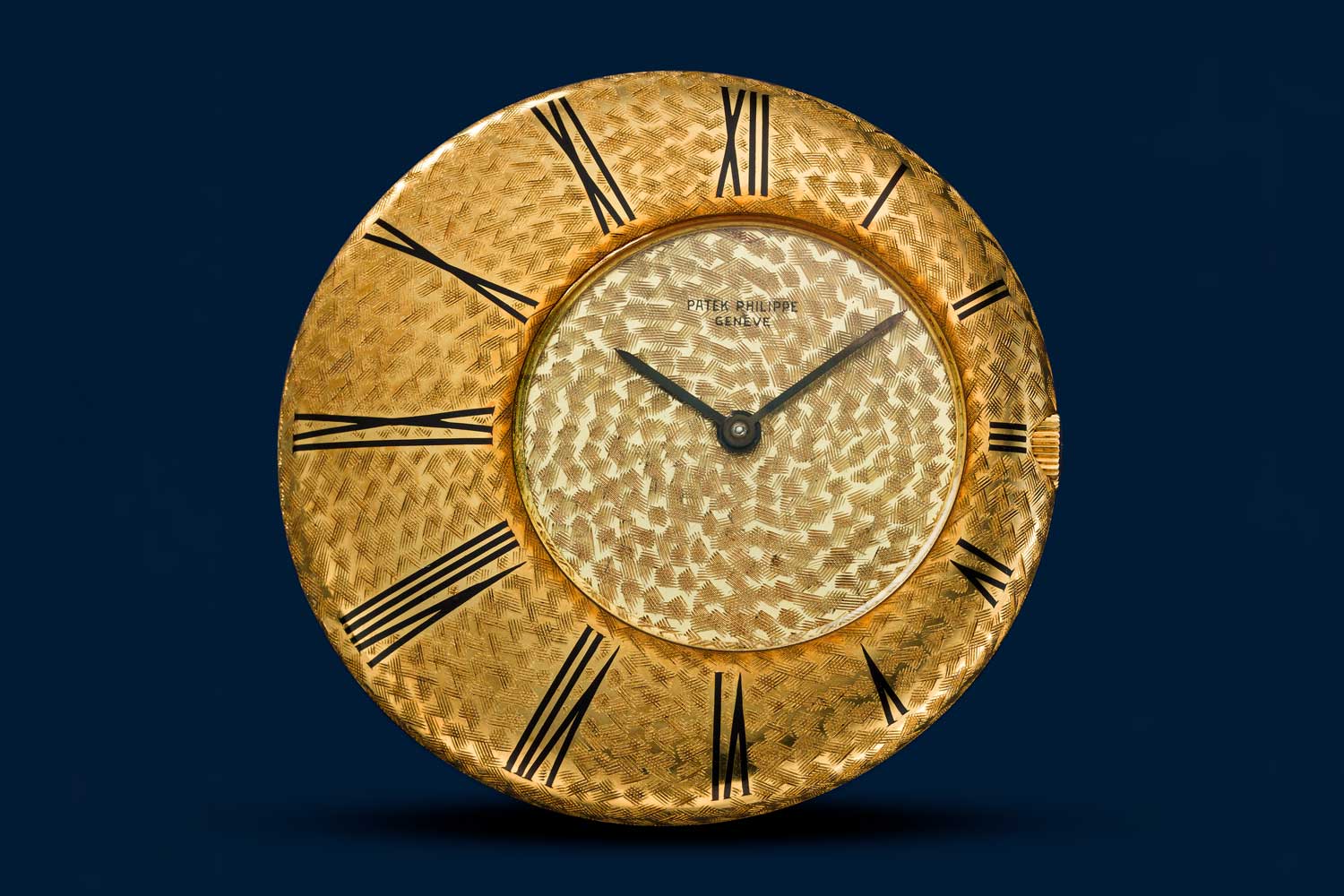
Antoine Gerlach designed ‘Ricochet’ cases like this ref.789 for Patek Philippe in the 1950s (Image: Collectability)
The 1970S and The Post-Quartz Era
Just a year before Seiko unveiled the world’s first quartz watch and hit Swiss watchmaking giants with an unprecedented crisis unfolding over the next decade, Patek Philippe introduced its most elegant shaped watch, the Ellipse, in 1968. “With its classic, elliptical shape based on the Golden Section principle of design, together with its blued gold dial, it truly is an example of a commercially successful shaped design,” says Edwards. Even with its simple, elliptical shape, the Ellipse made a style statement that was one up over all the other gold watches in the market. Its stunning cobalt blue dial and enduring shape made it an instant hit with collectors, who also invested in an array of “Ellipse” accessories like lighters, cufflinks, rings and even clocks.
As the global watch market started to flood with battery powered watches from Japan, the Swiss continued to resist the quartz onslaught with daring timepieces like the 1972 Prestige de la France watch from Vacheron Constantin and Audemars Piguet’s Royal Oak. Vacheron Constantin won the Prestige de la France award from the Comité de France in 1972 for its trapezoidal-shaped unisex watch powered by a tonneau-shaped calibre. Despite its austere dimensions (15.4mm × 13mm), the calibre offered efficient technical features such as a special balance wheel with no screws and an adjustable inertia. “The 1972 Prestige de la France watch from Vacheron Constantin is at once elegant and refined as well as fascinating due to its shape. Vacheron made a number of non-round watches even before the American 1921 was designed and they also added complications such as perpetual calendars, minute repeaters and the like to these form watches,” says Robert Esposito, an avid Vacheron Constantin collector and expert on vintage timepieces.
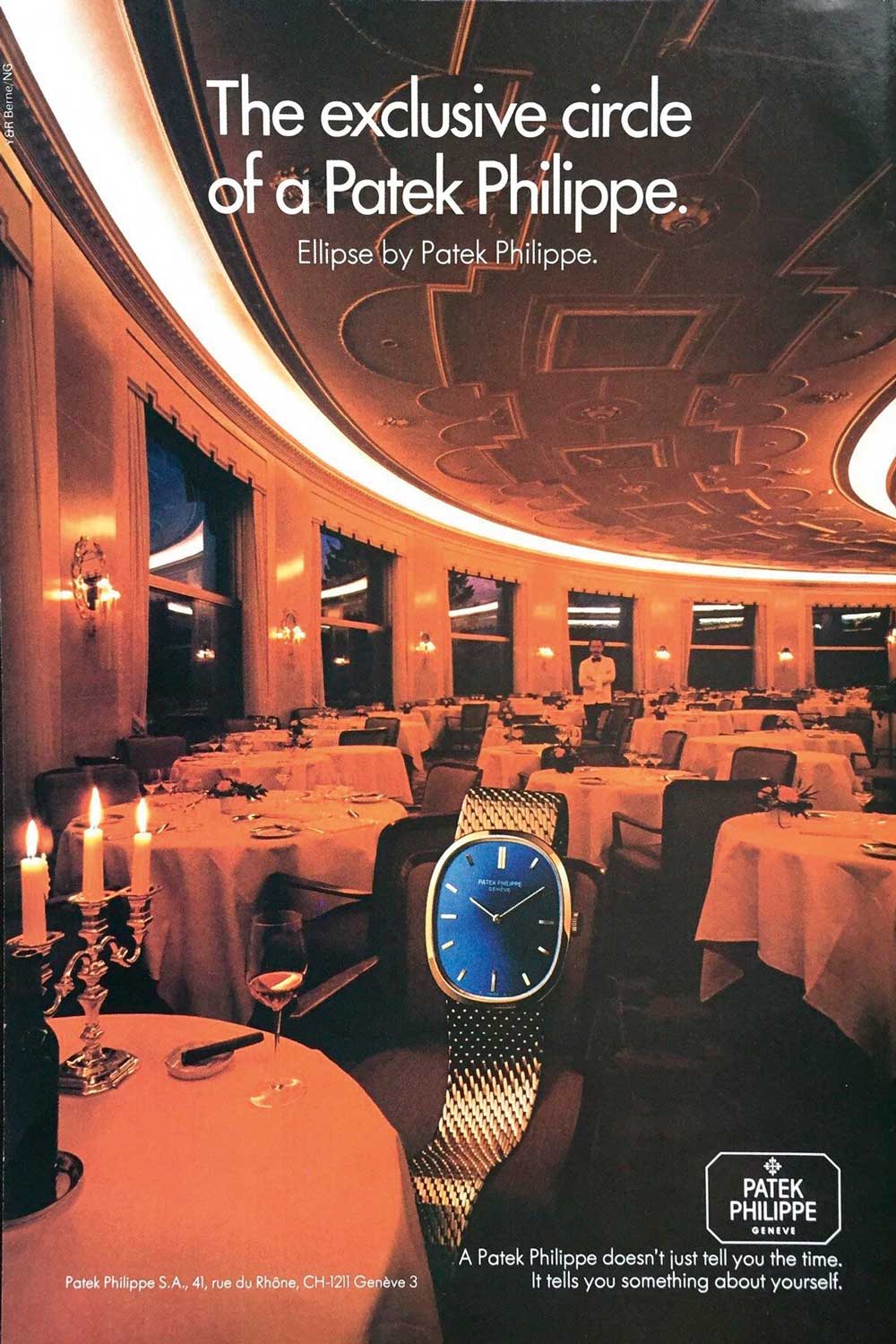
A vintage advertisement for Patek Philippe’s Golden Ellipse from the late 1960s
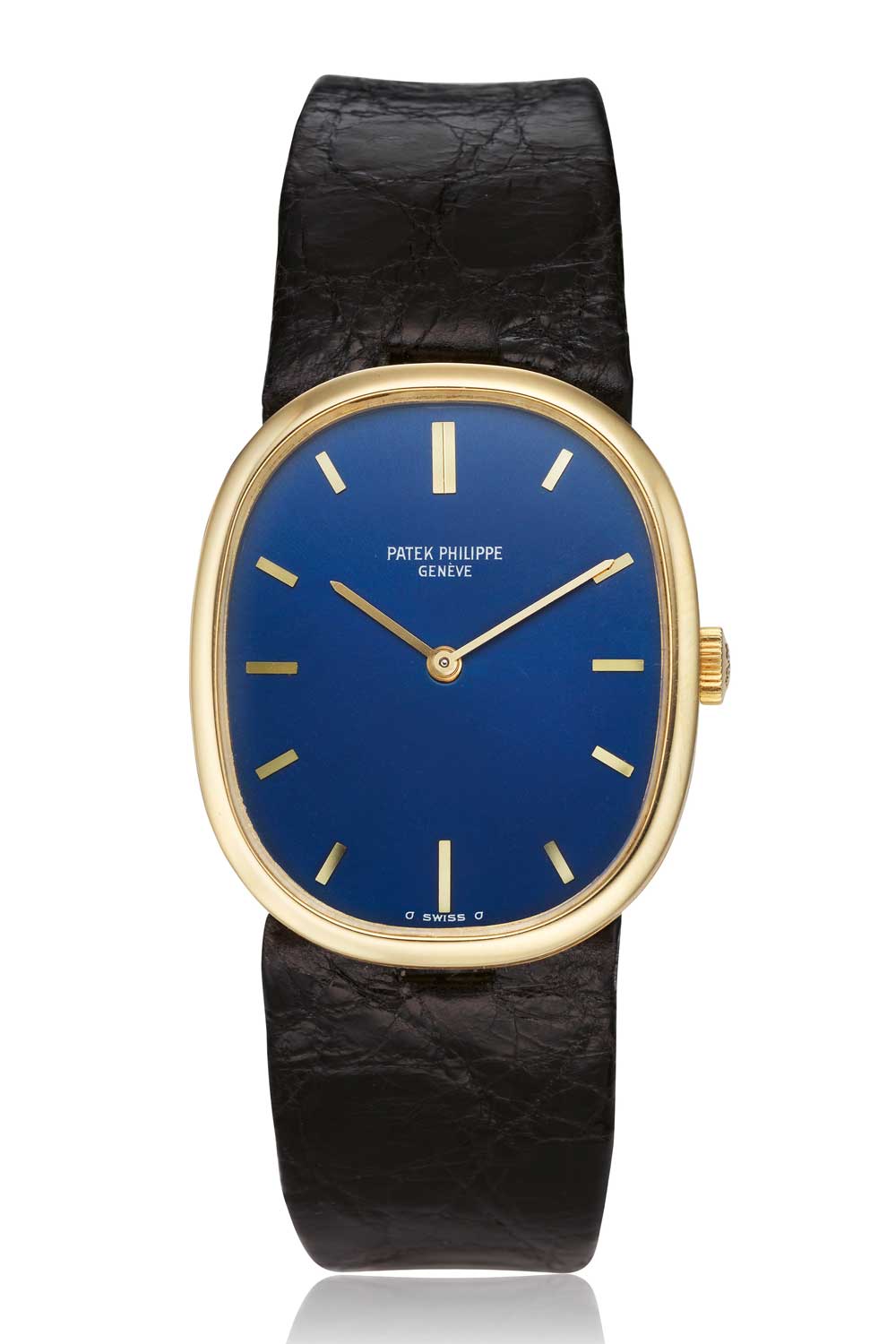
Even with its simple, elliptical shape, the Ellipse made a style statement that was one up over all the other gold watches in the market. (Image:Collectability)
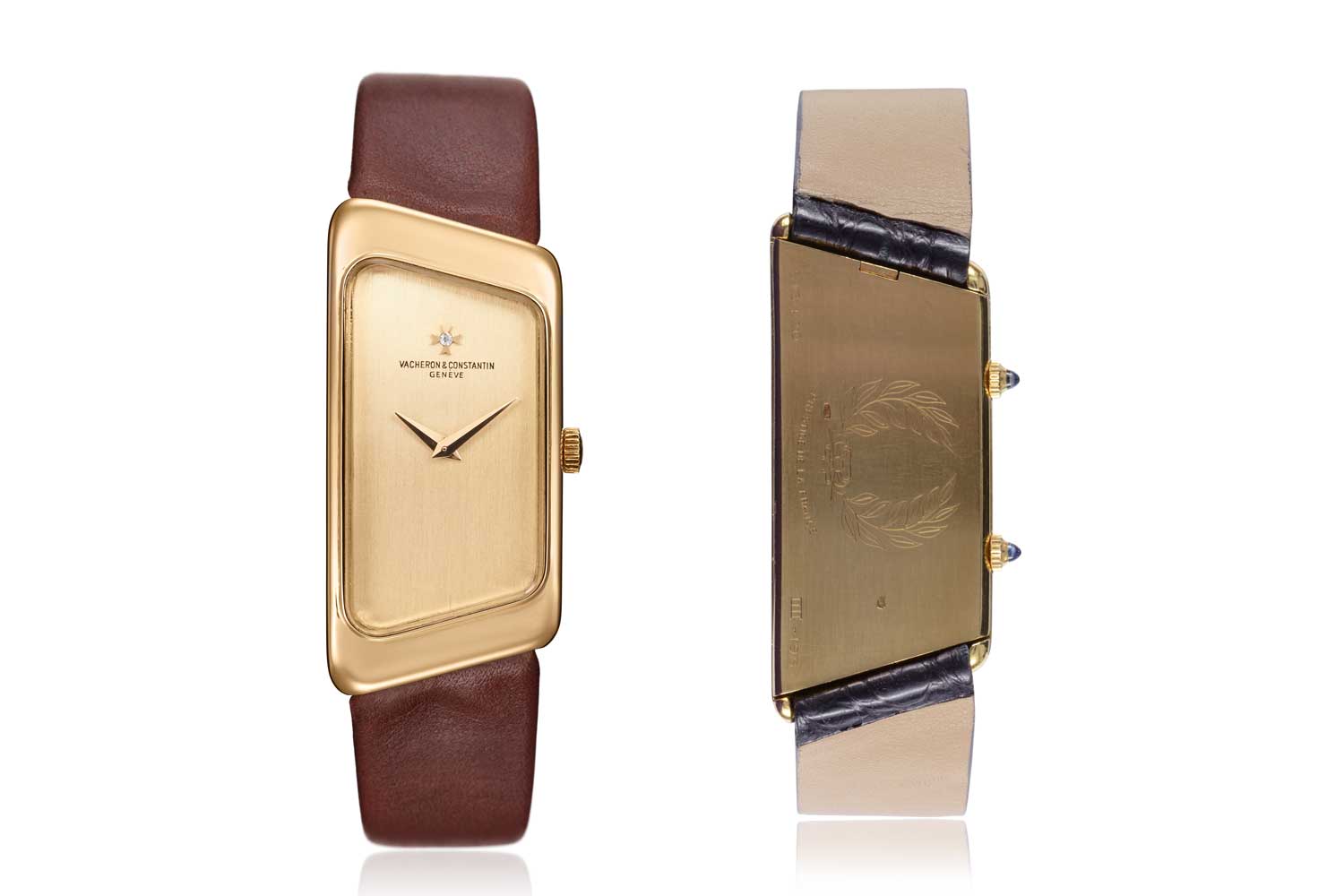
Vacheron Constantin won the Prestige de la France award from the Comité de France in 1972 for this trapezoidal-shaped unisex watch powered by a tonneau-shaped calibre.
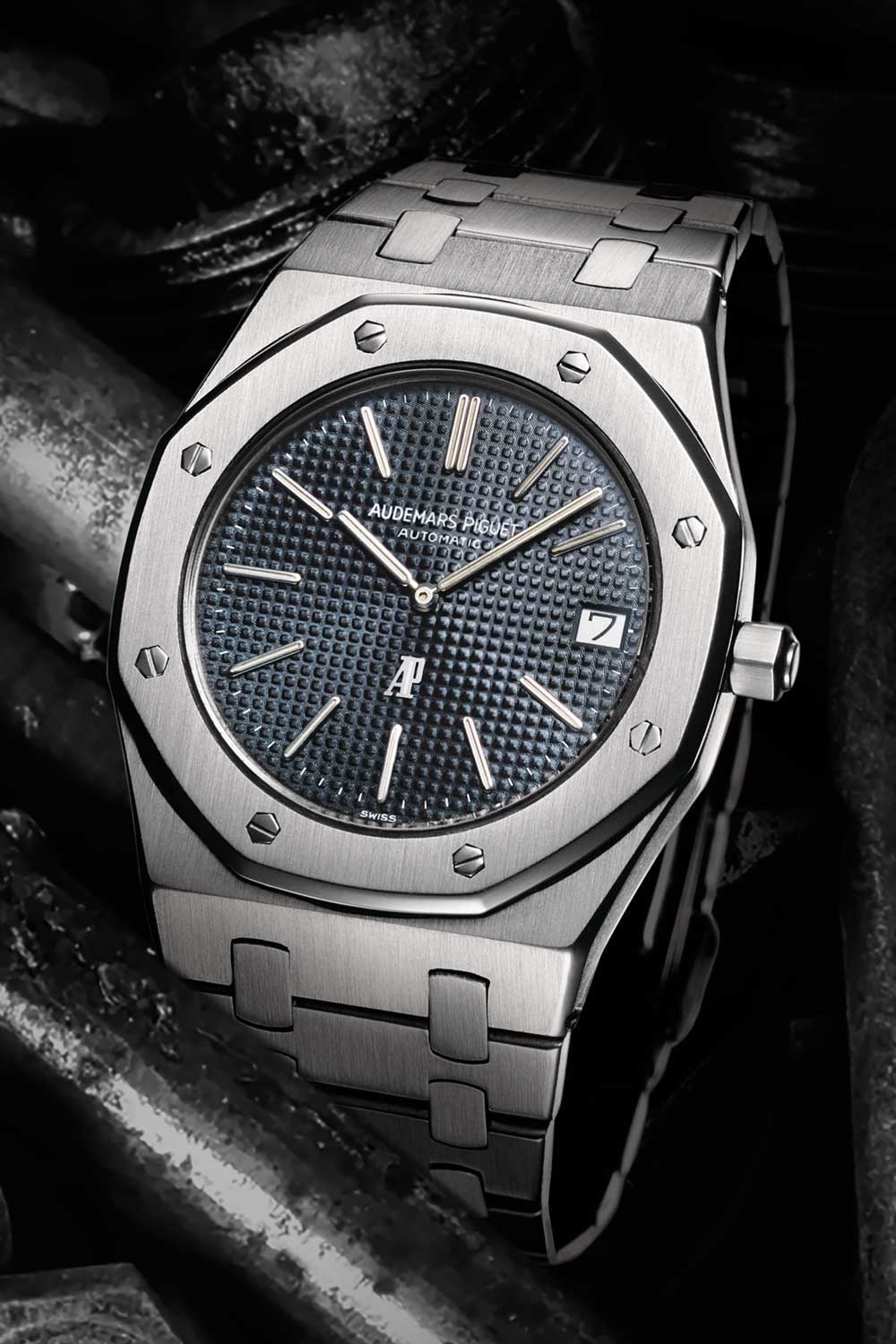
Gérald Genta ushered in the concept of a luxury sports watch in steel with the Audemars Piguet Royal Oak in 1972
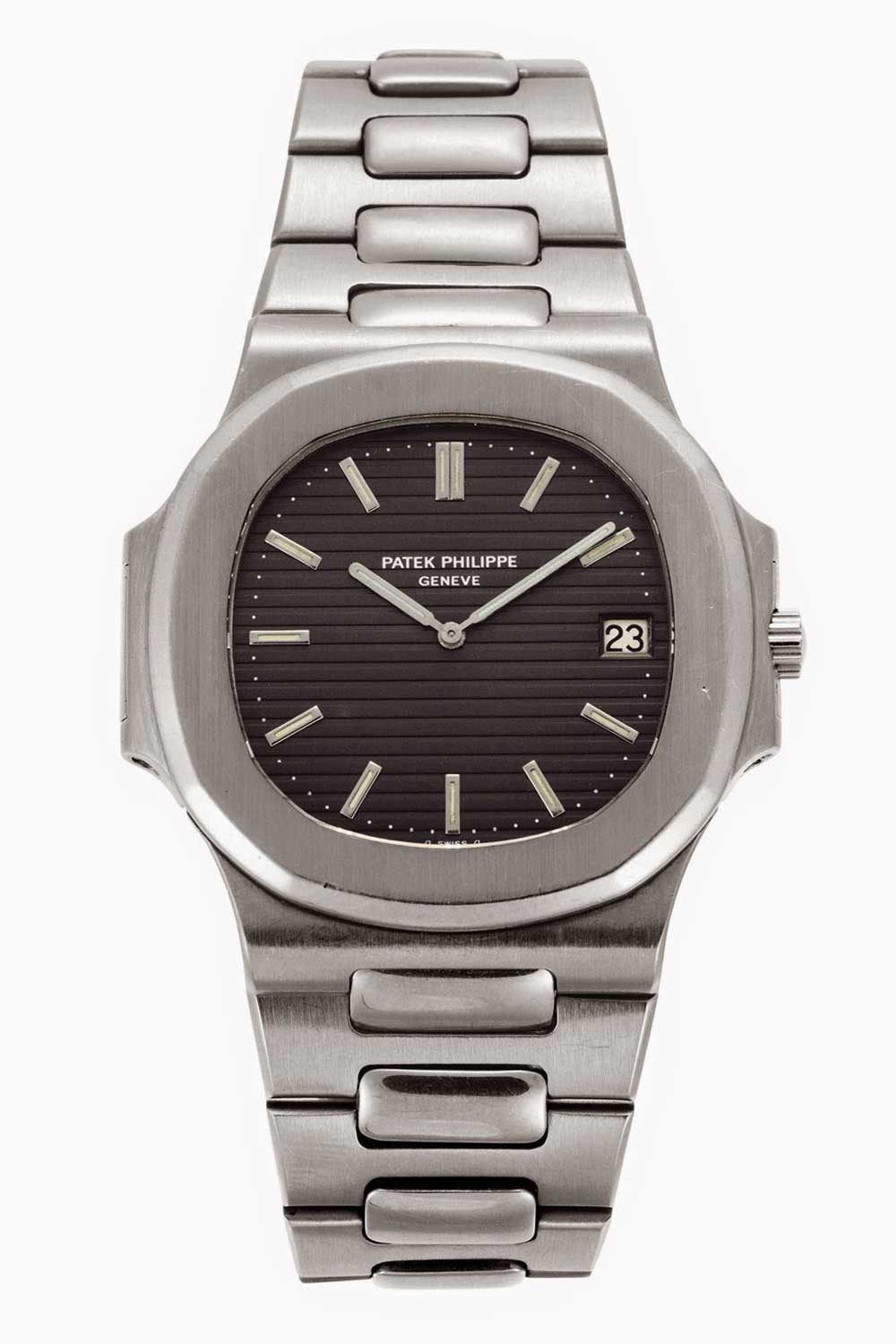
Original Patek Philippe Nautilus reference 3700/1 - 1976
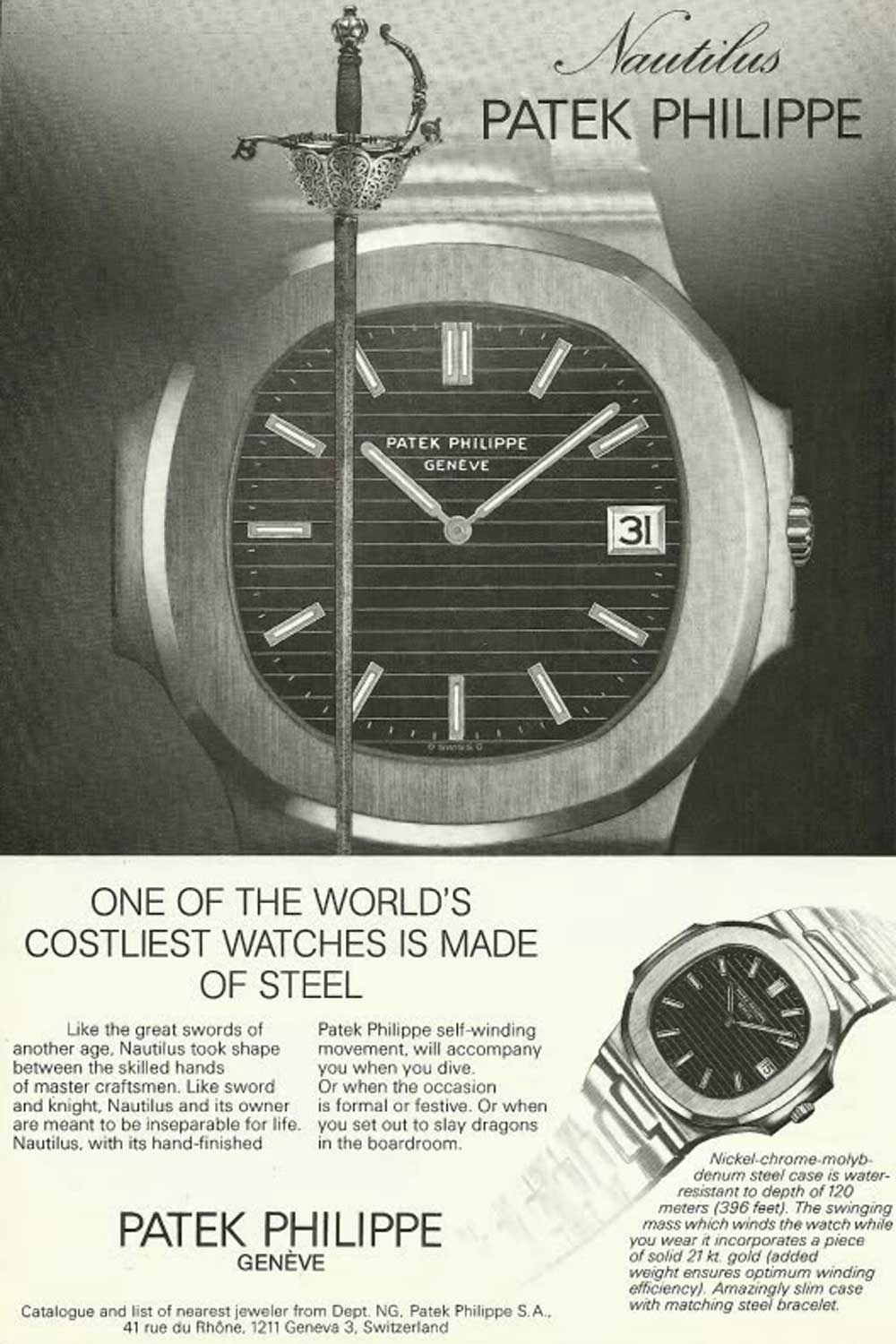
An old ad for Patek Philippe Nautilus ref. 3700
Shaped Watches: Then and Now
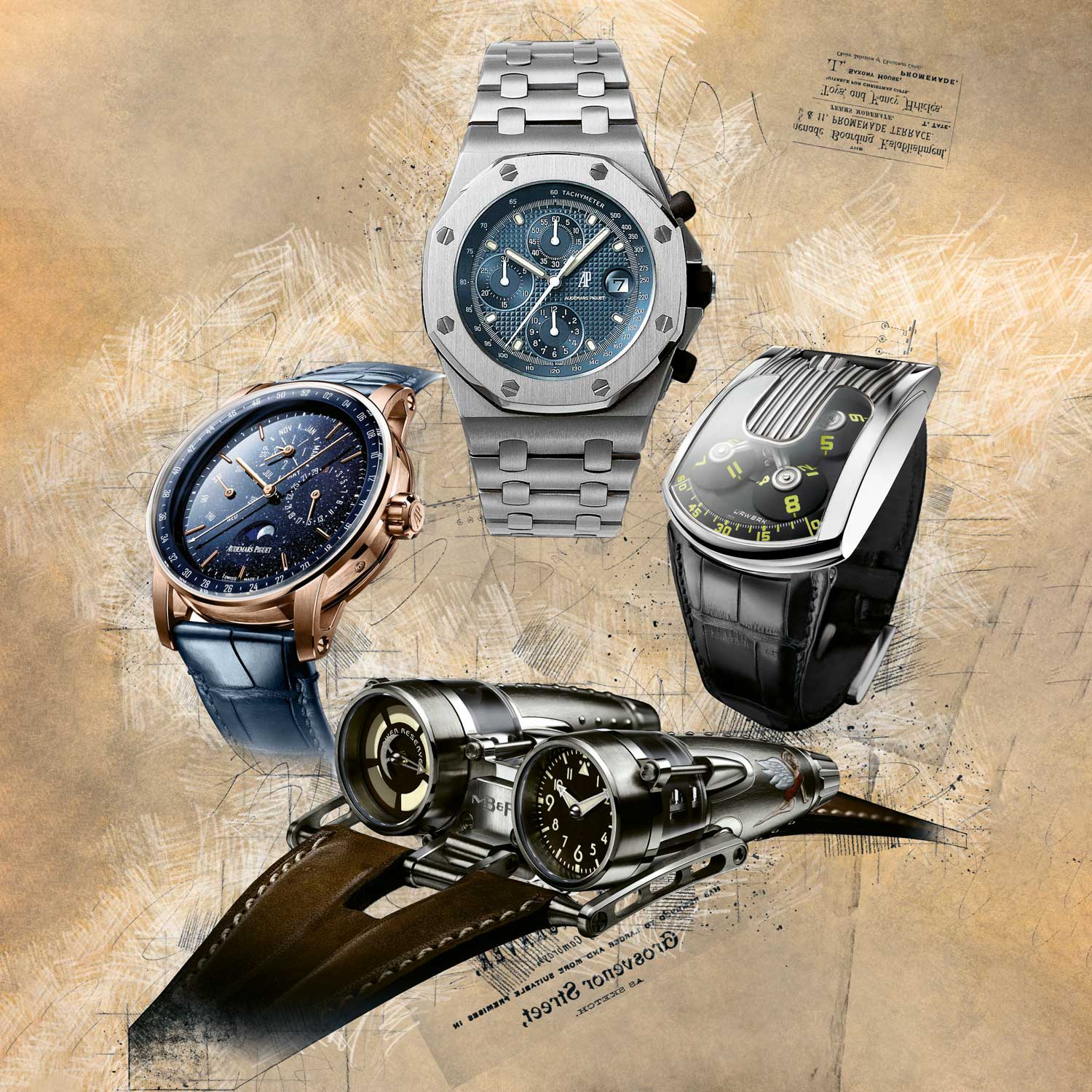
Clockwise from top: Audemars Piguet Royal Oak Offshore from 1993; Urwerk UR‐103.09 launched in 2008; MB&F HM4 Razzle Dazzle; Audemars Piguet CODE 11.59
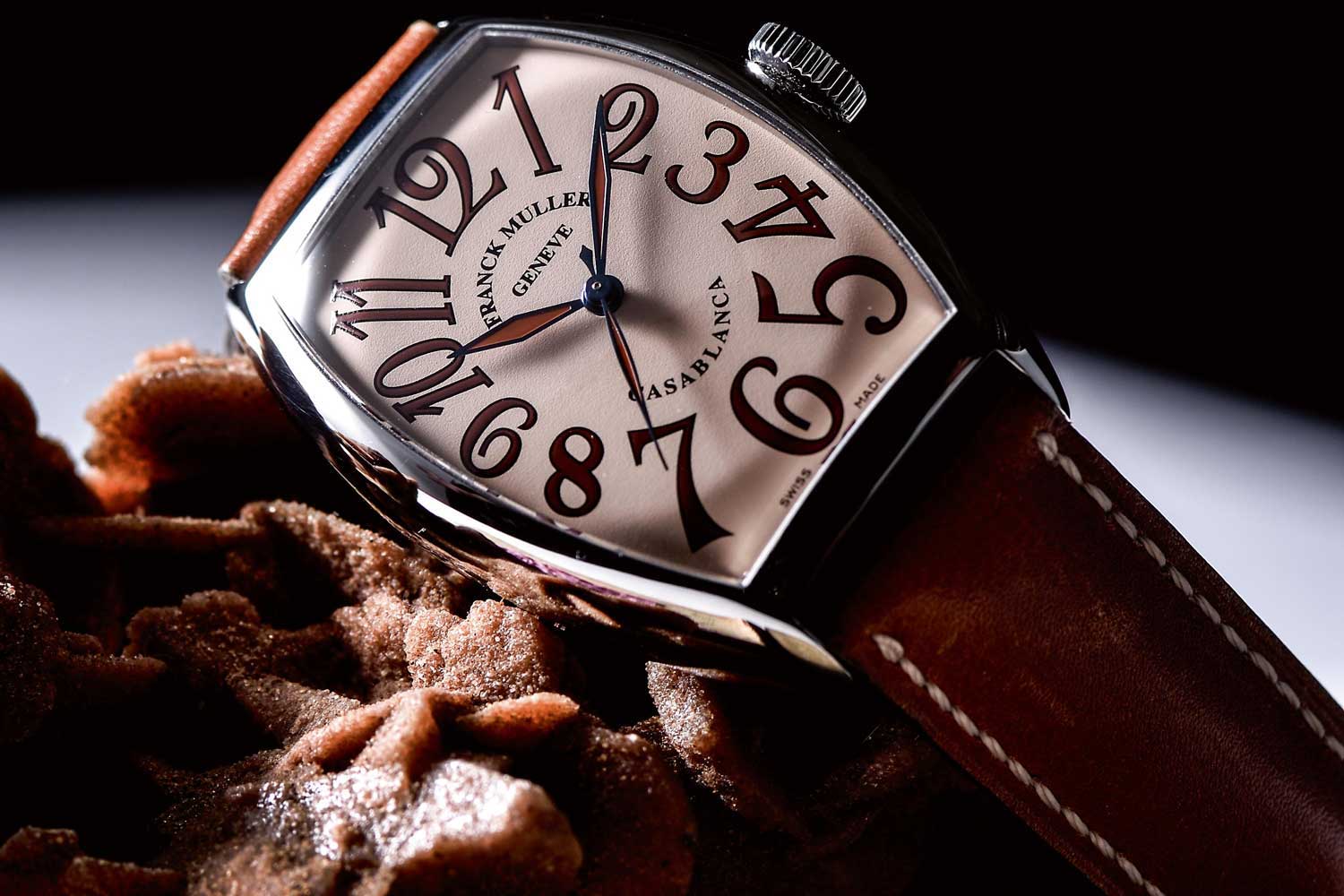
Franck Muller Casablanca Salmon Pink Dial from 1992
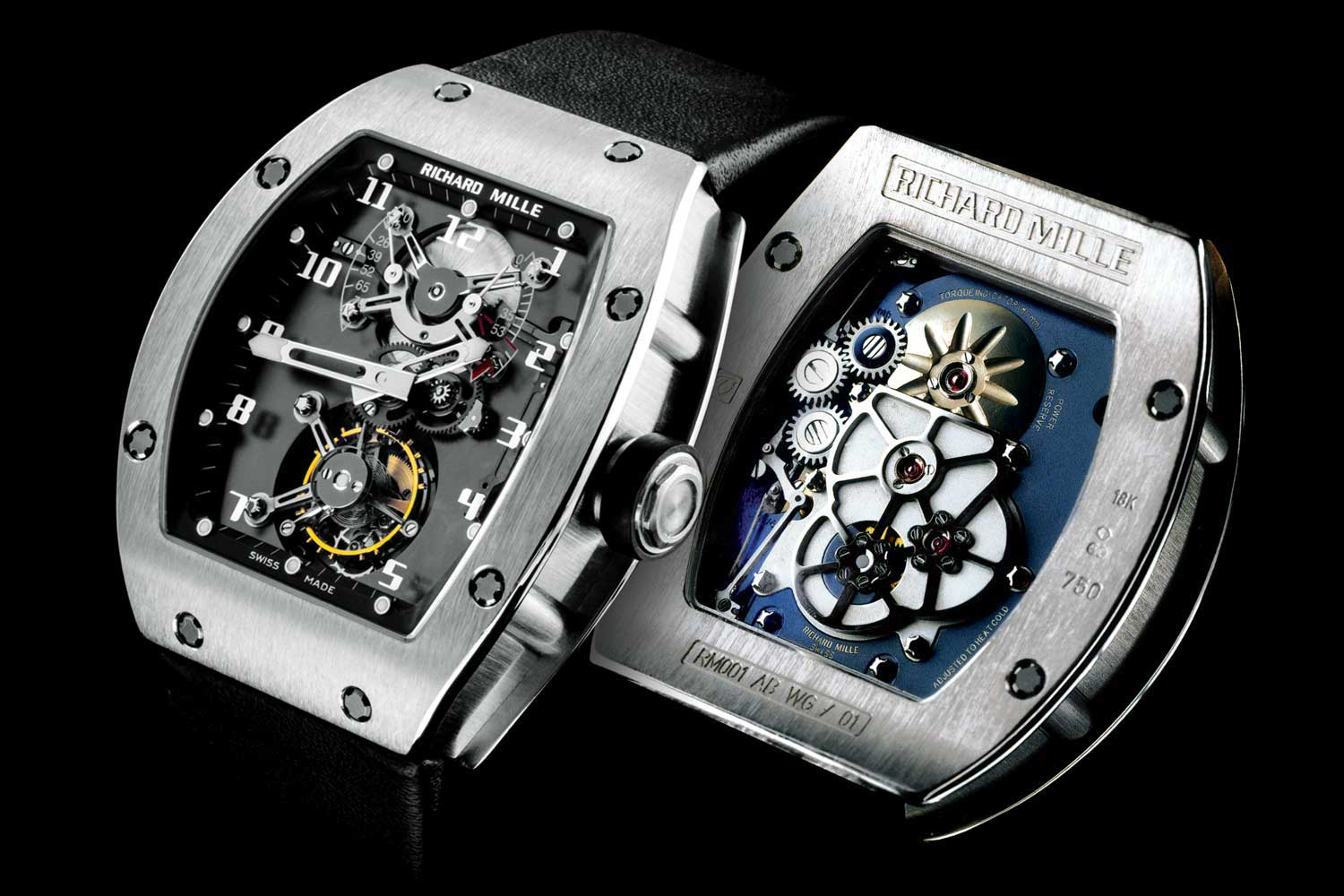
When introduced in 2001, the RM 001 presented a technical and aesthetic approach that was earth shattering in the watchmaking industry
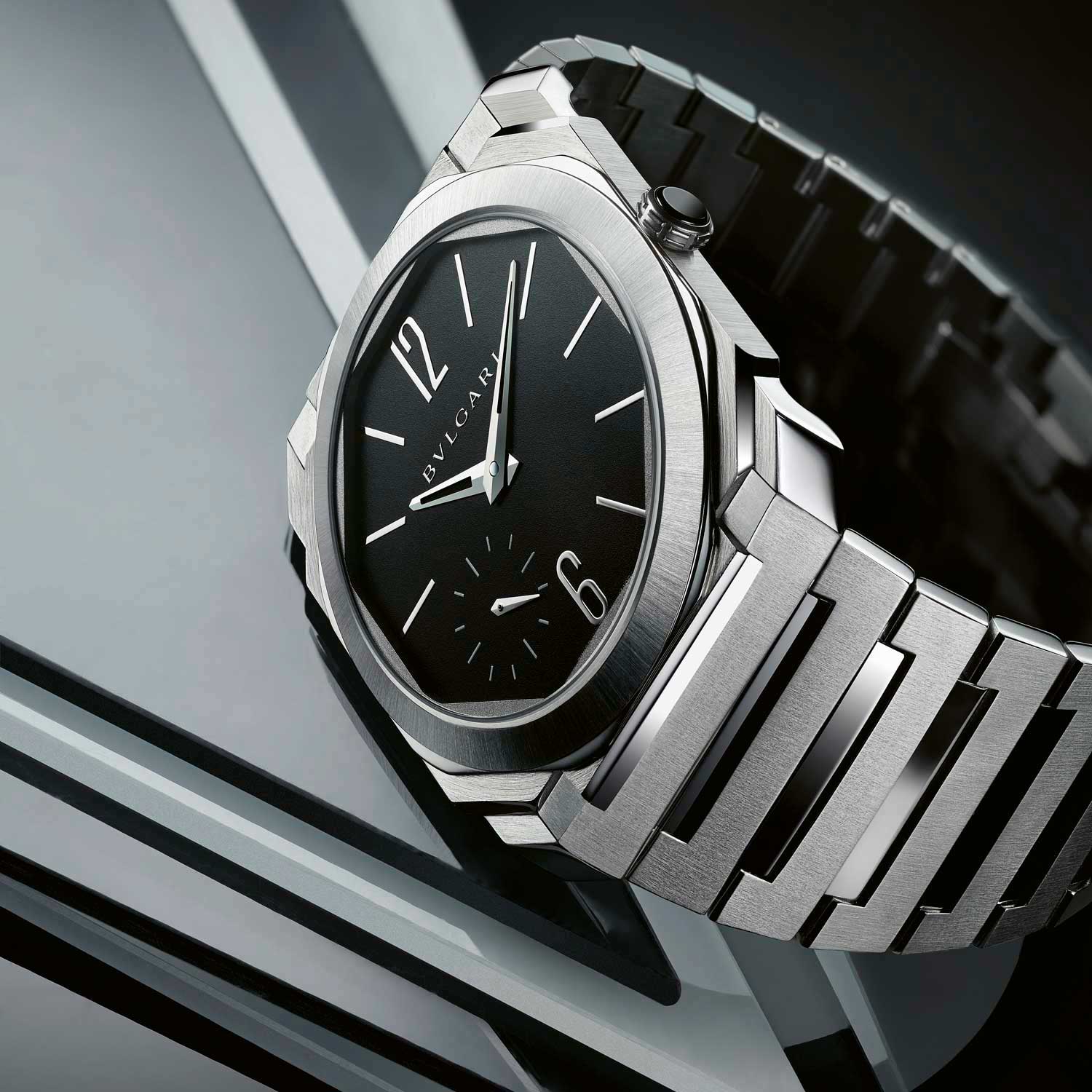
The Bvlgari Octo Finissimo is a contemporary icon in the integrated bracelet, sports chic watch category.
Says Tania Edwards, “I recently attended the Sotheby’s Important Watch auction in New York where a Cartier Crash, circa 1991, sold for over USD 100,000. Such a high price at auction indicates the serious interest in these shaped watches, and it will be interesting to see how the market continues. Gilbert Albert’s asymmetrical ref. 3424s are now selling for several hundred thousand dollars. I’m sure both Gilbert Albert and Henri Stern would be thrilled!










